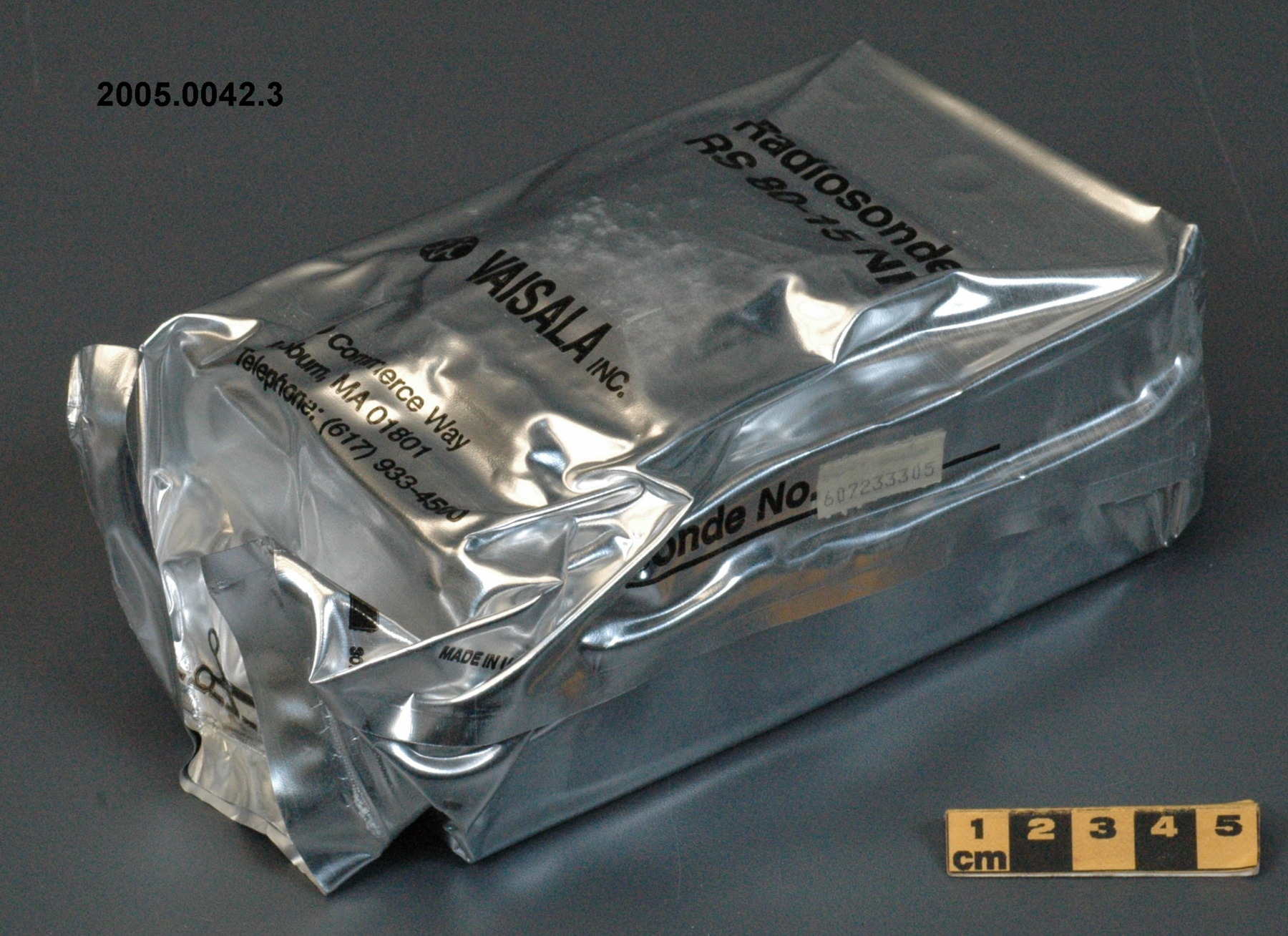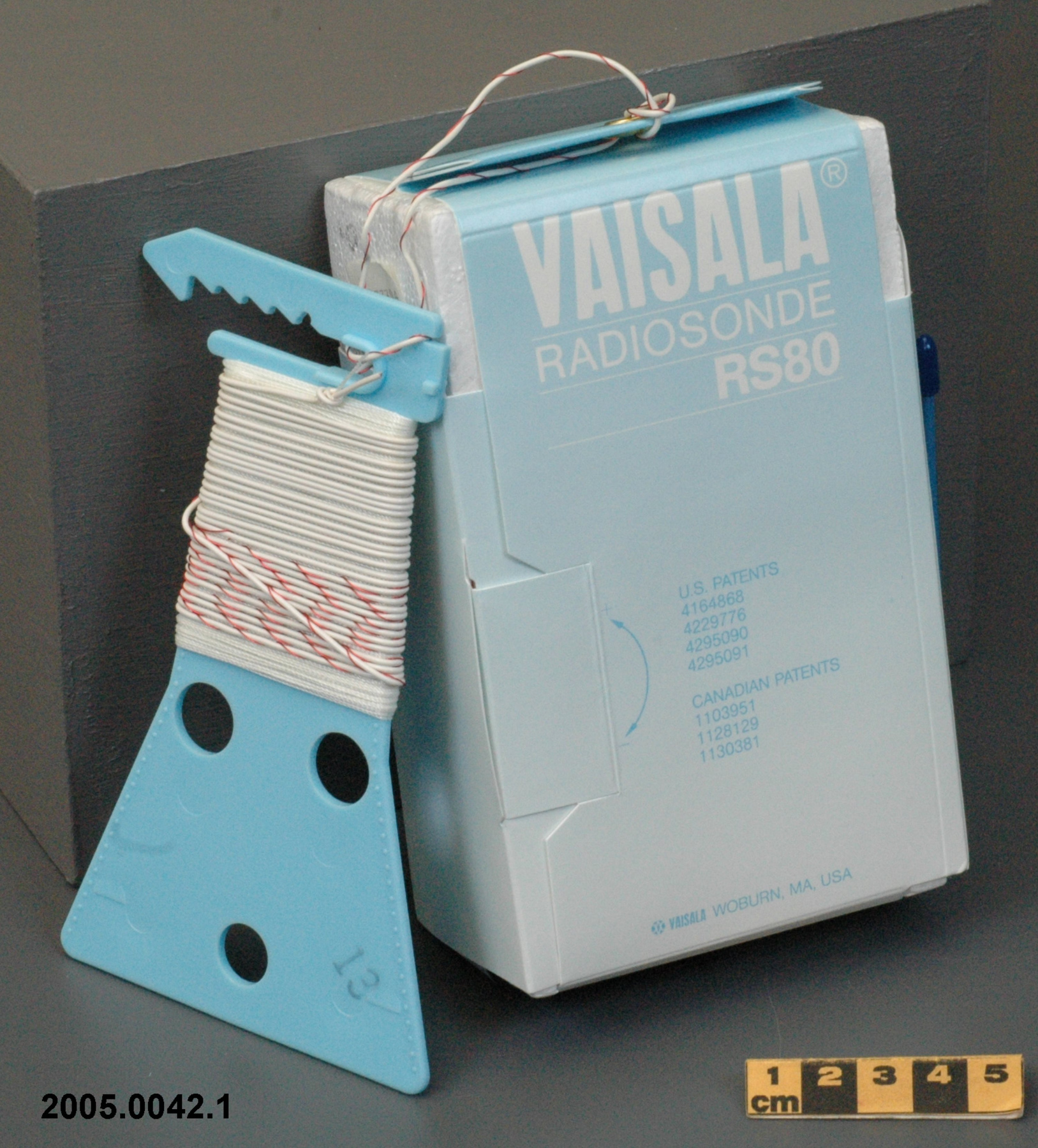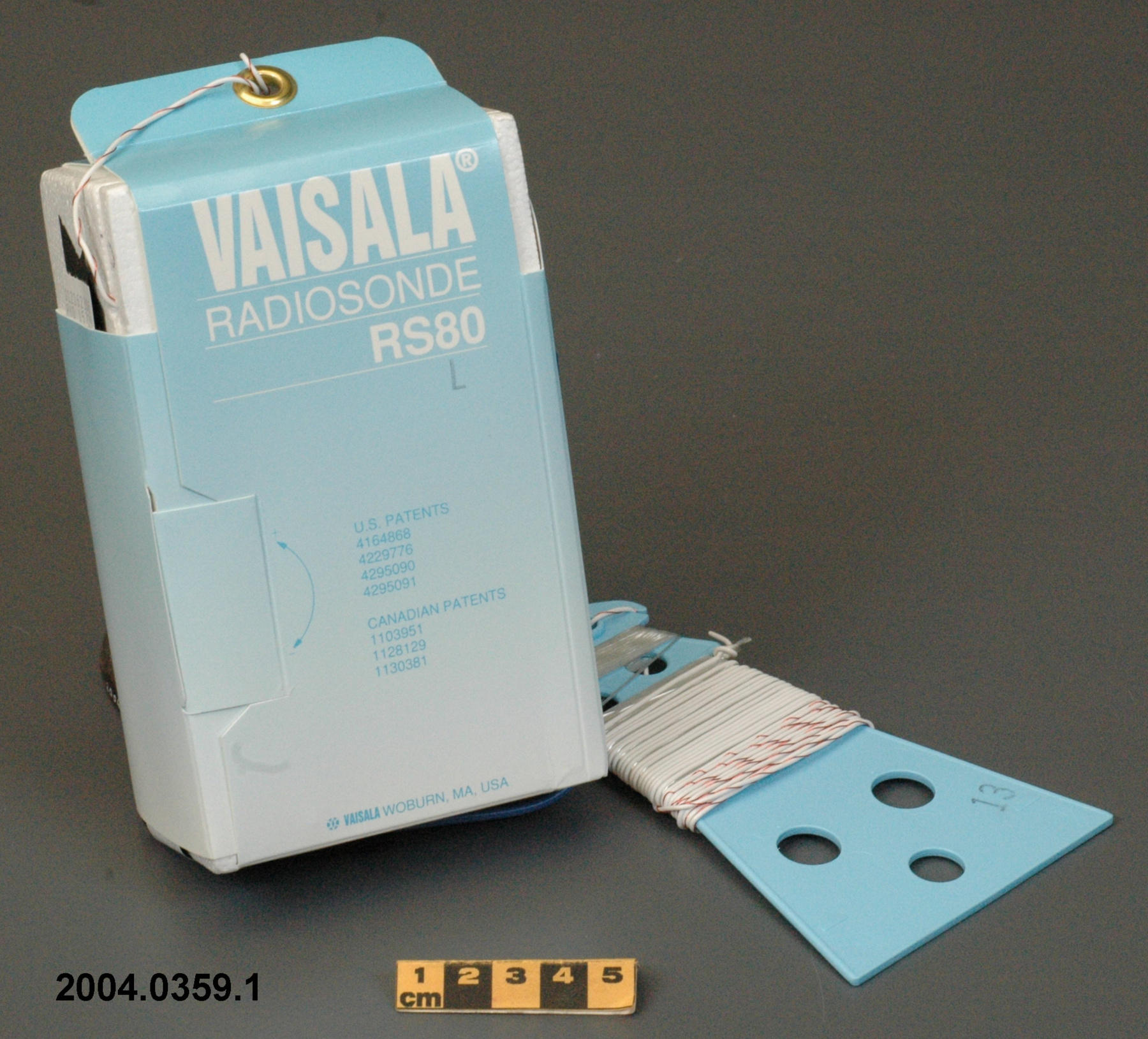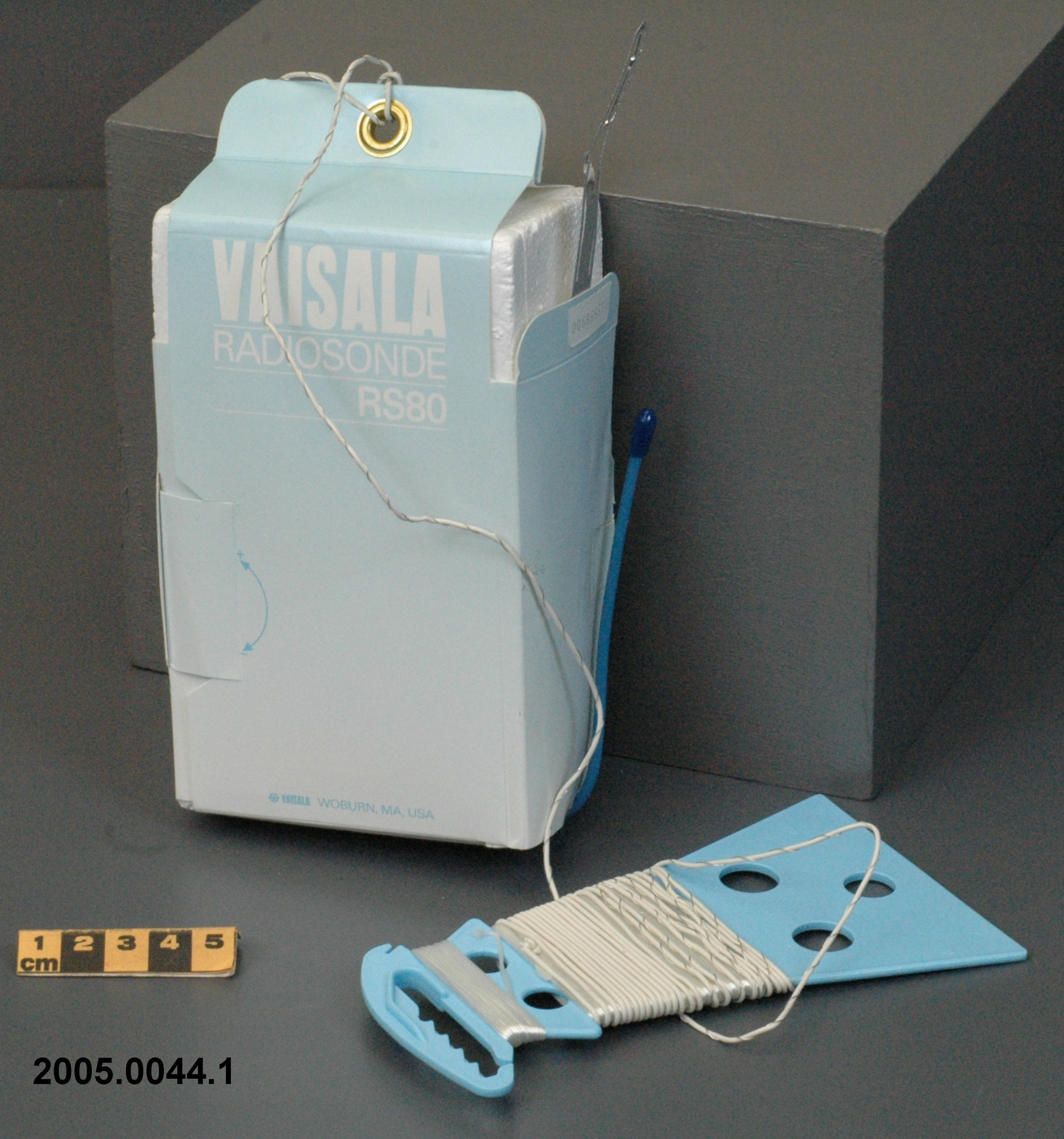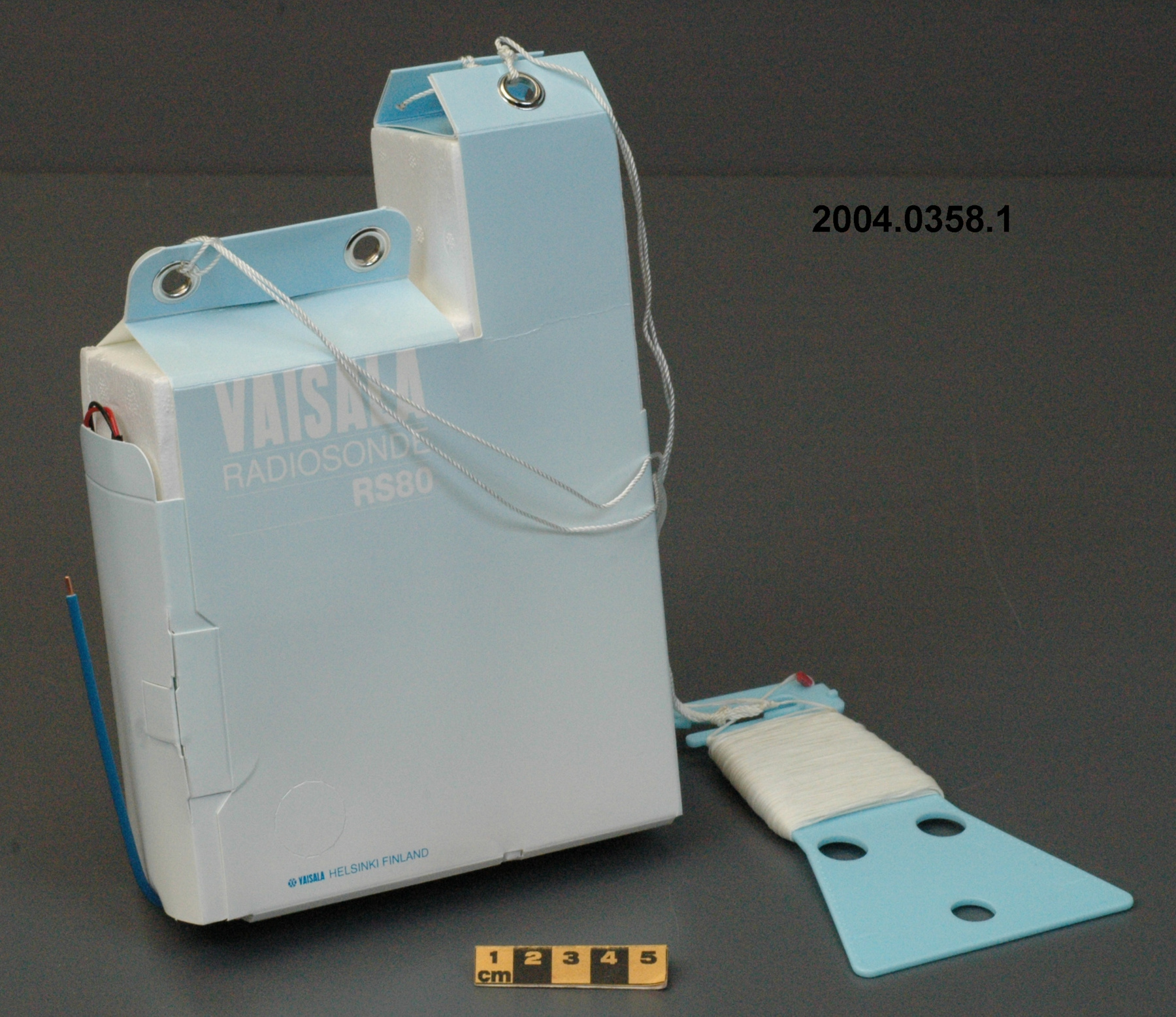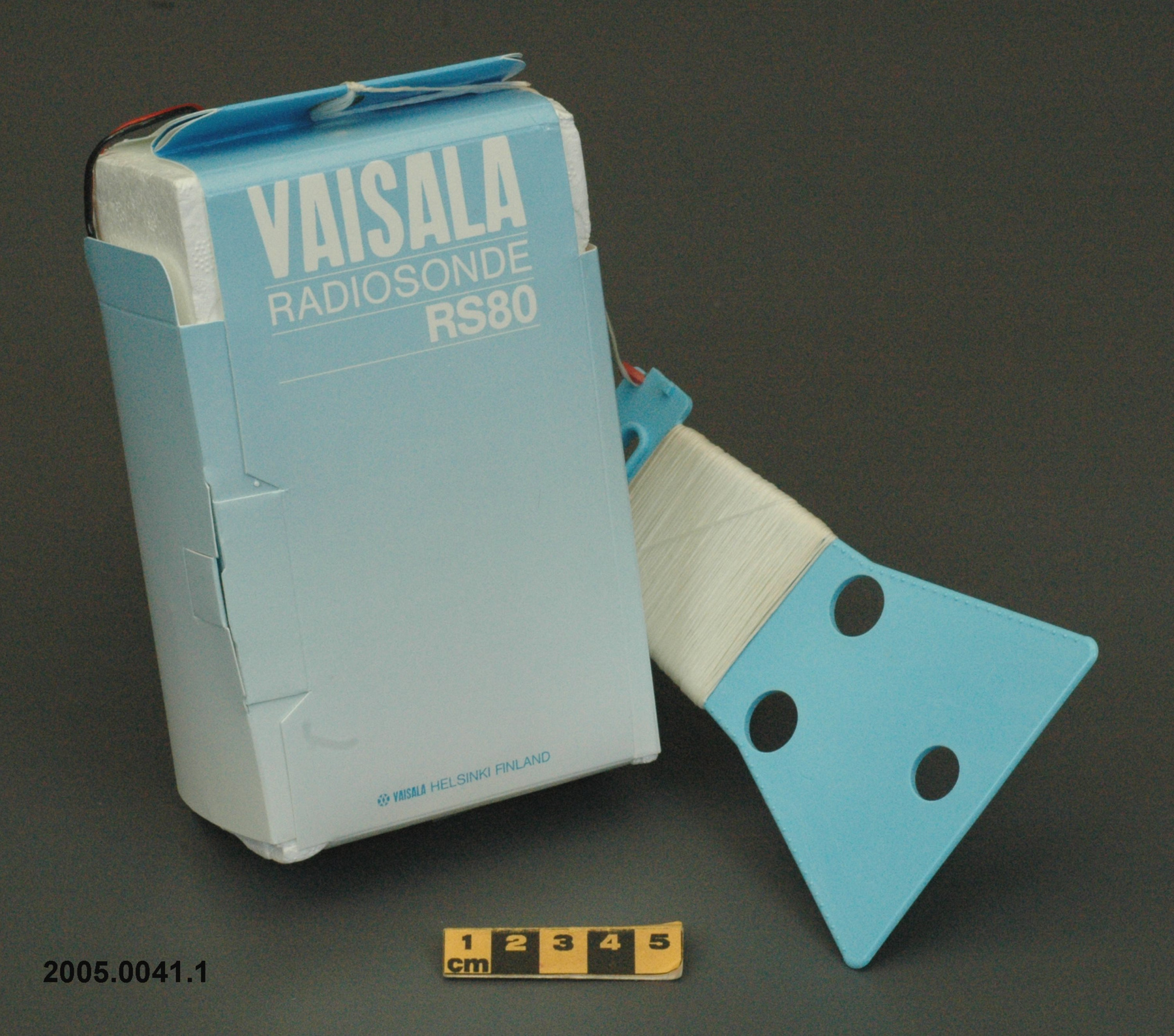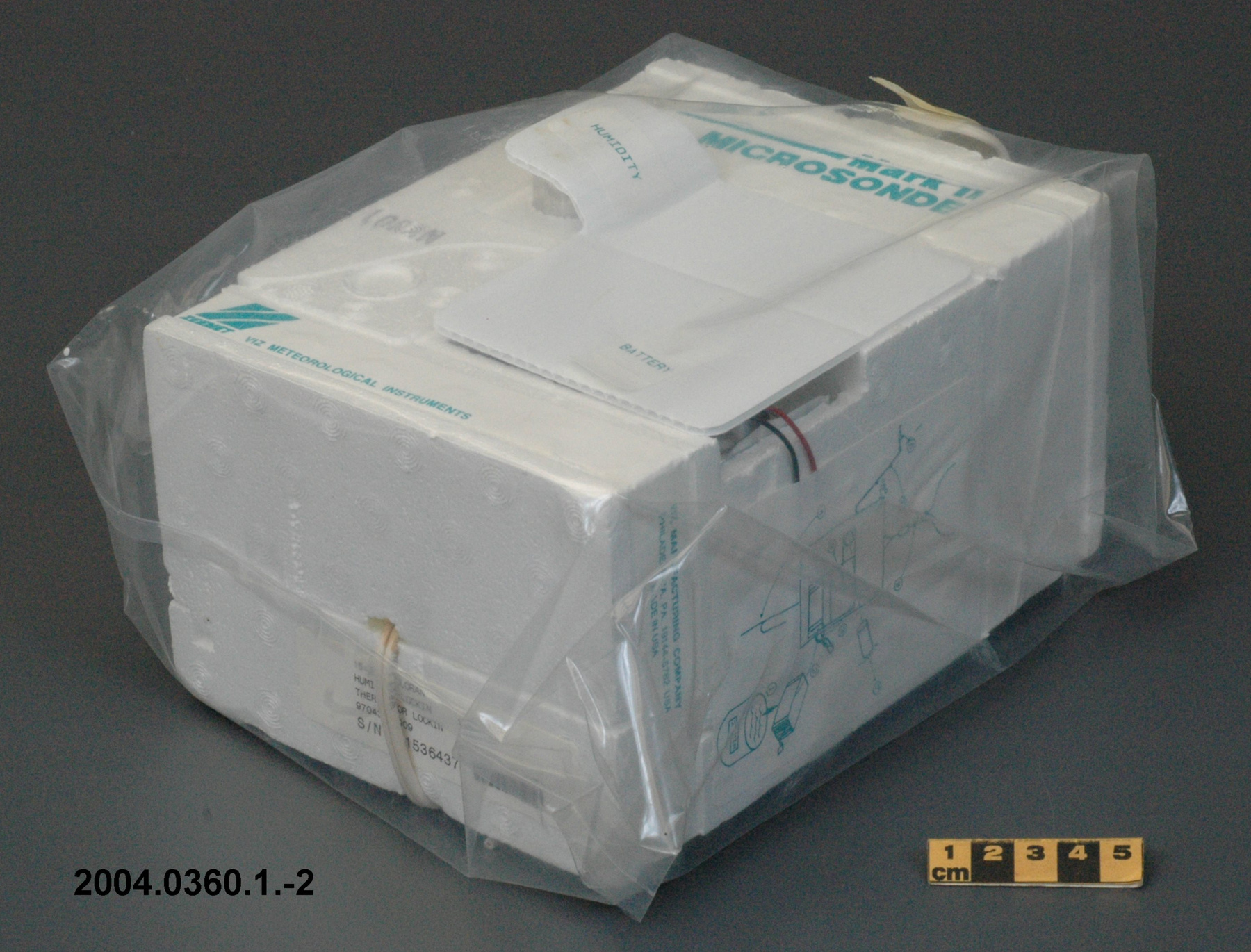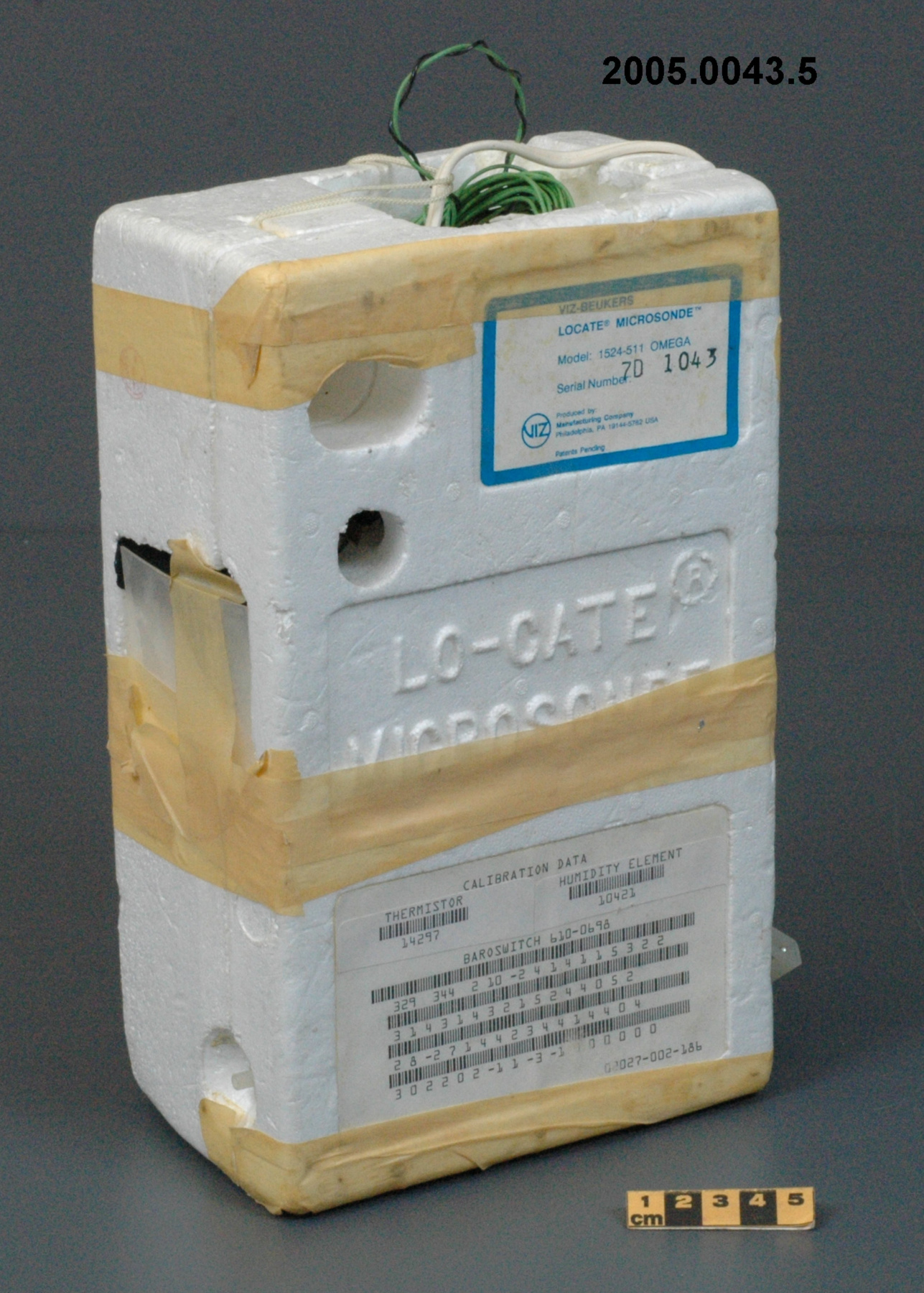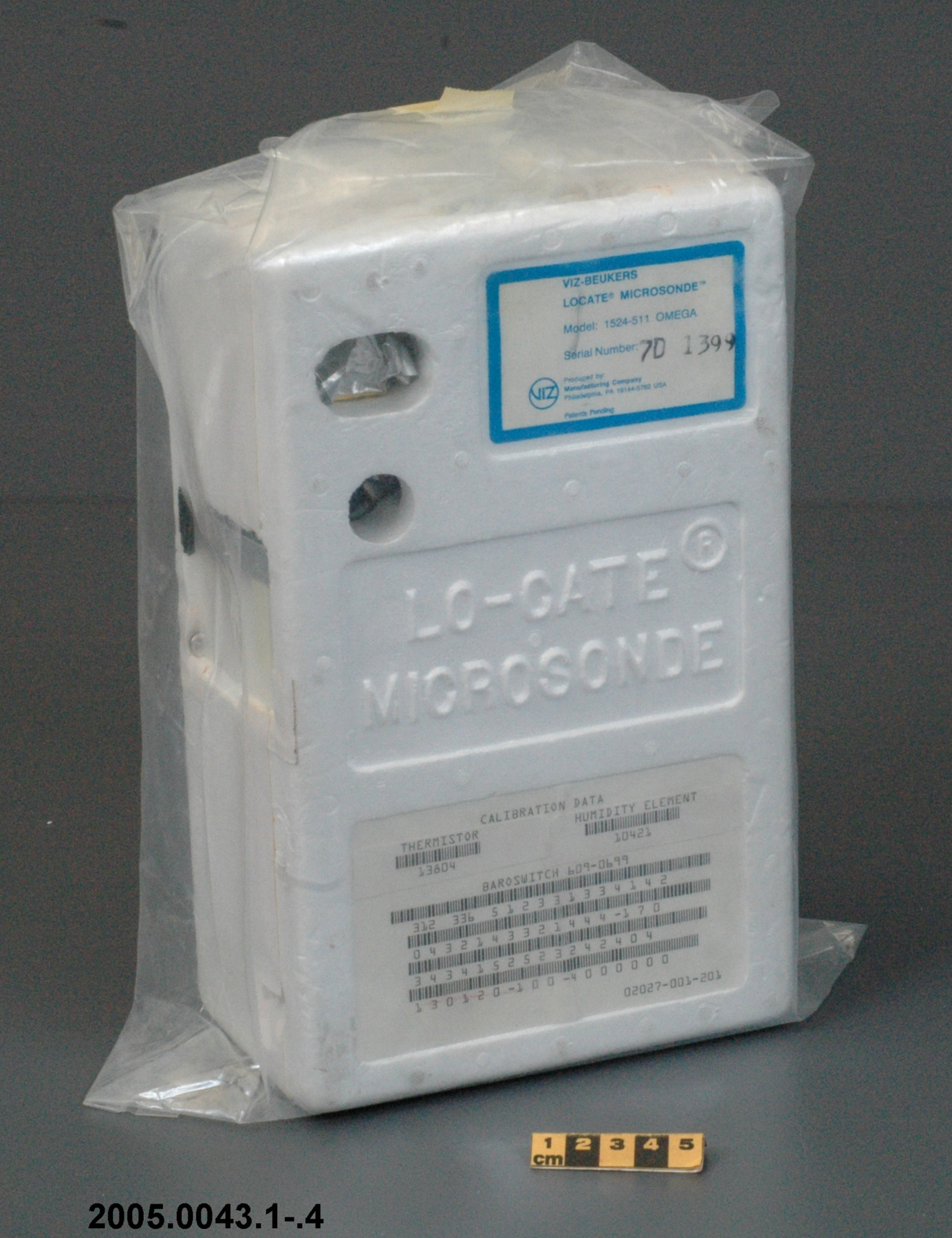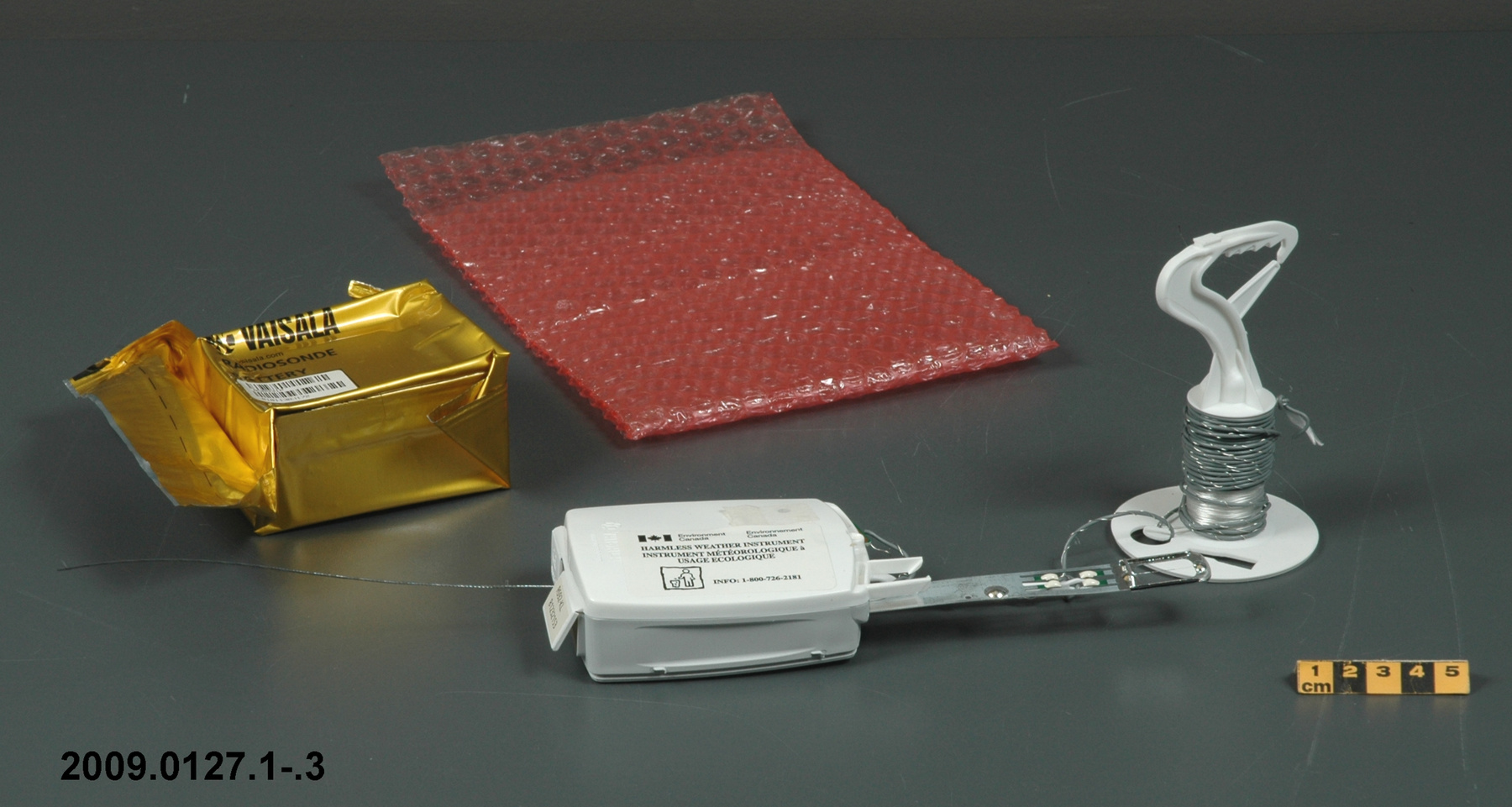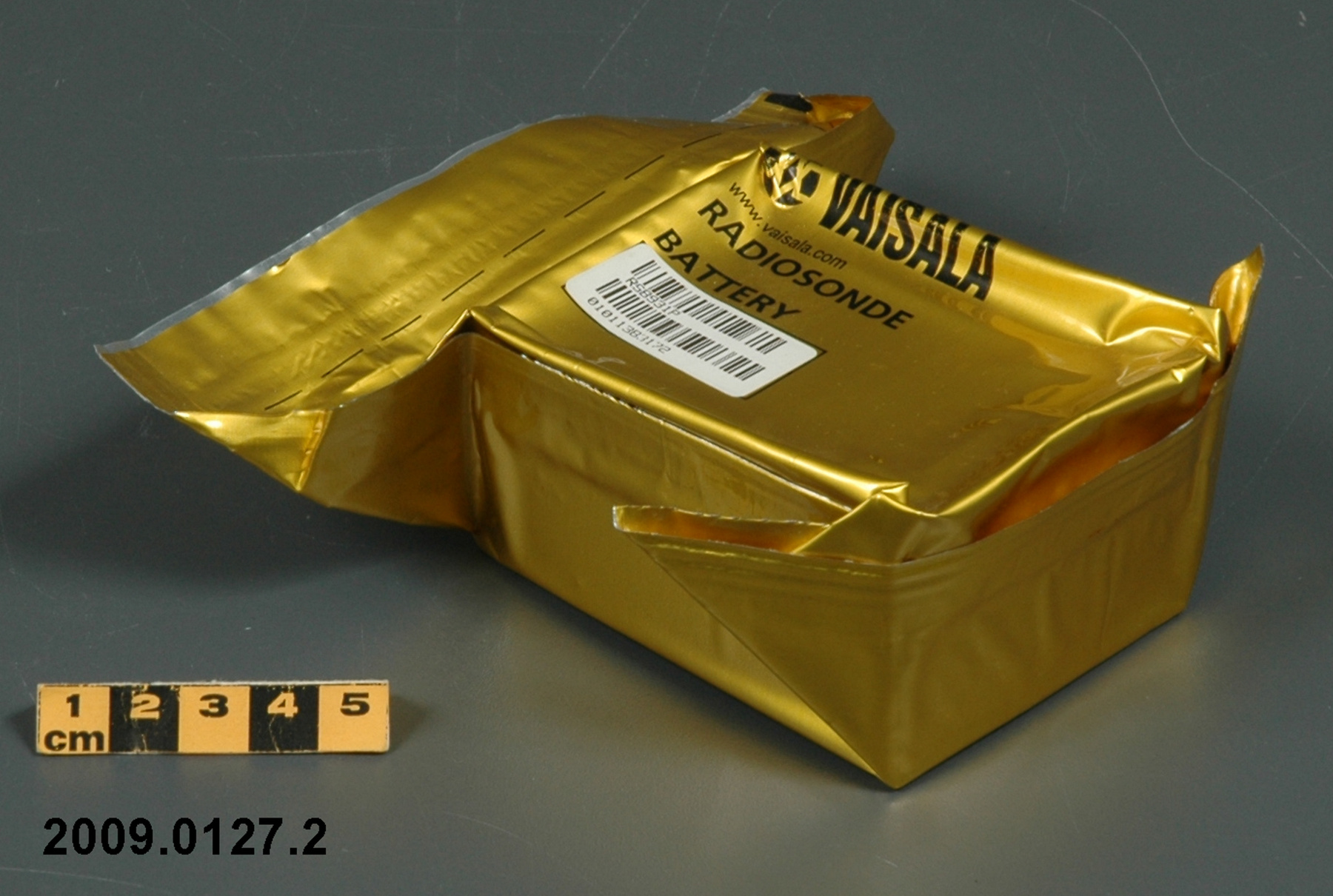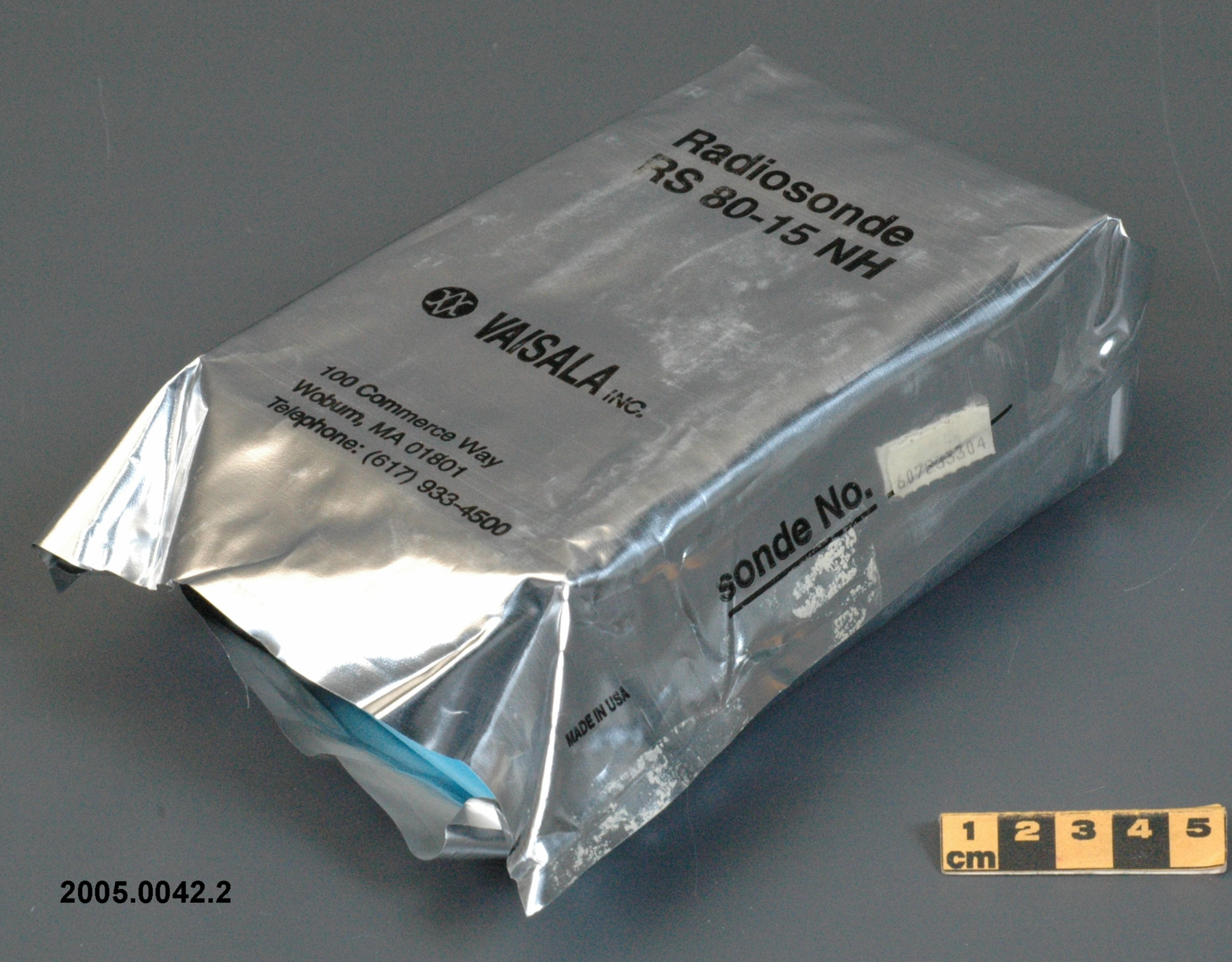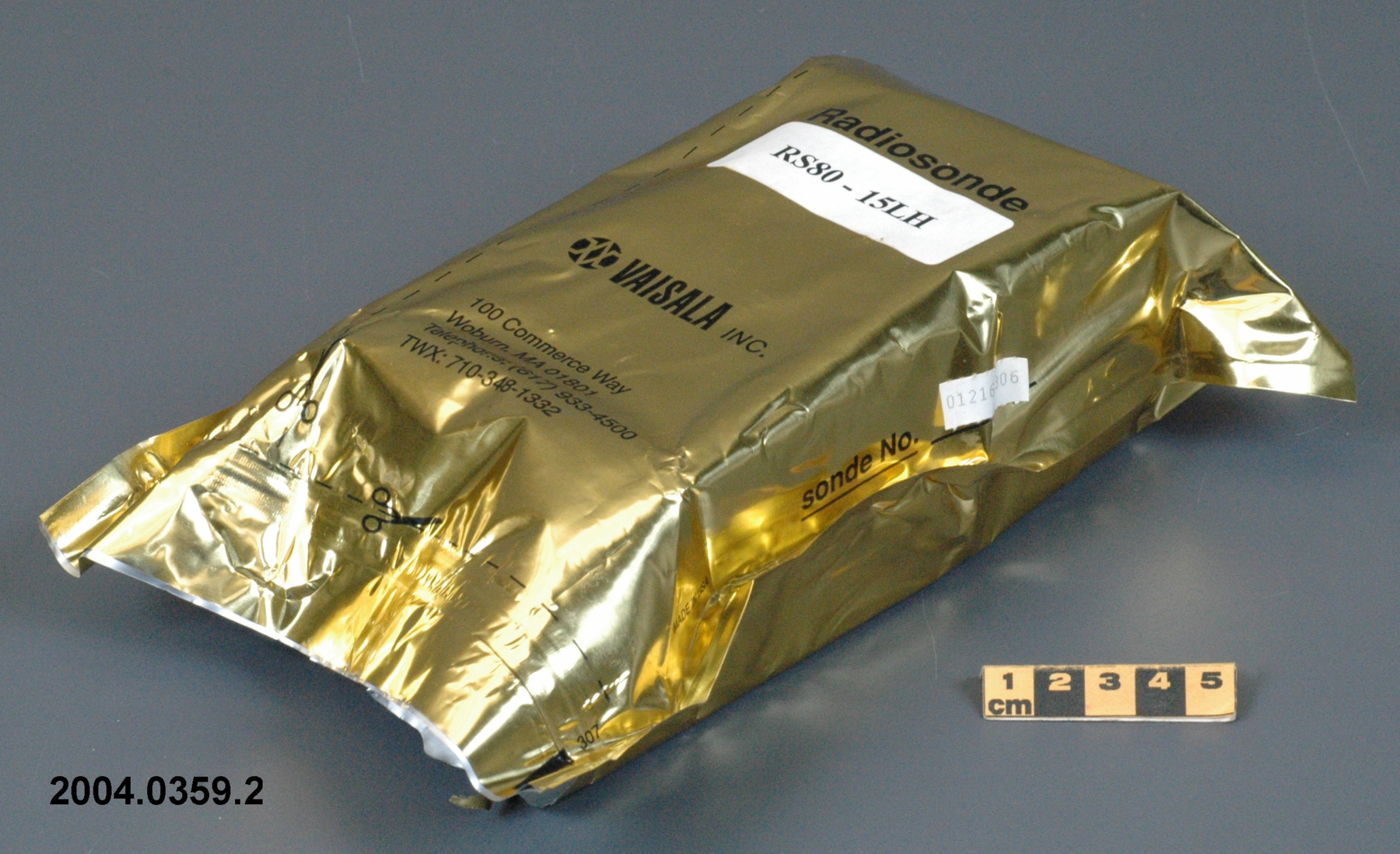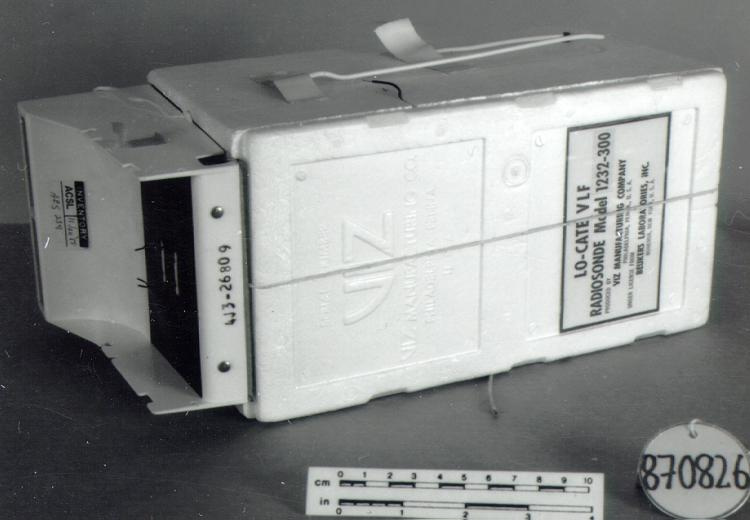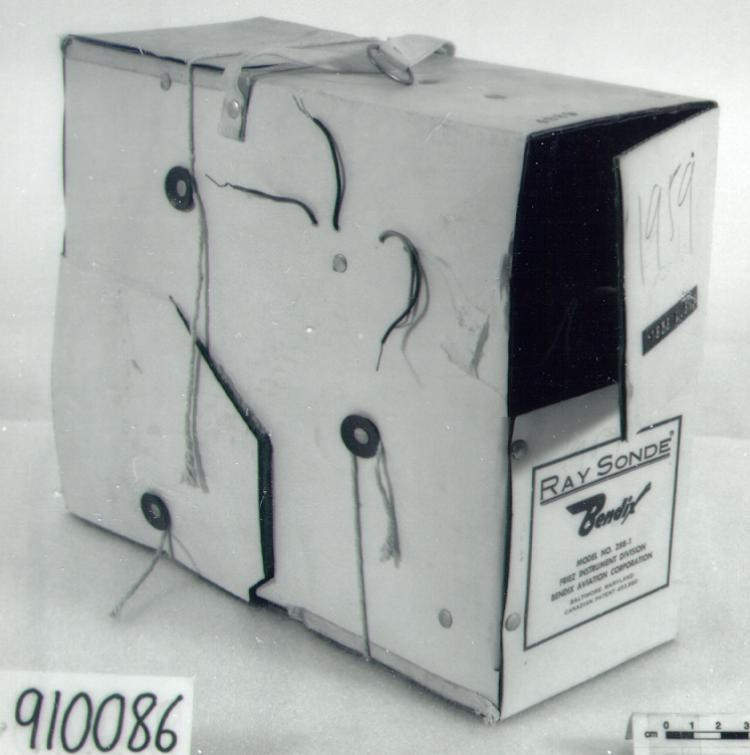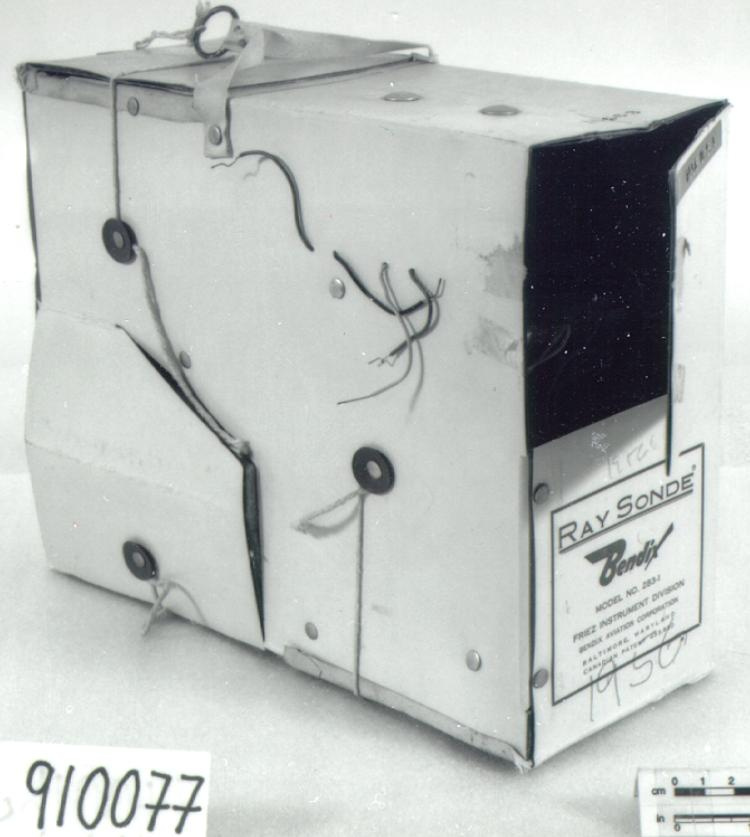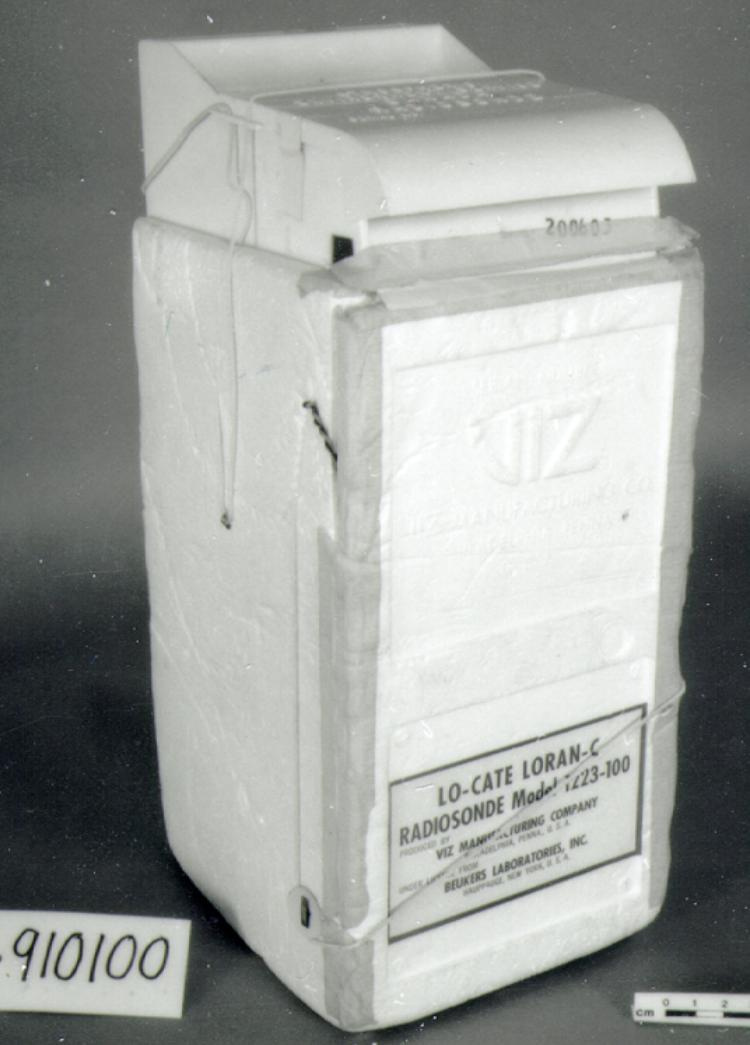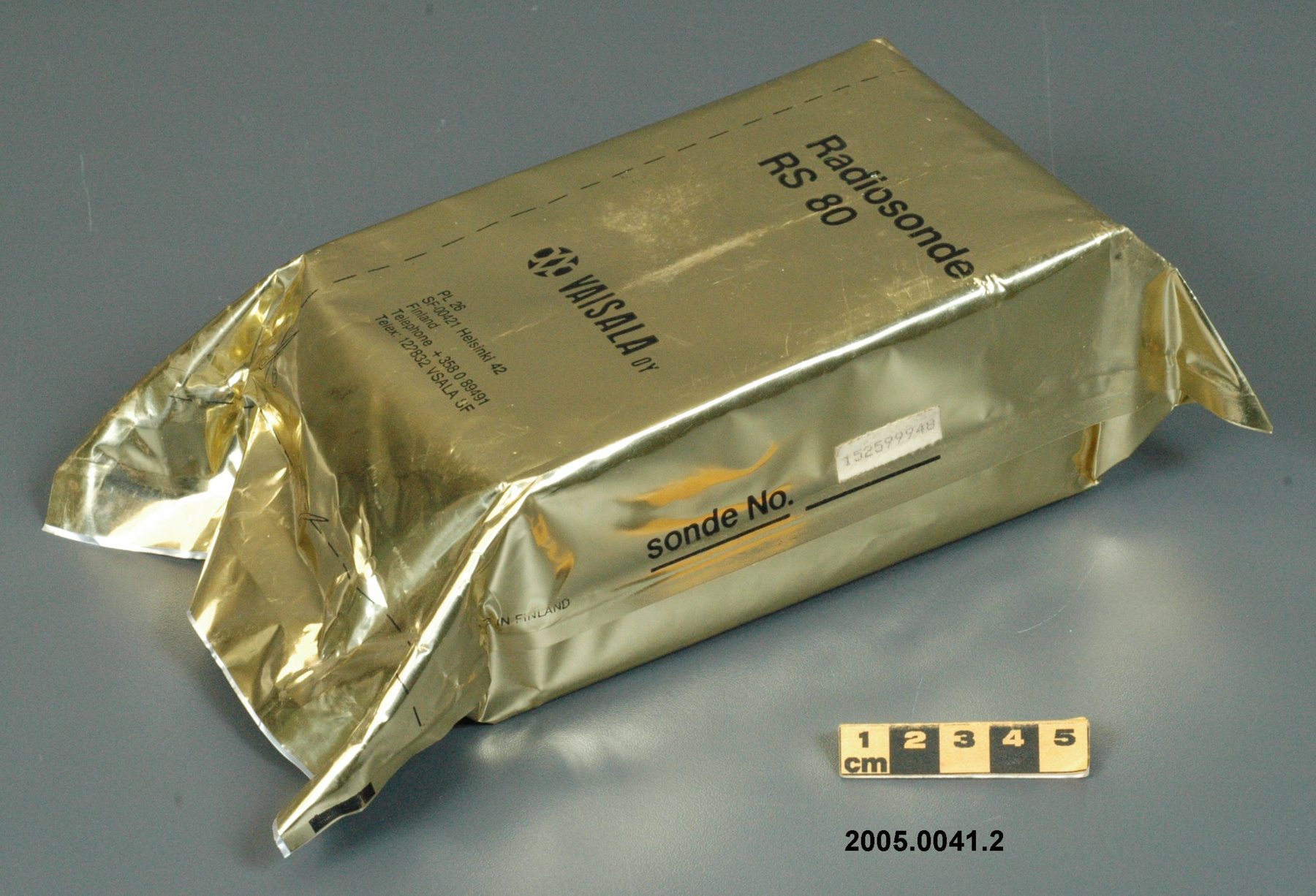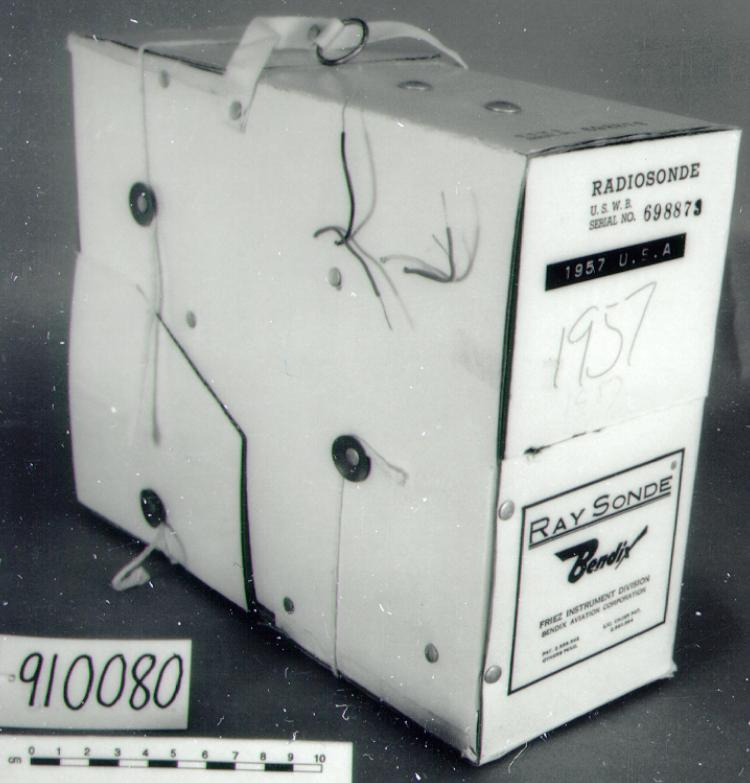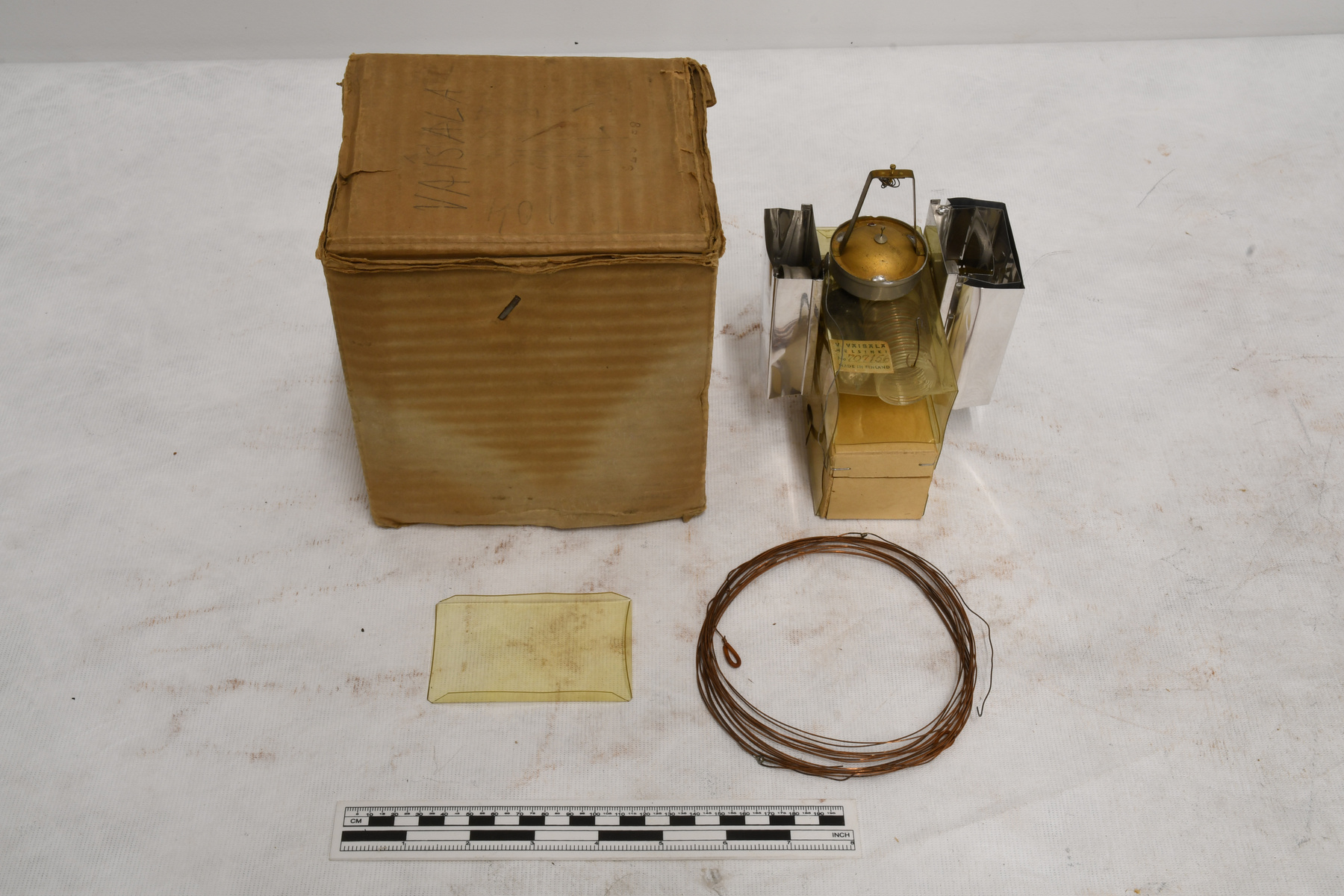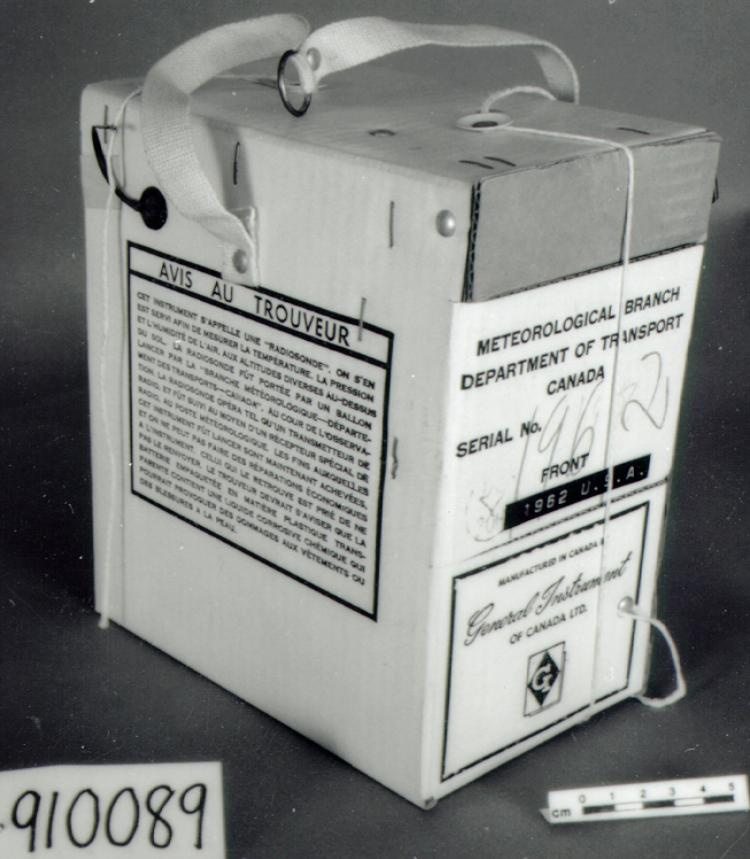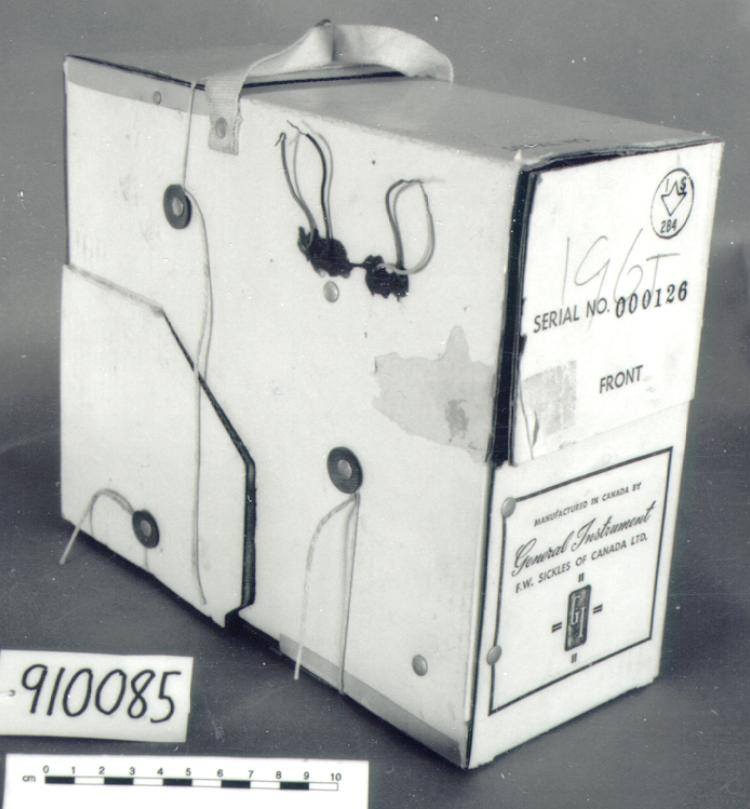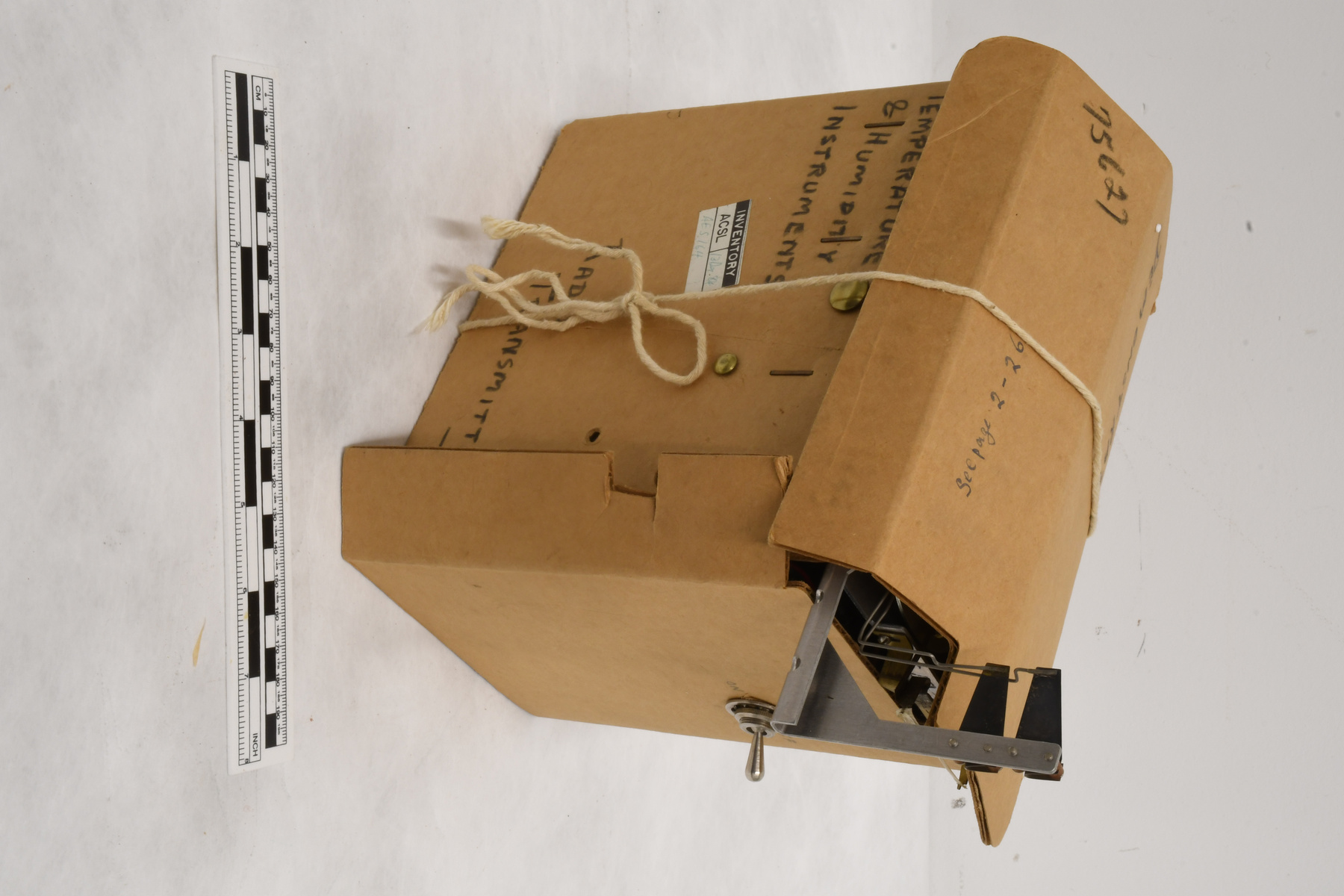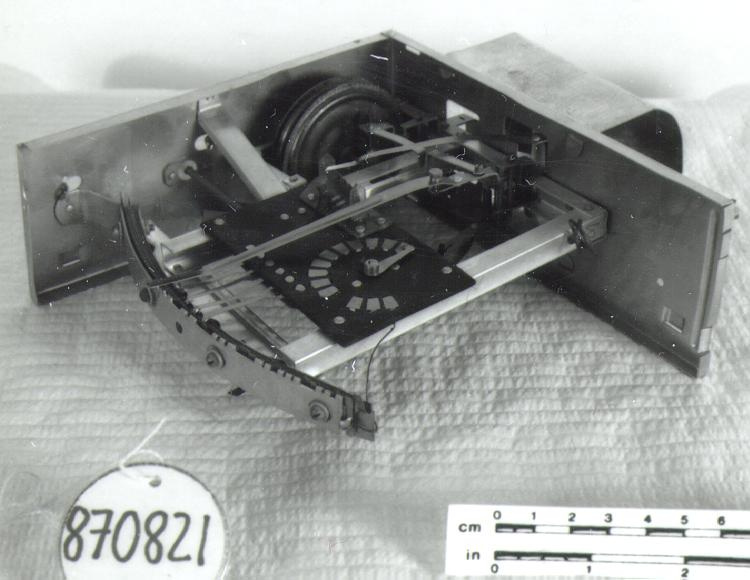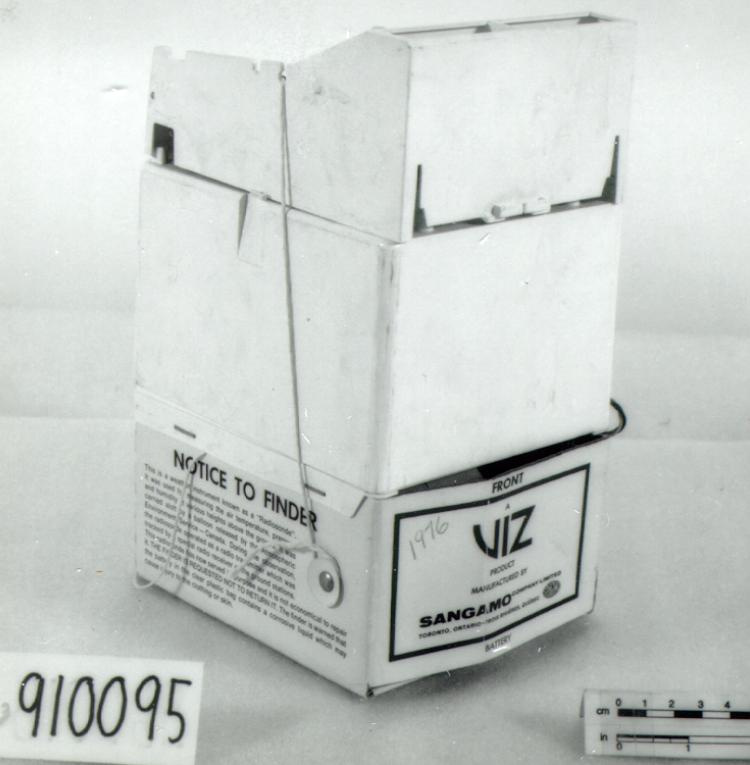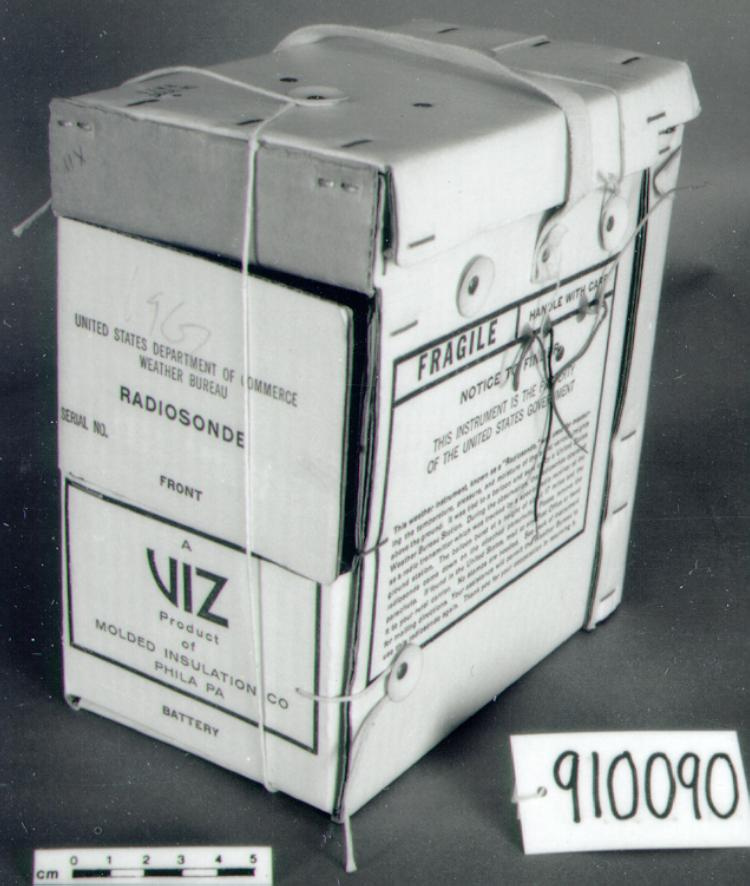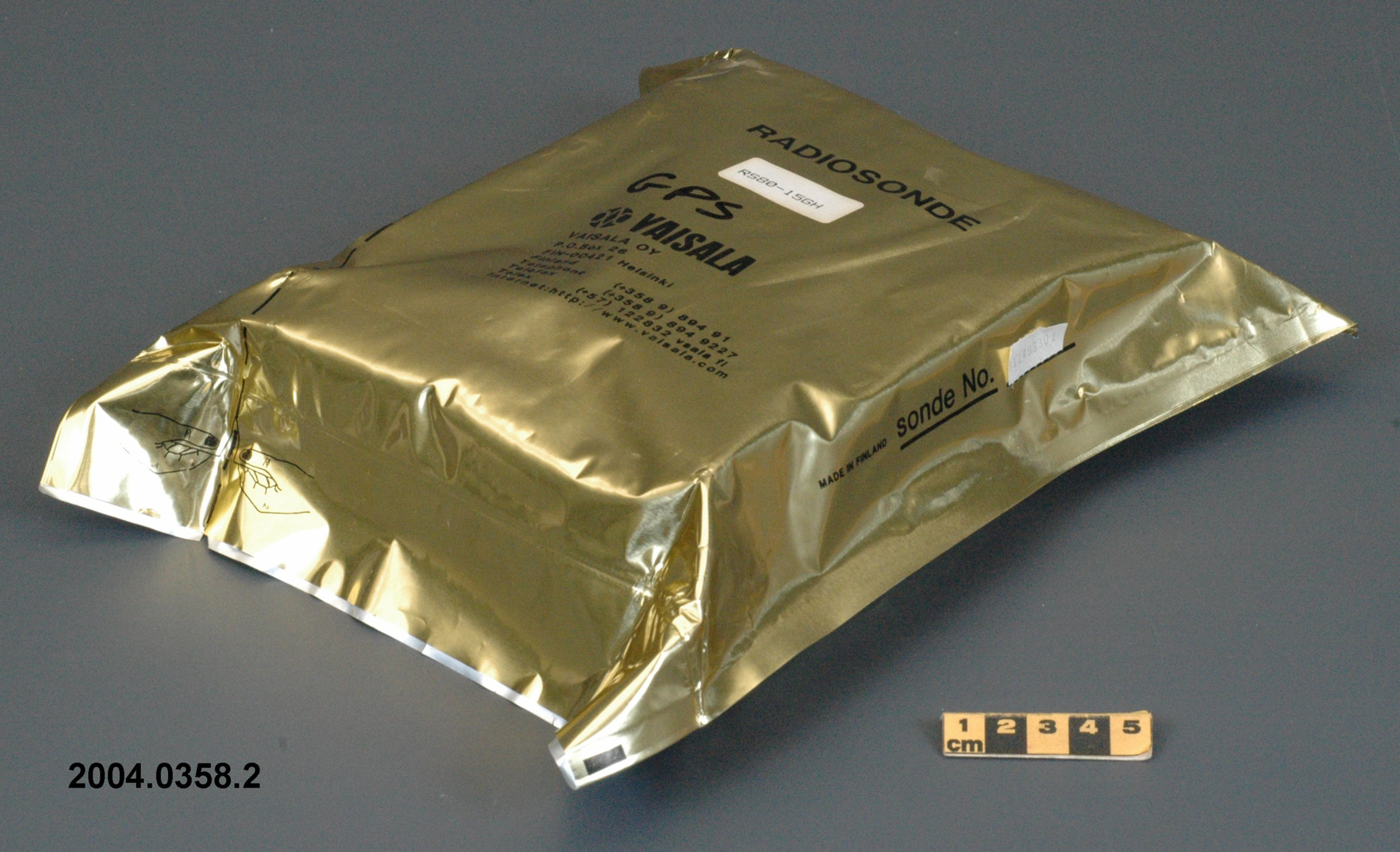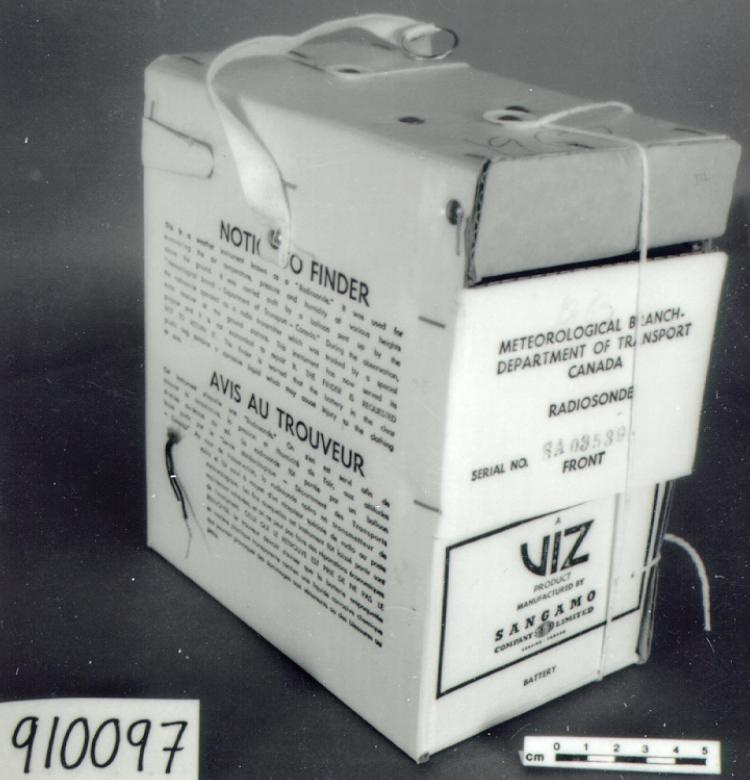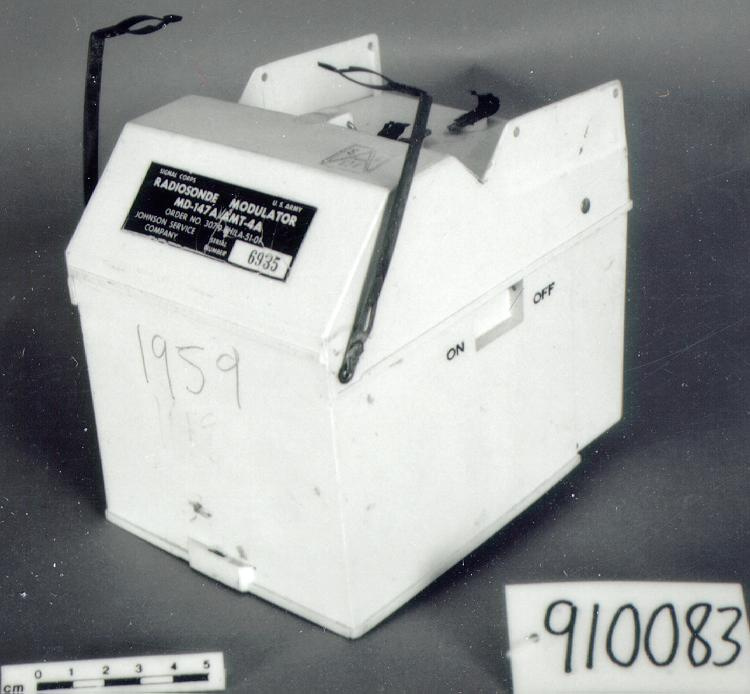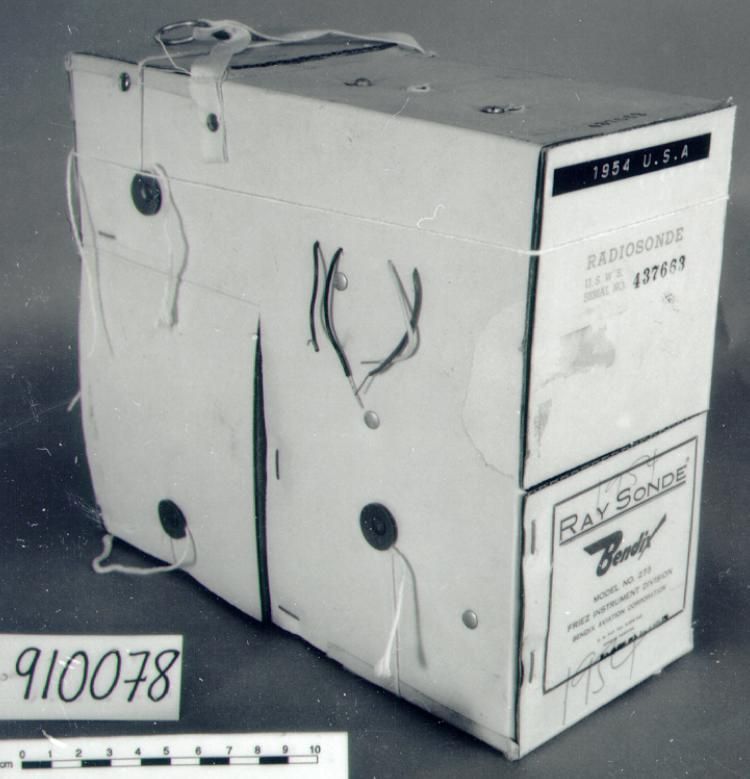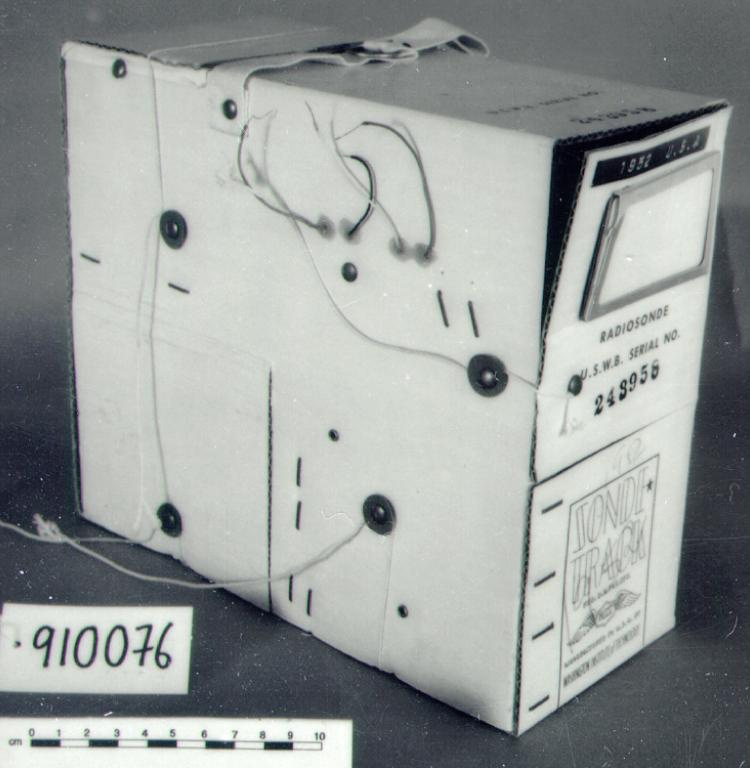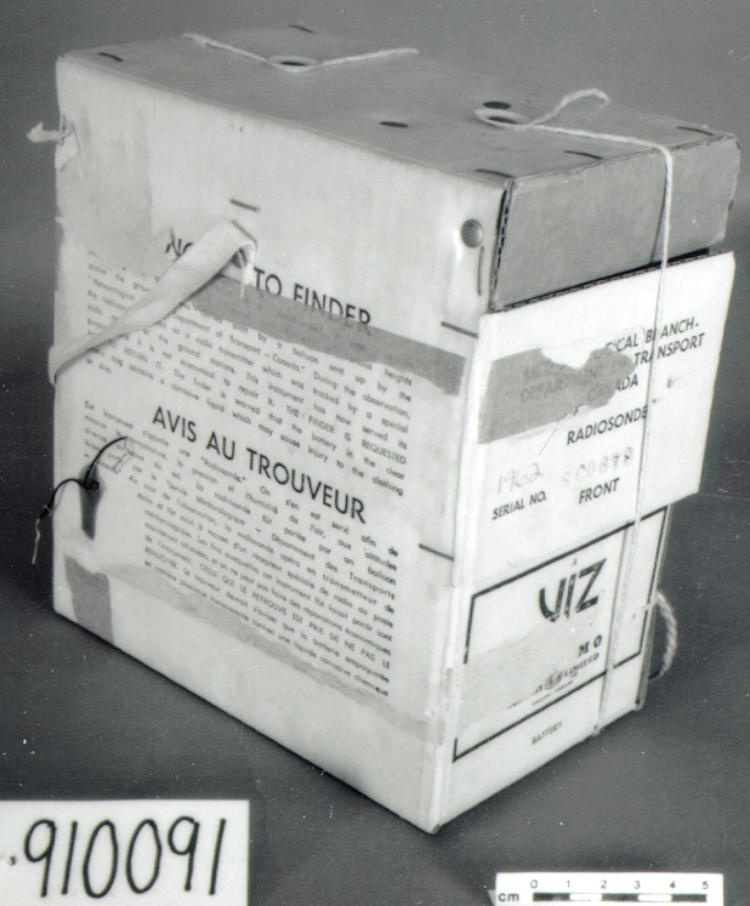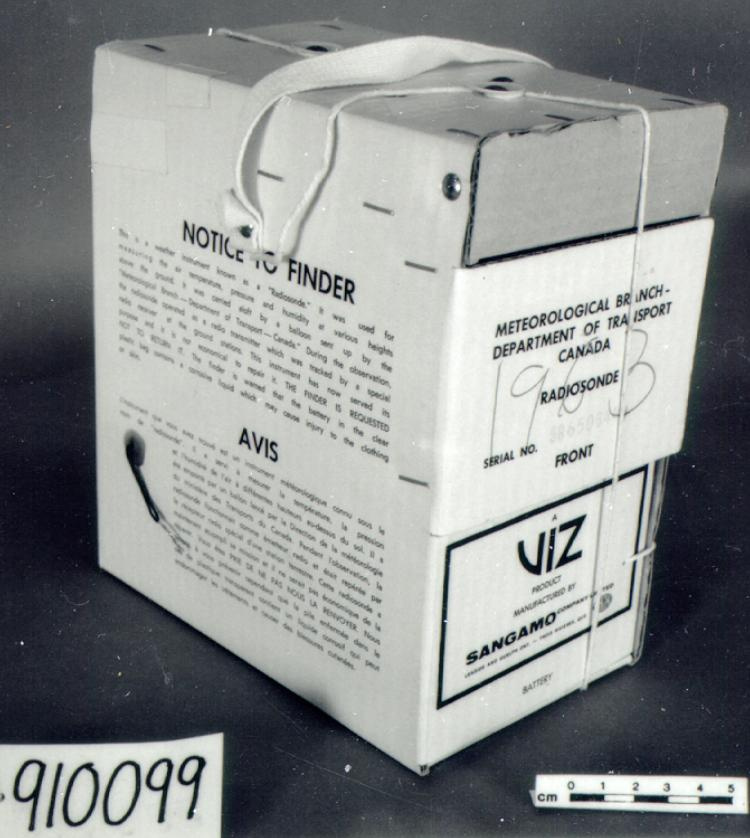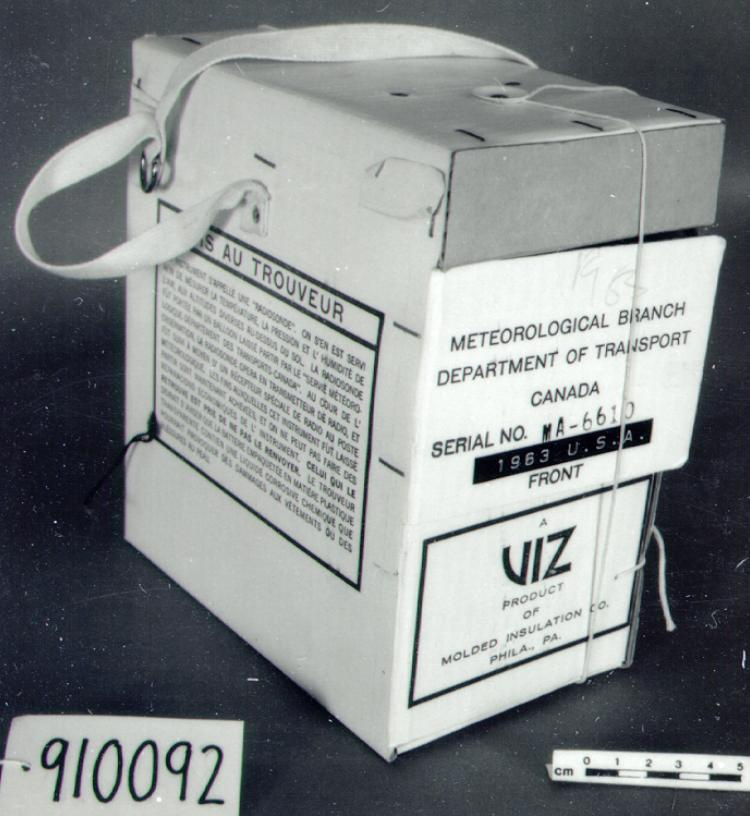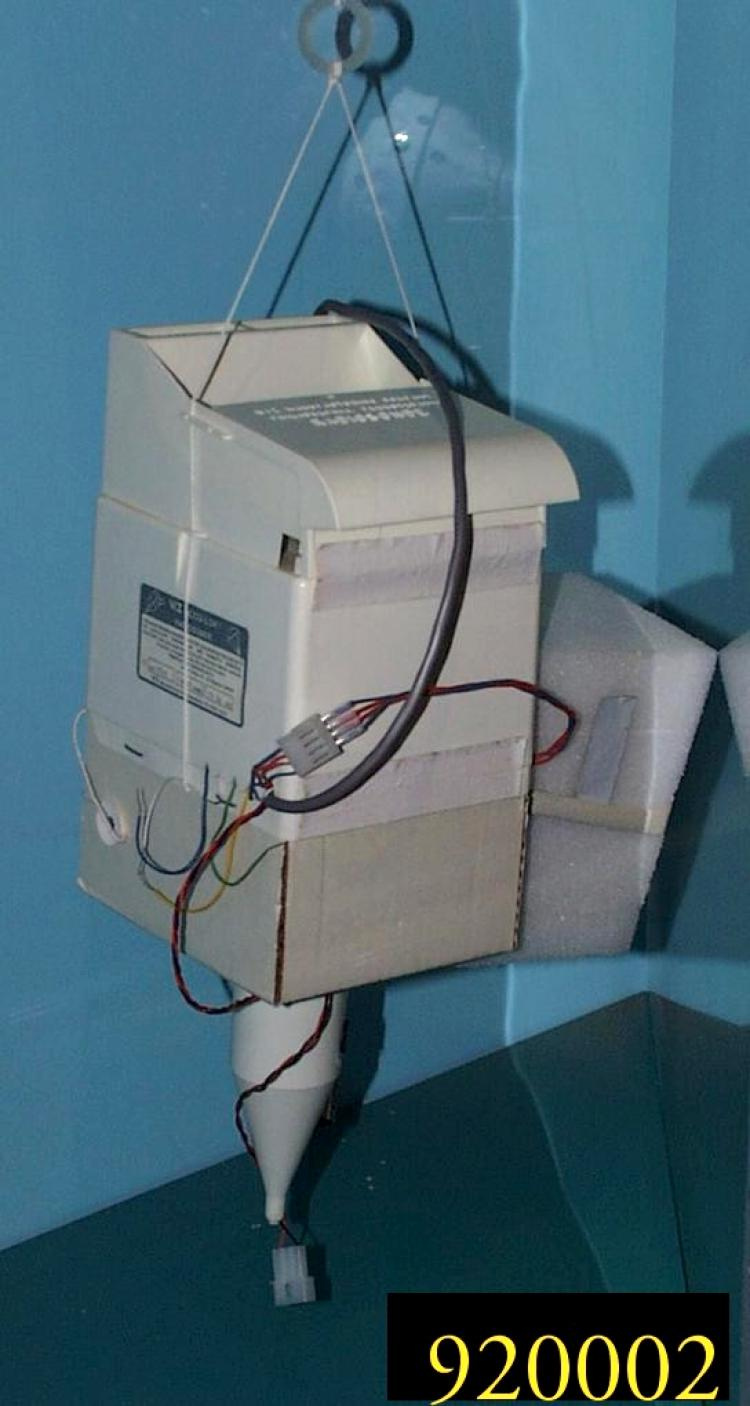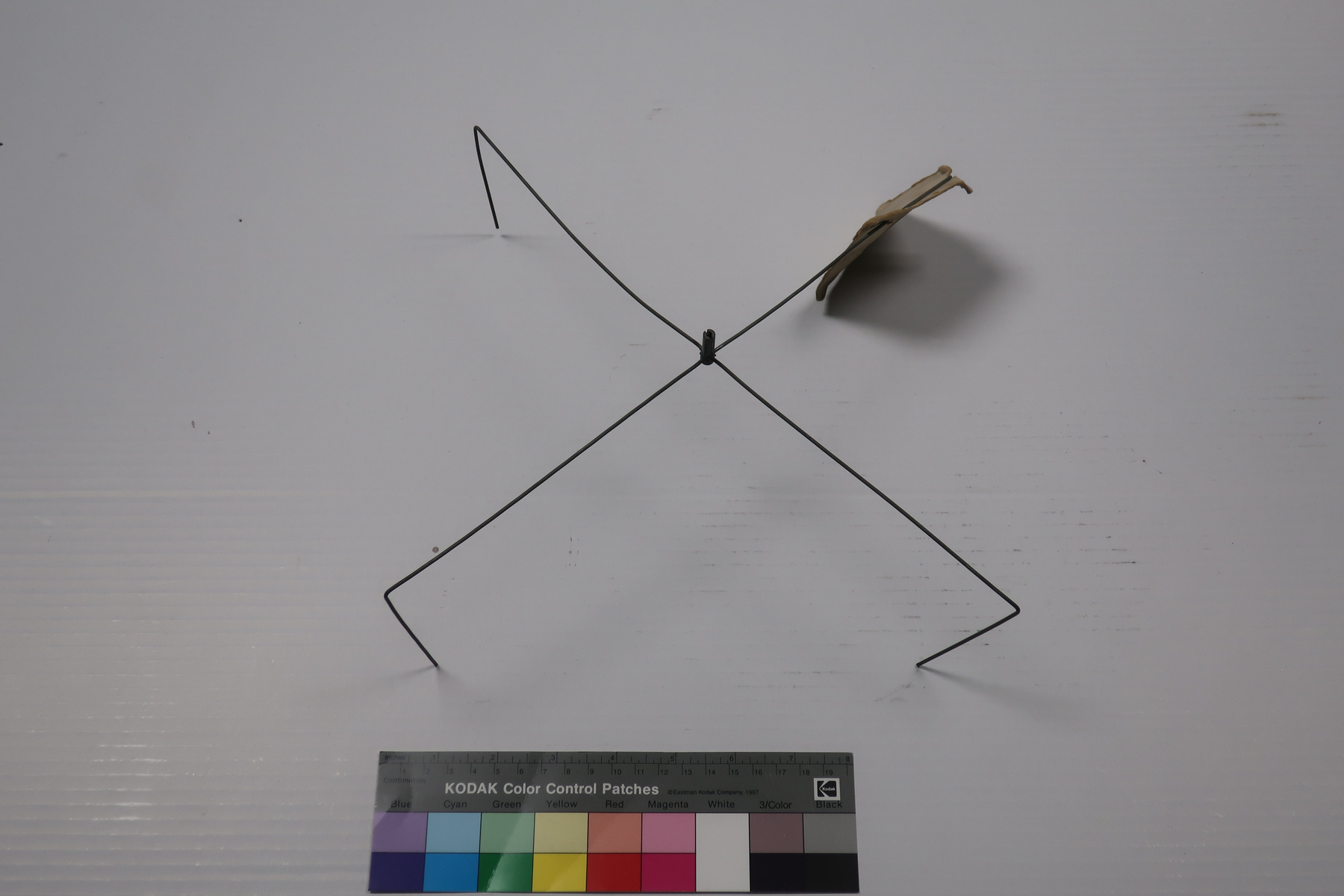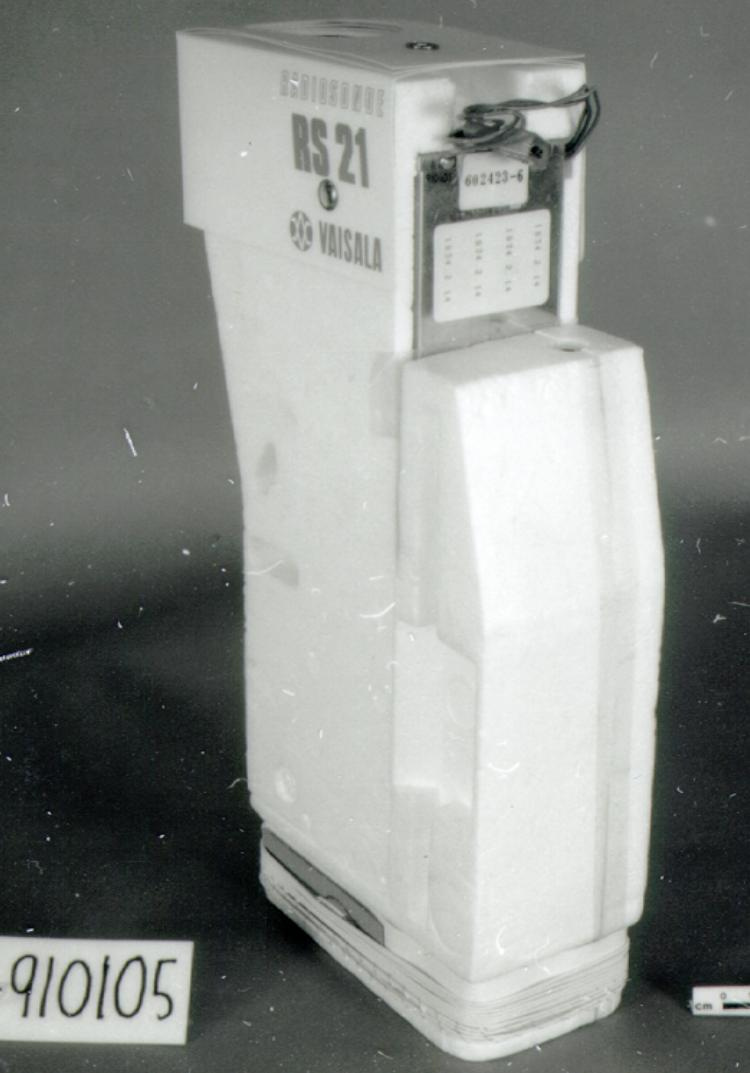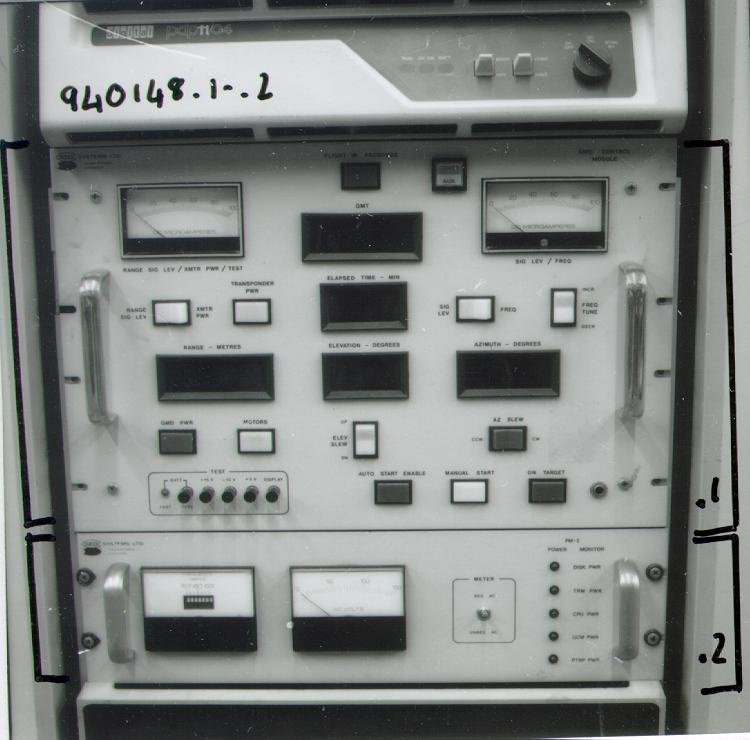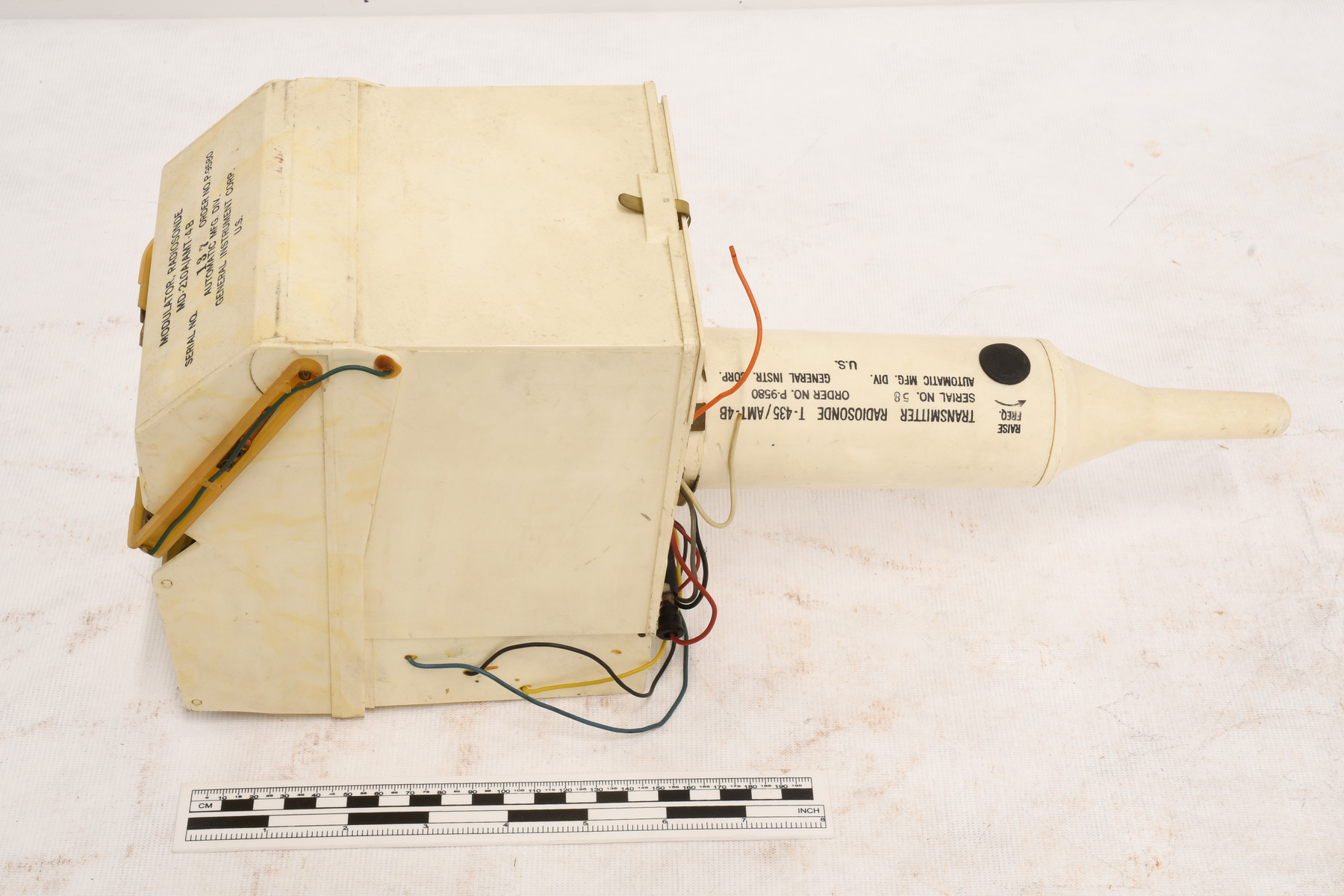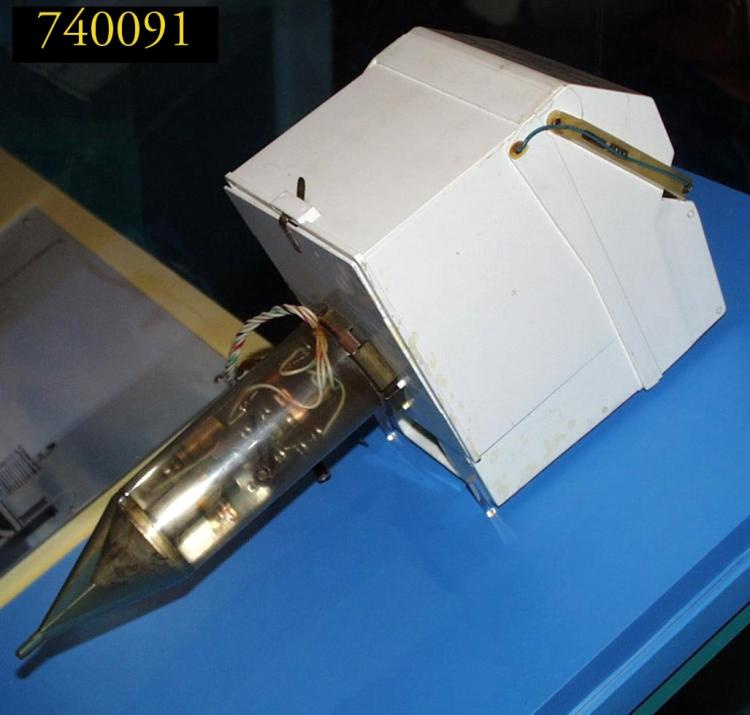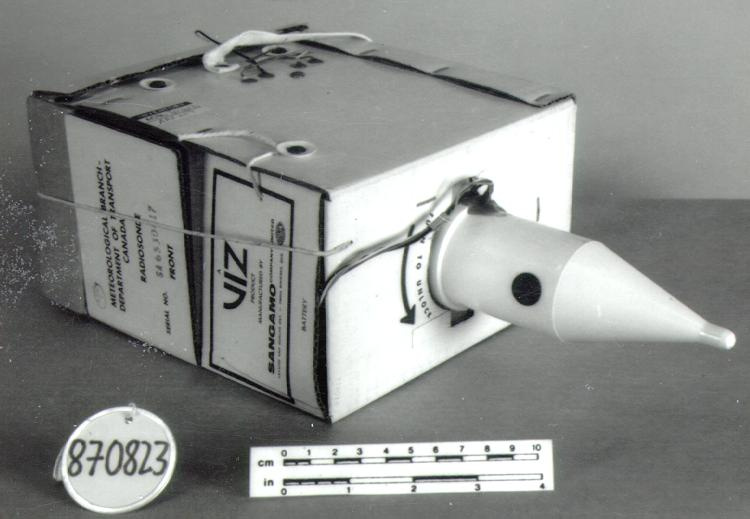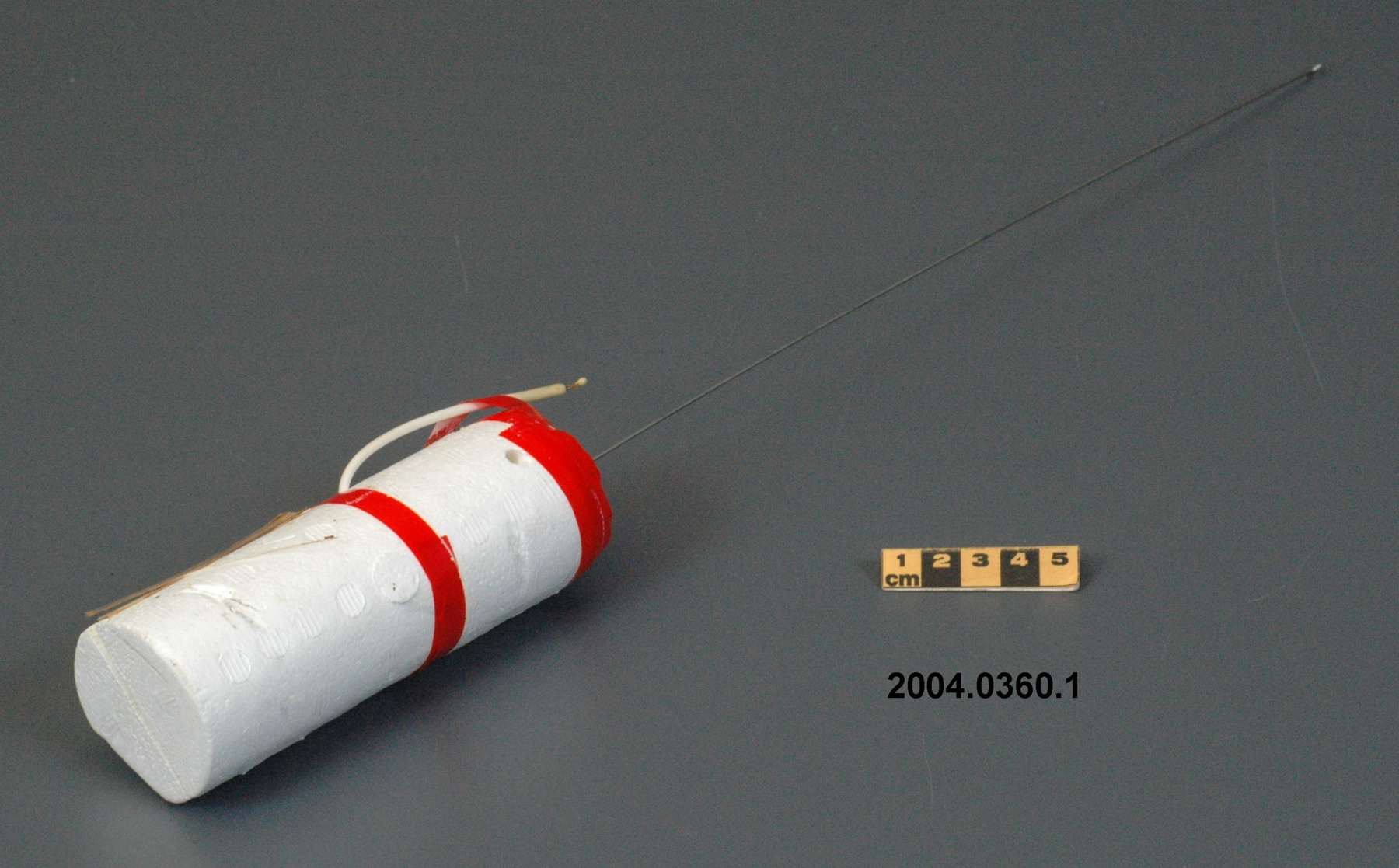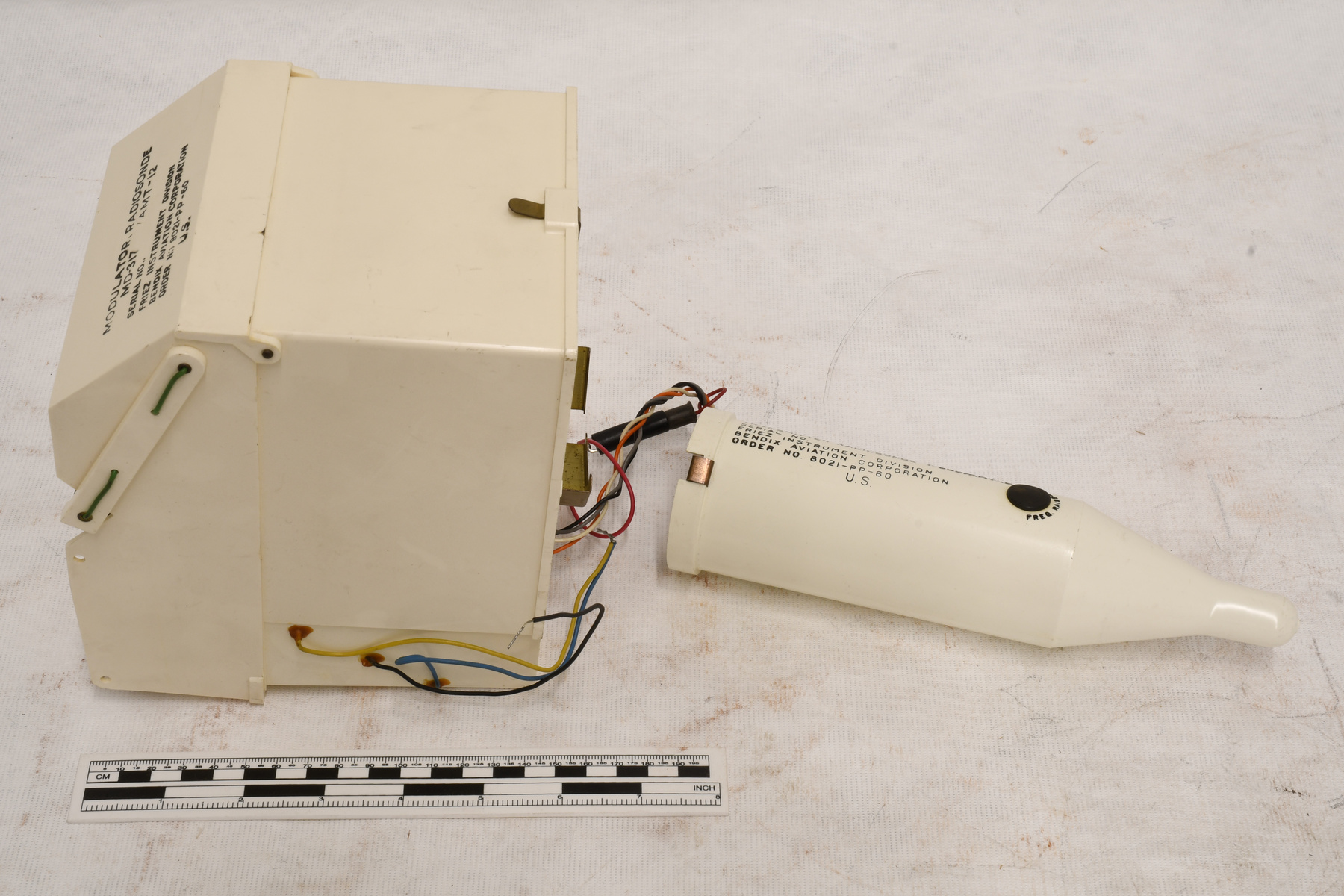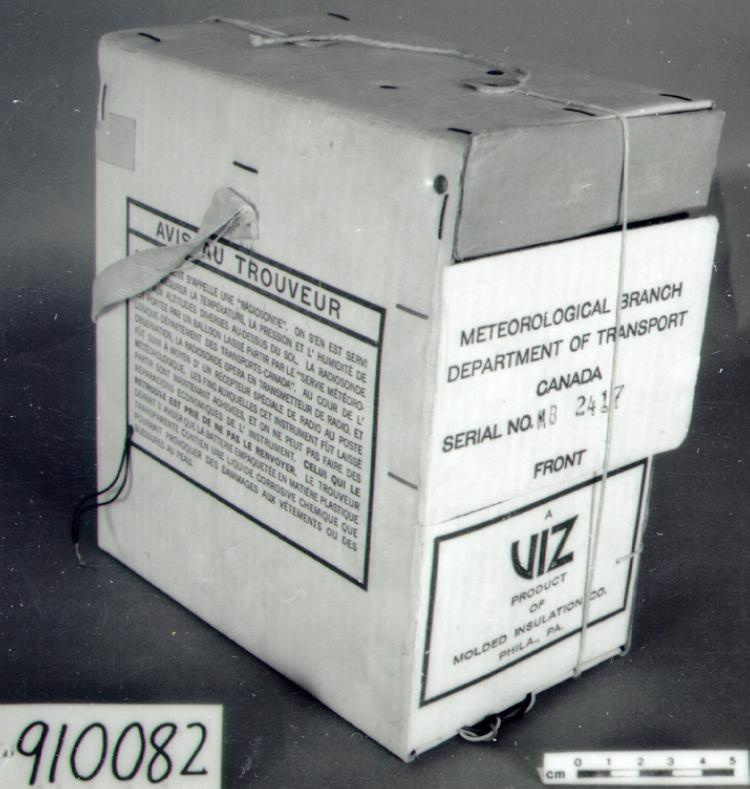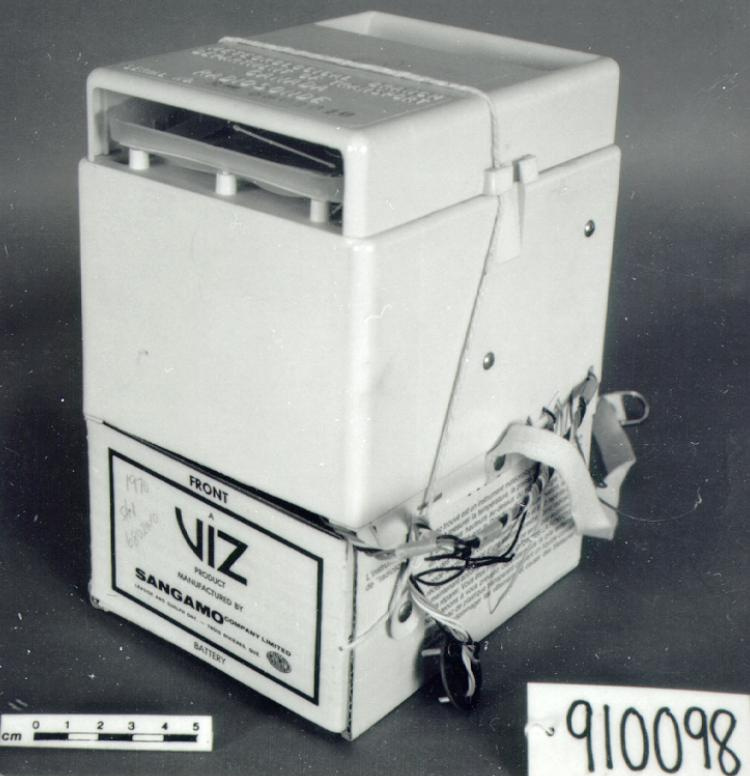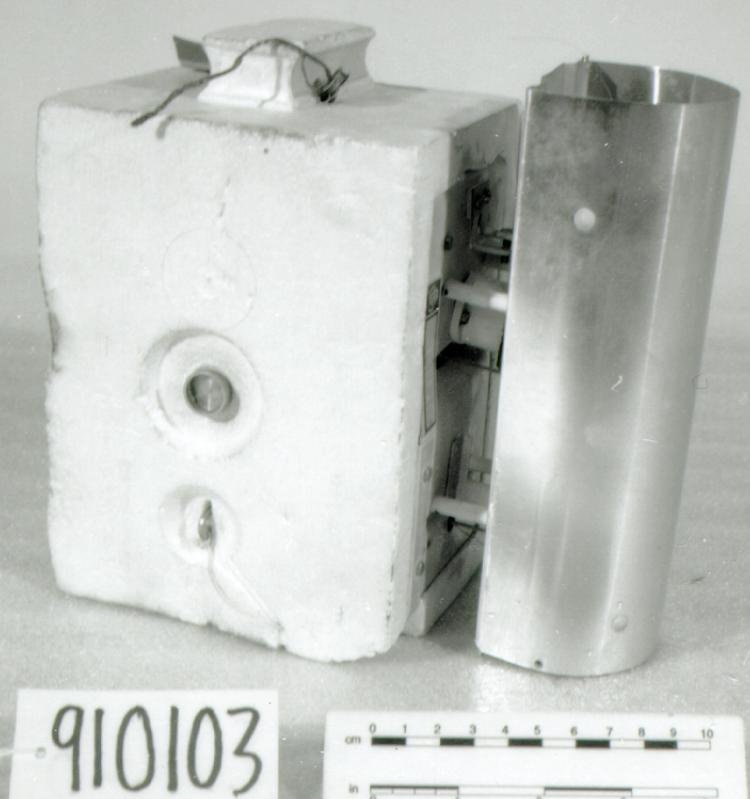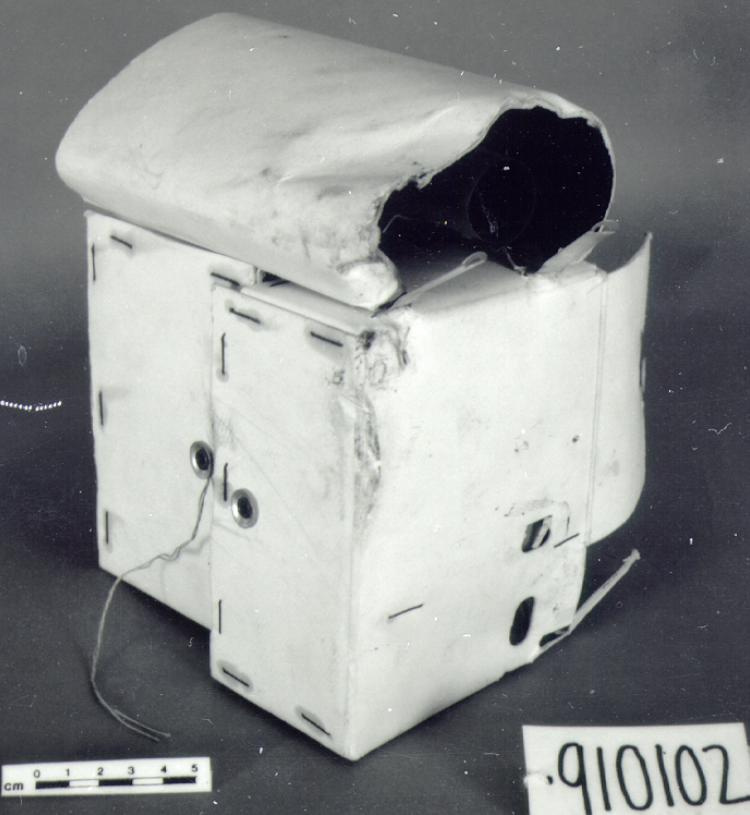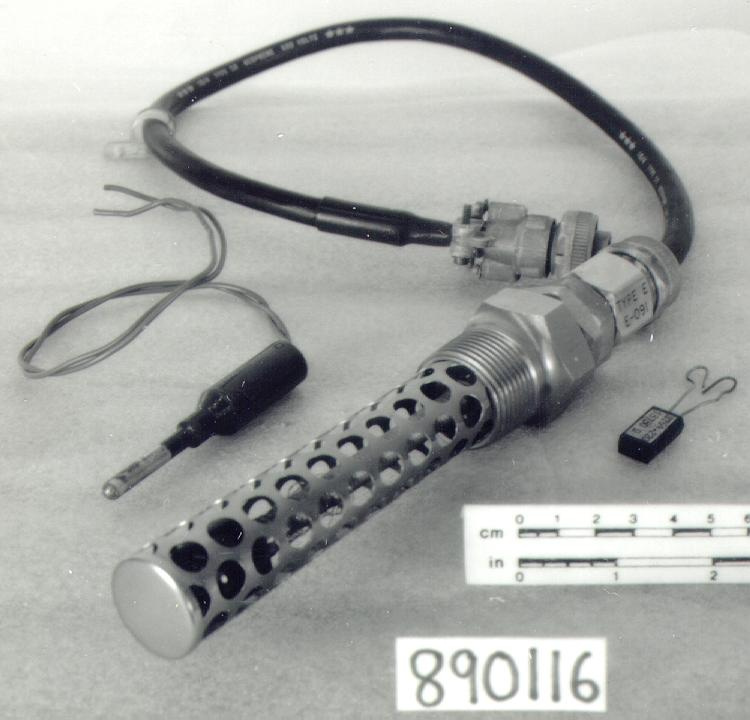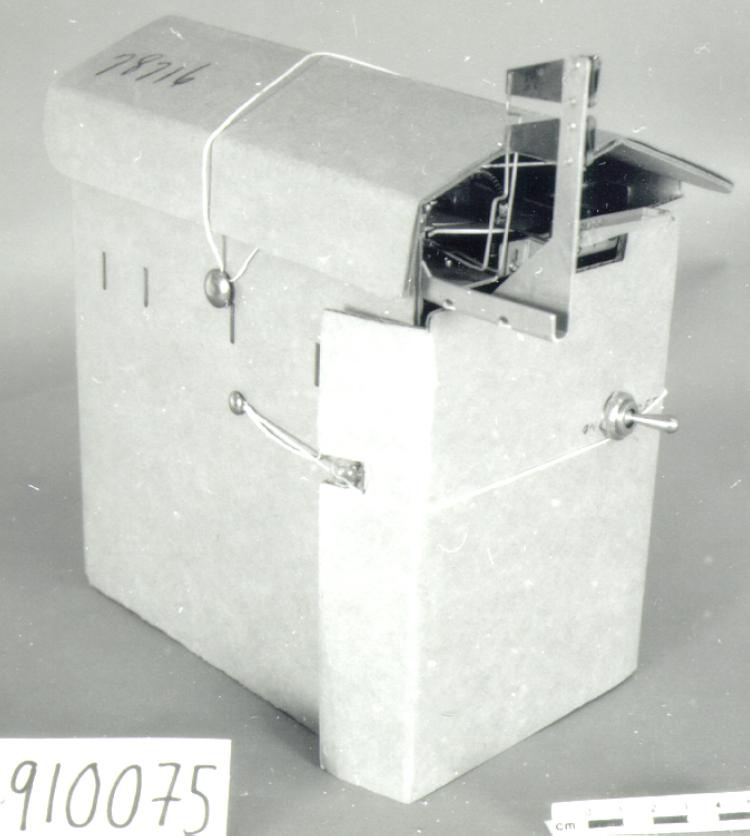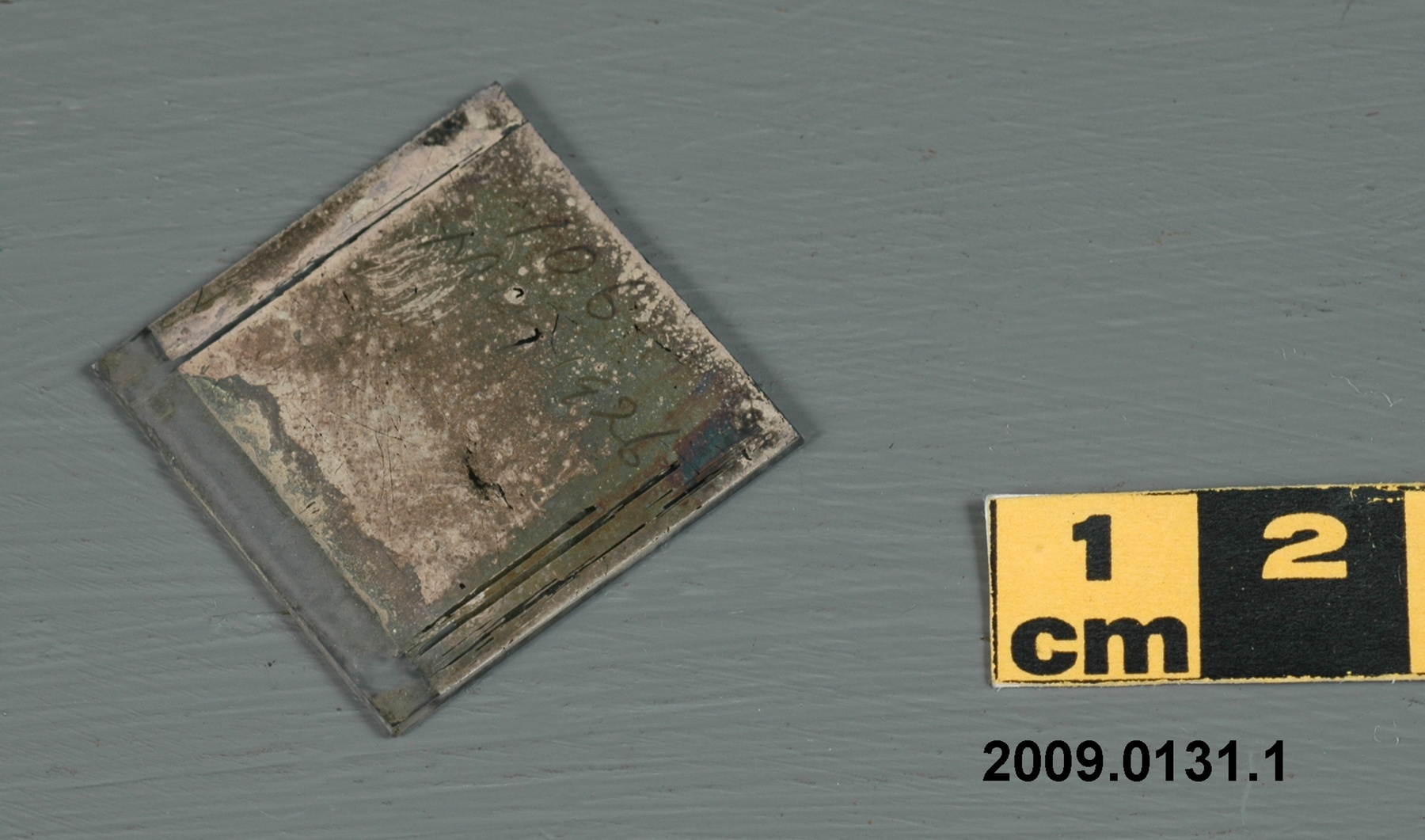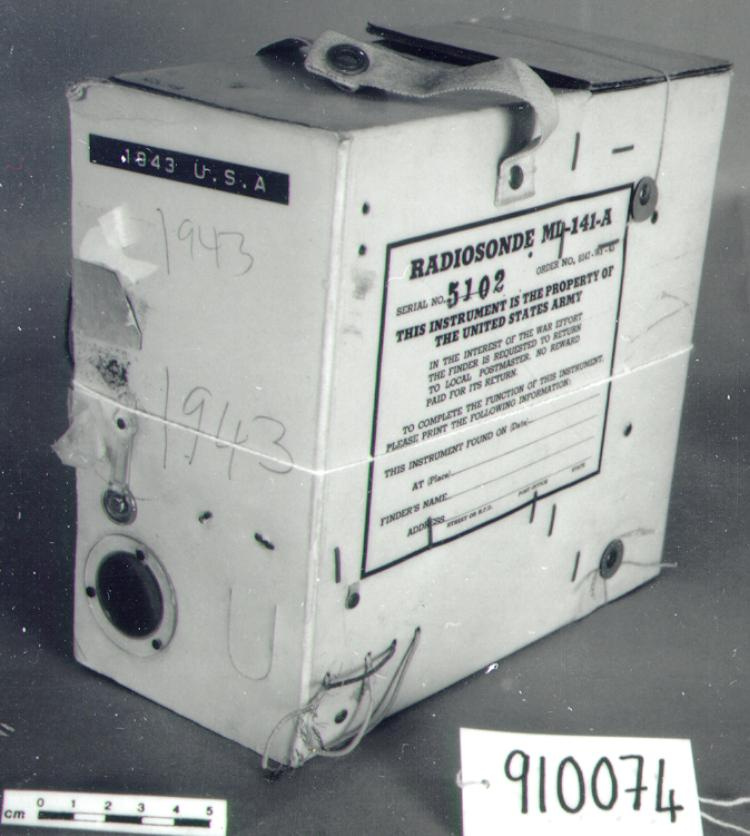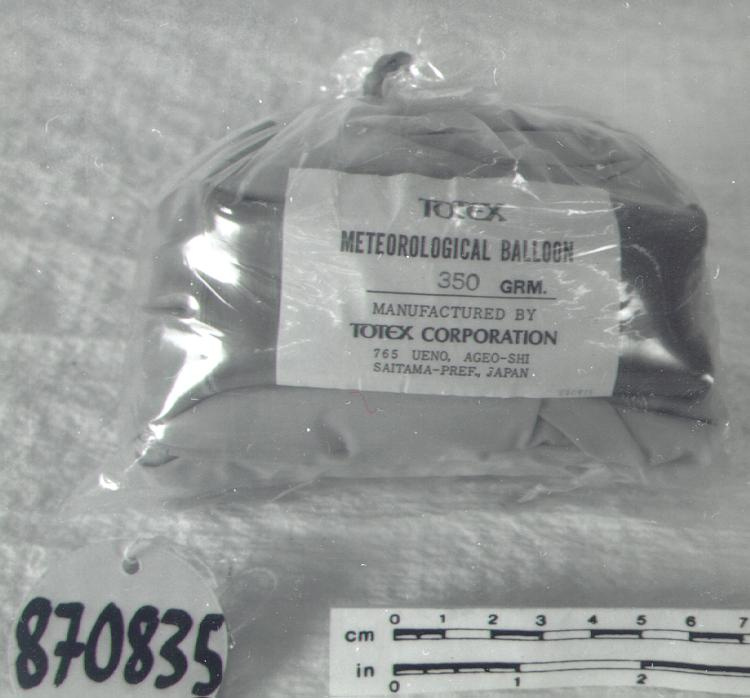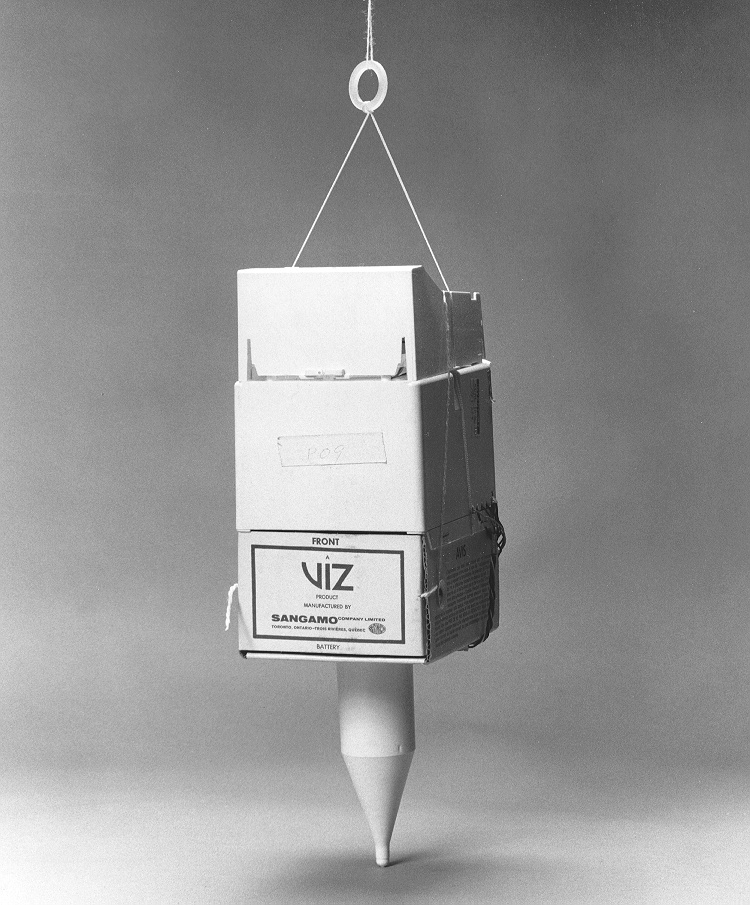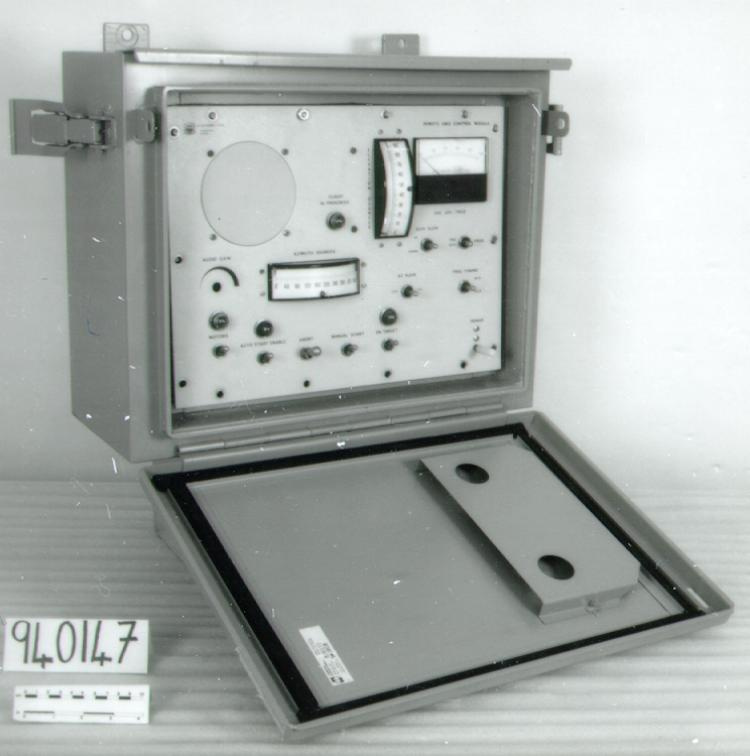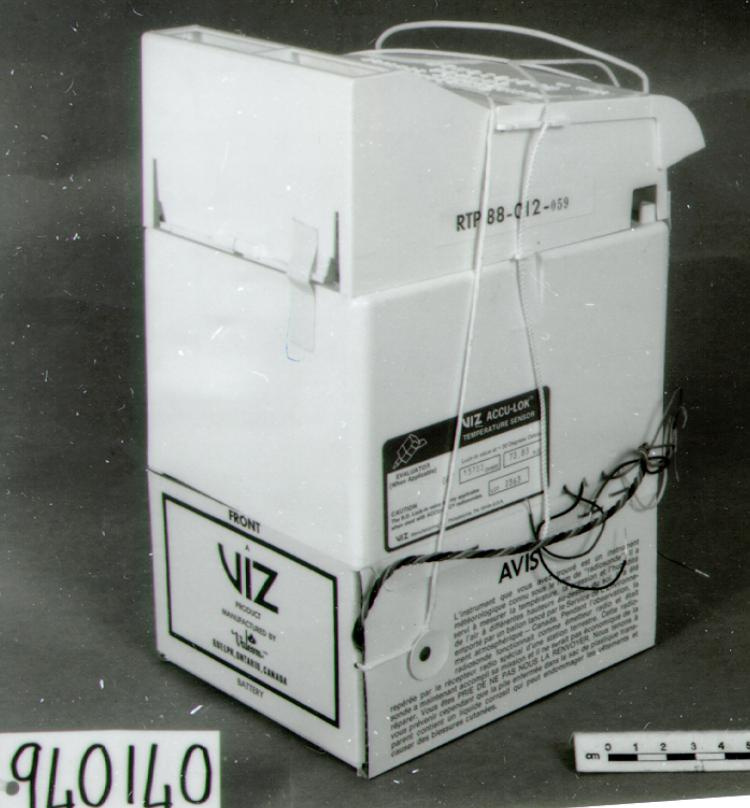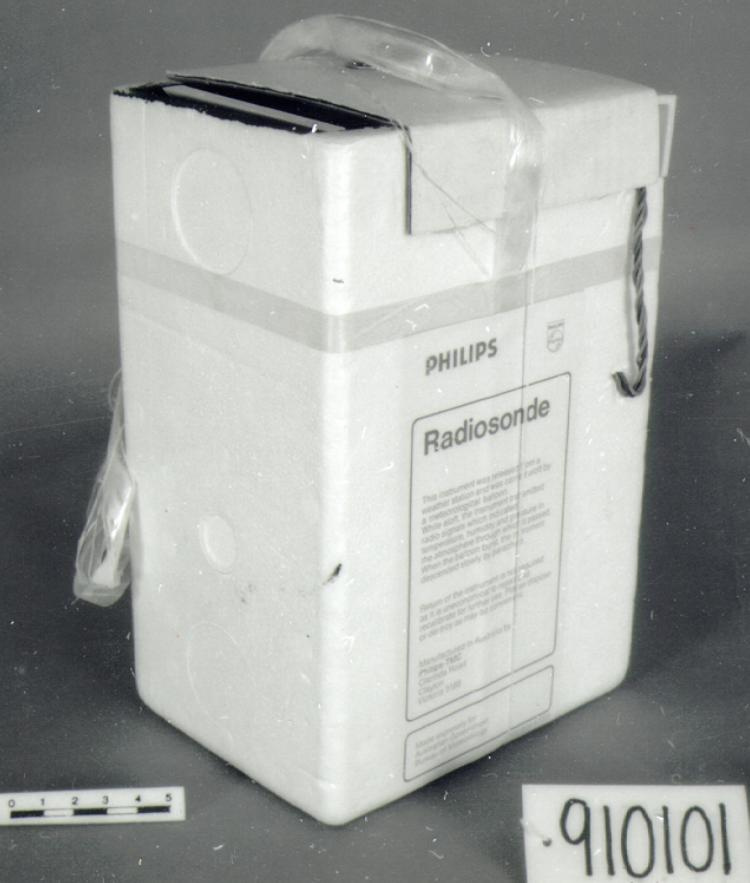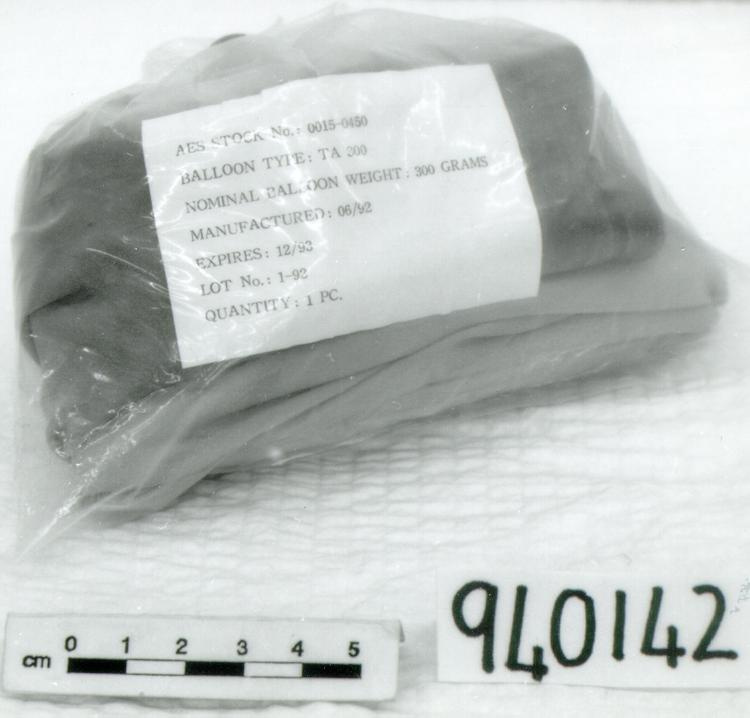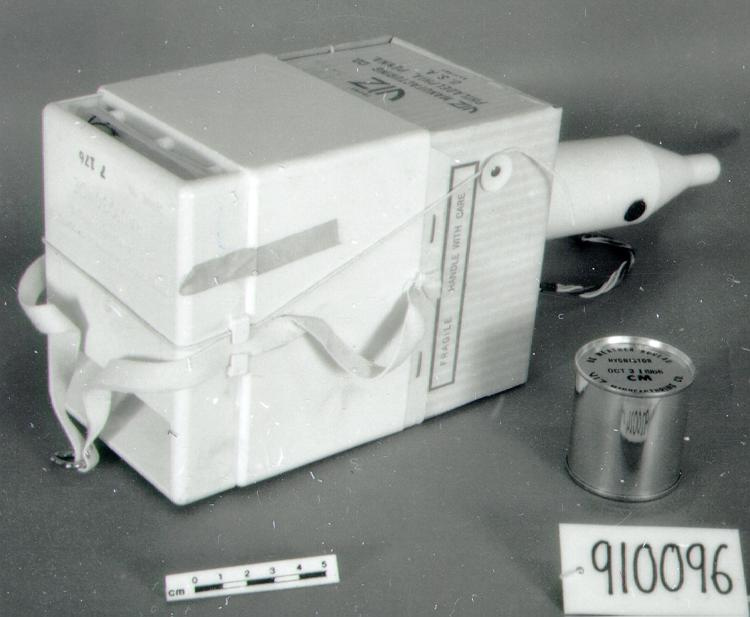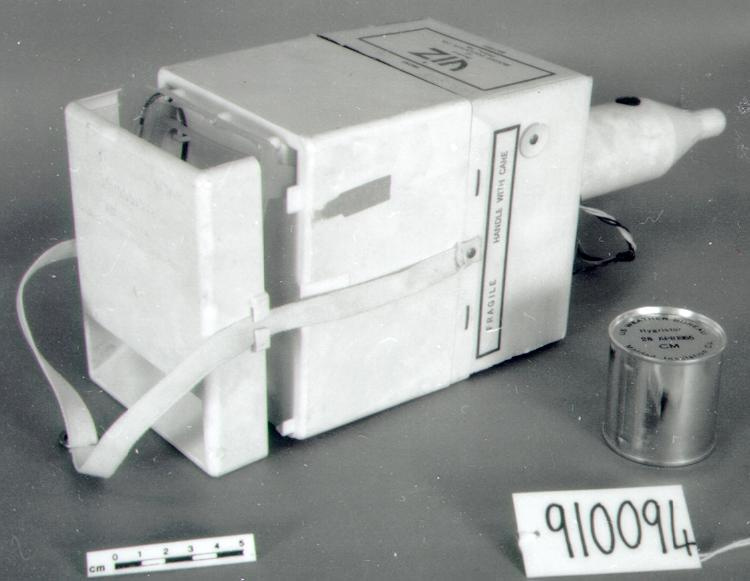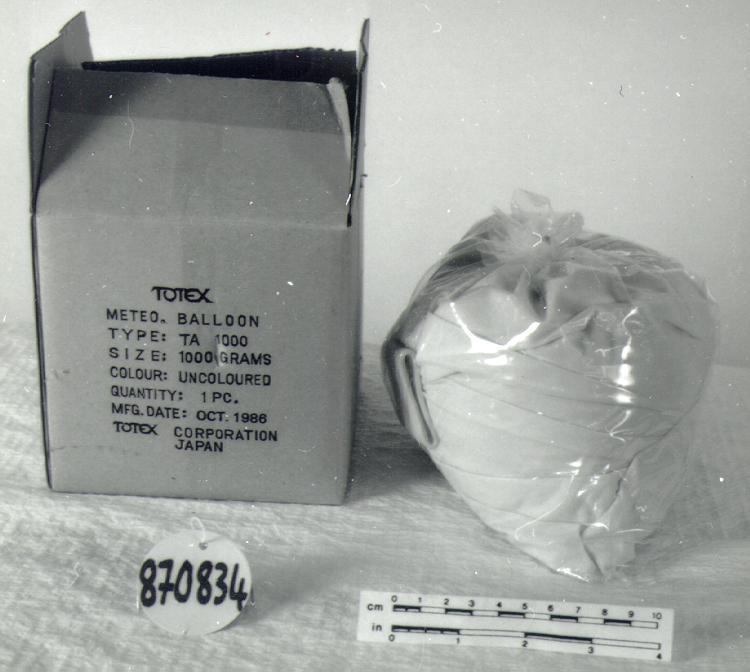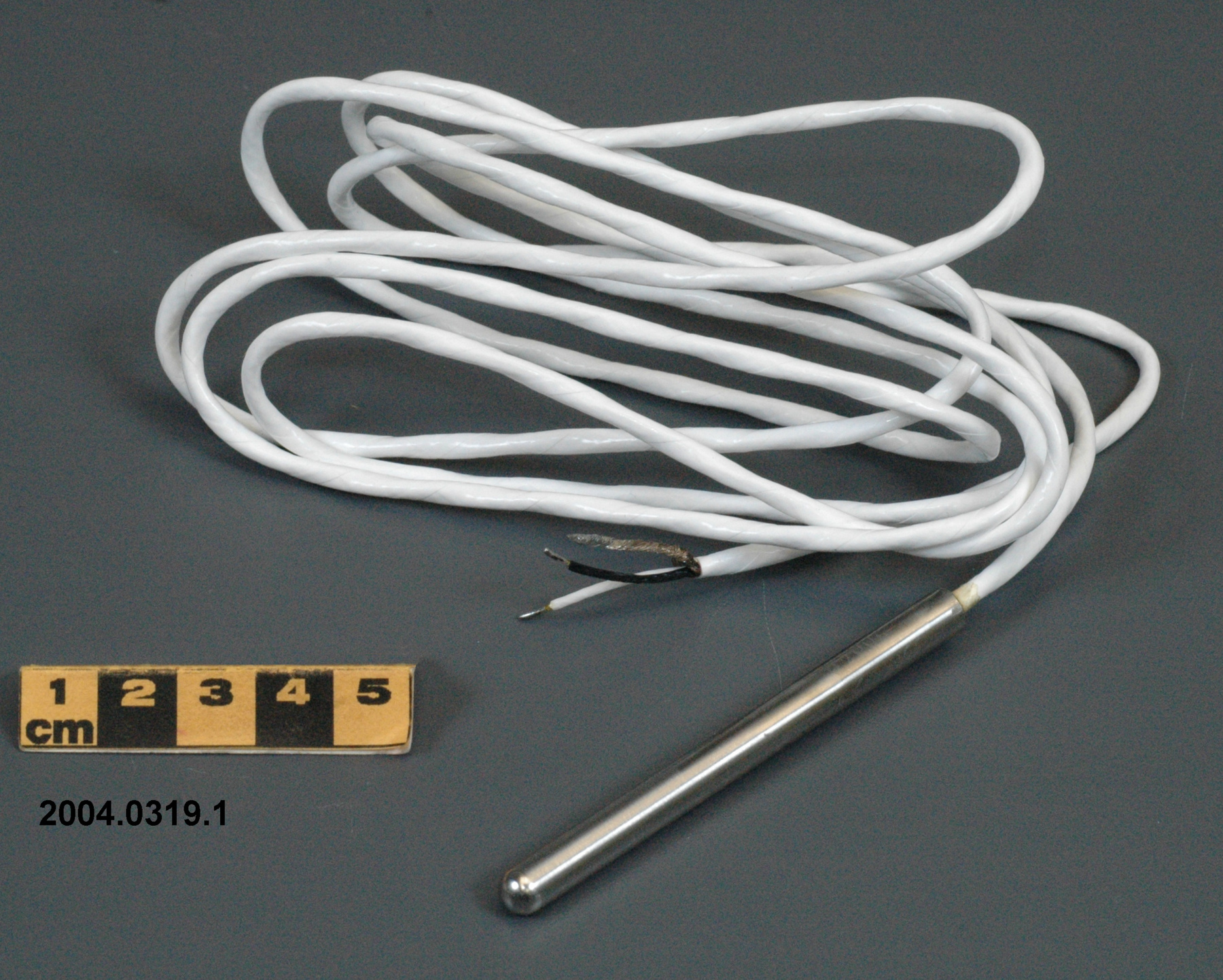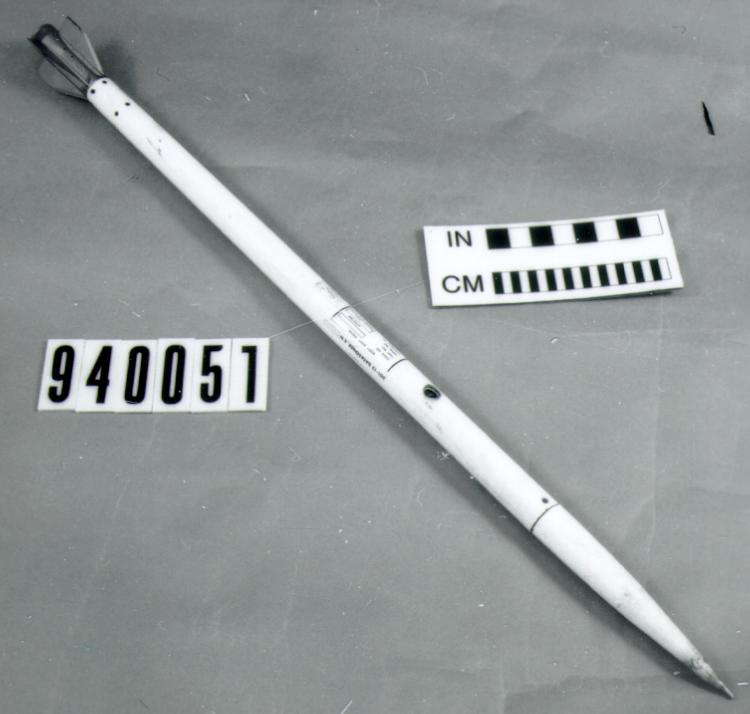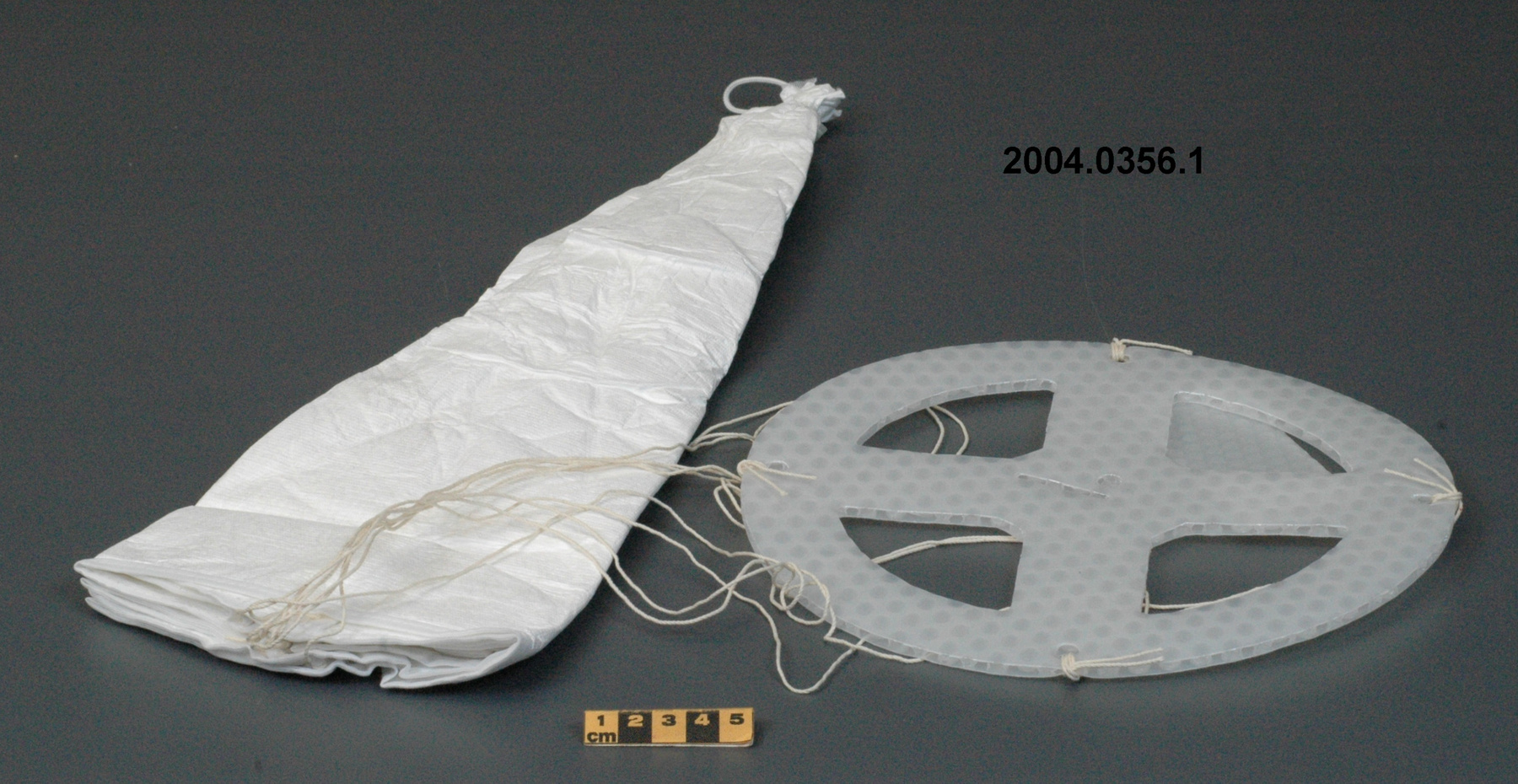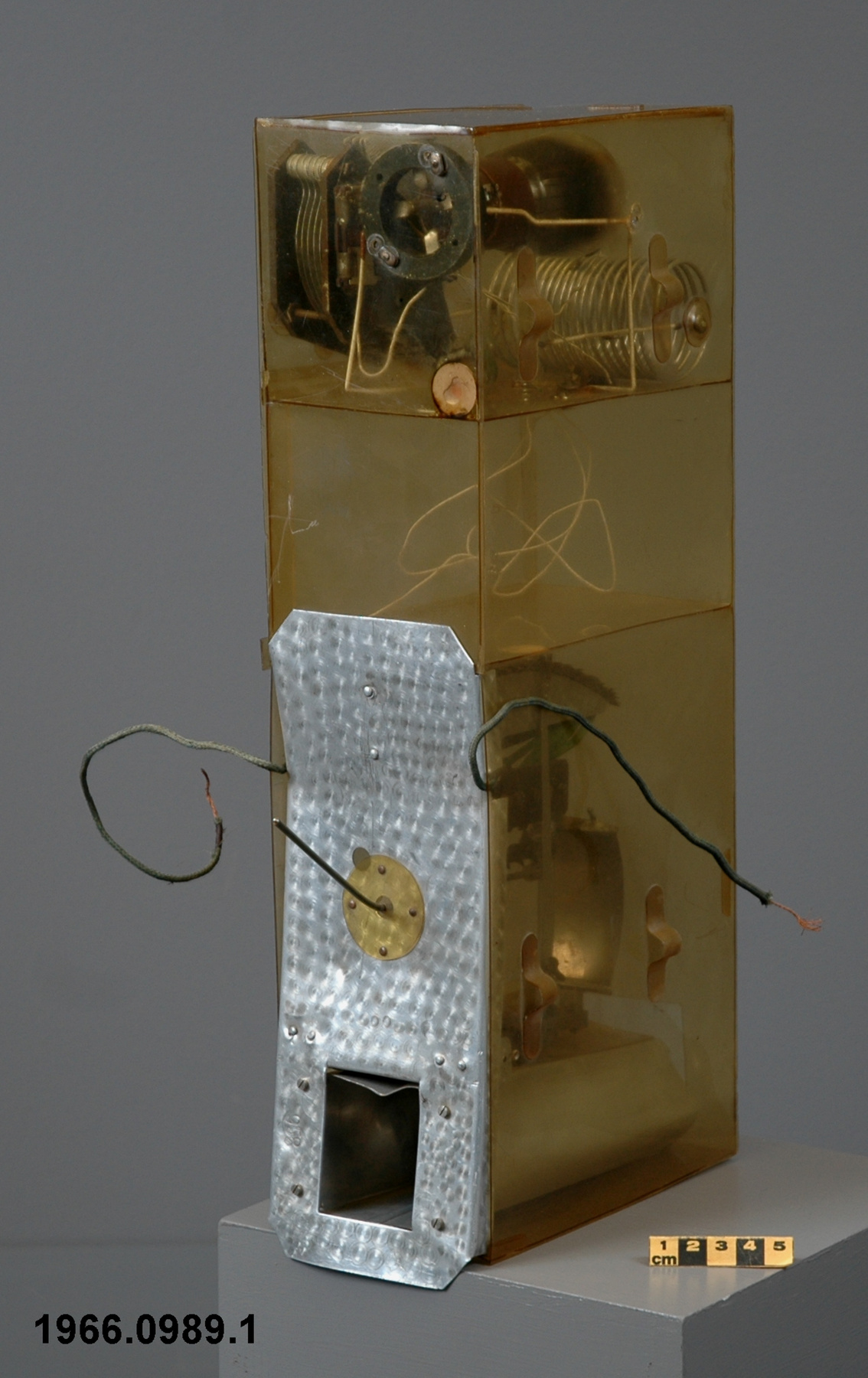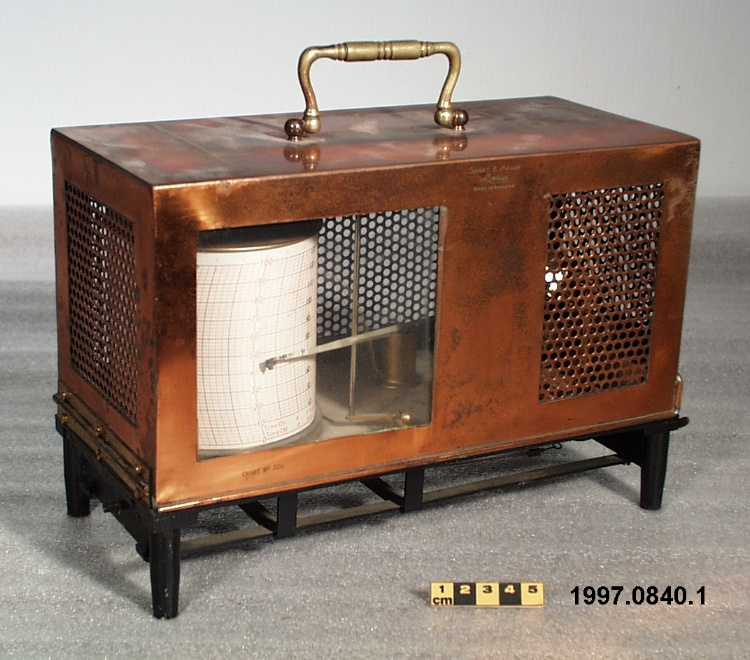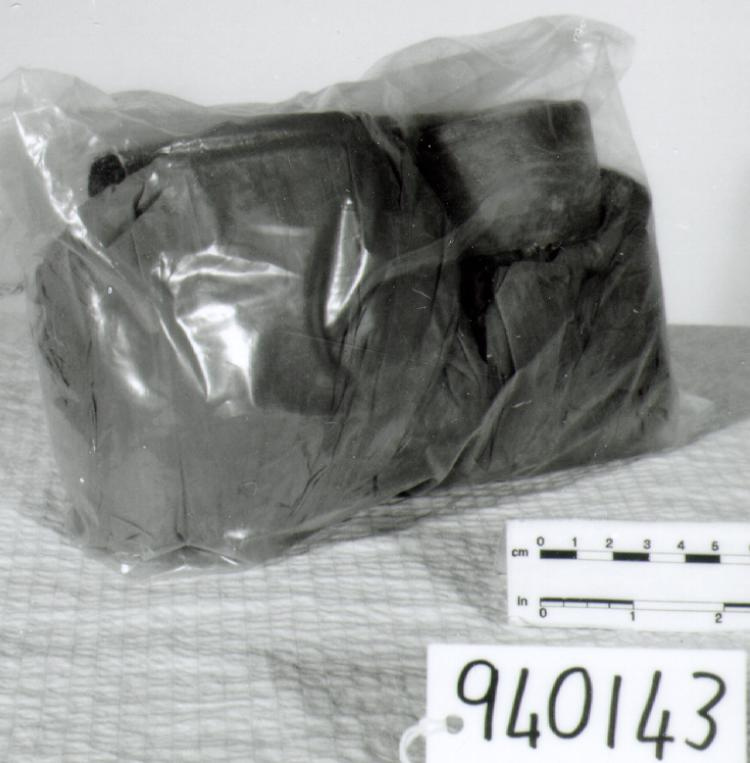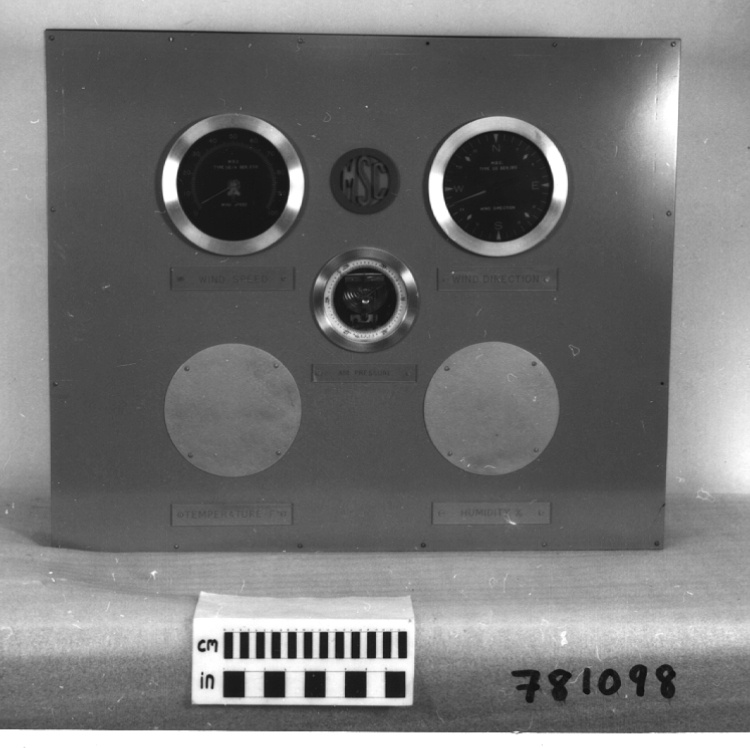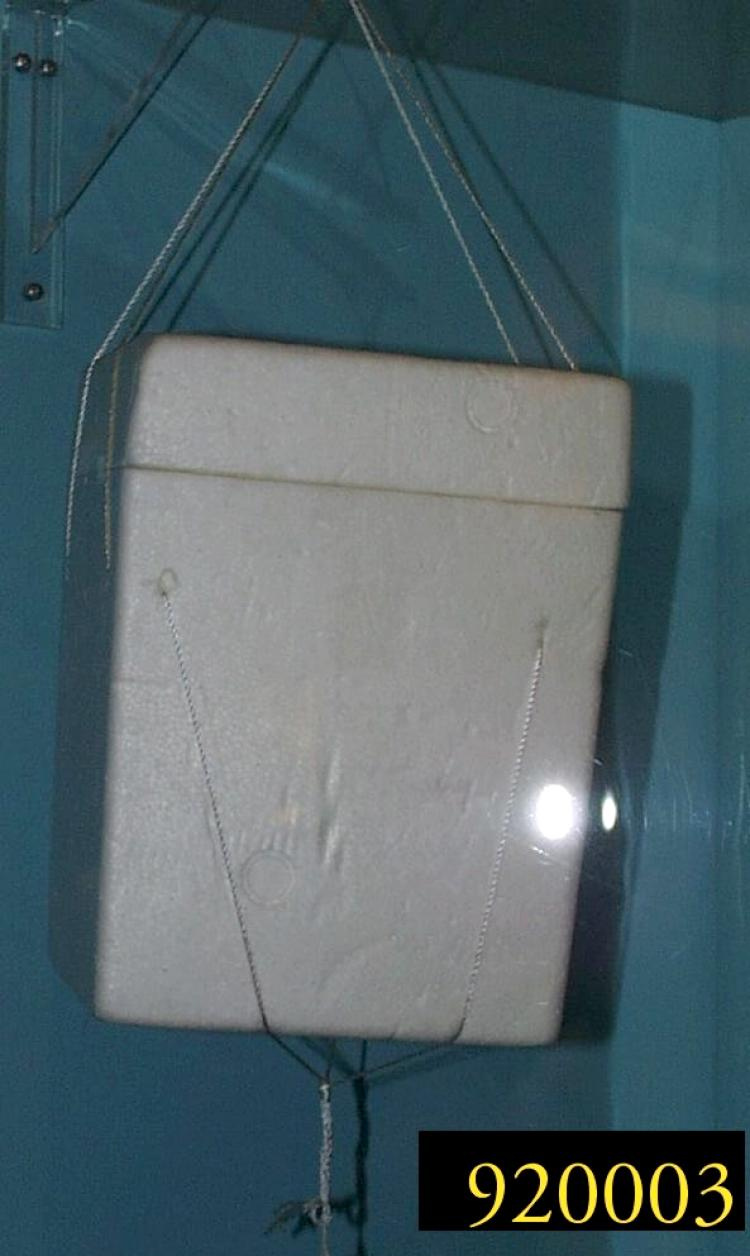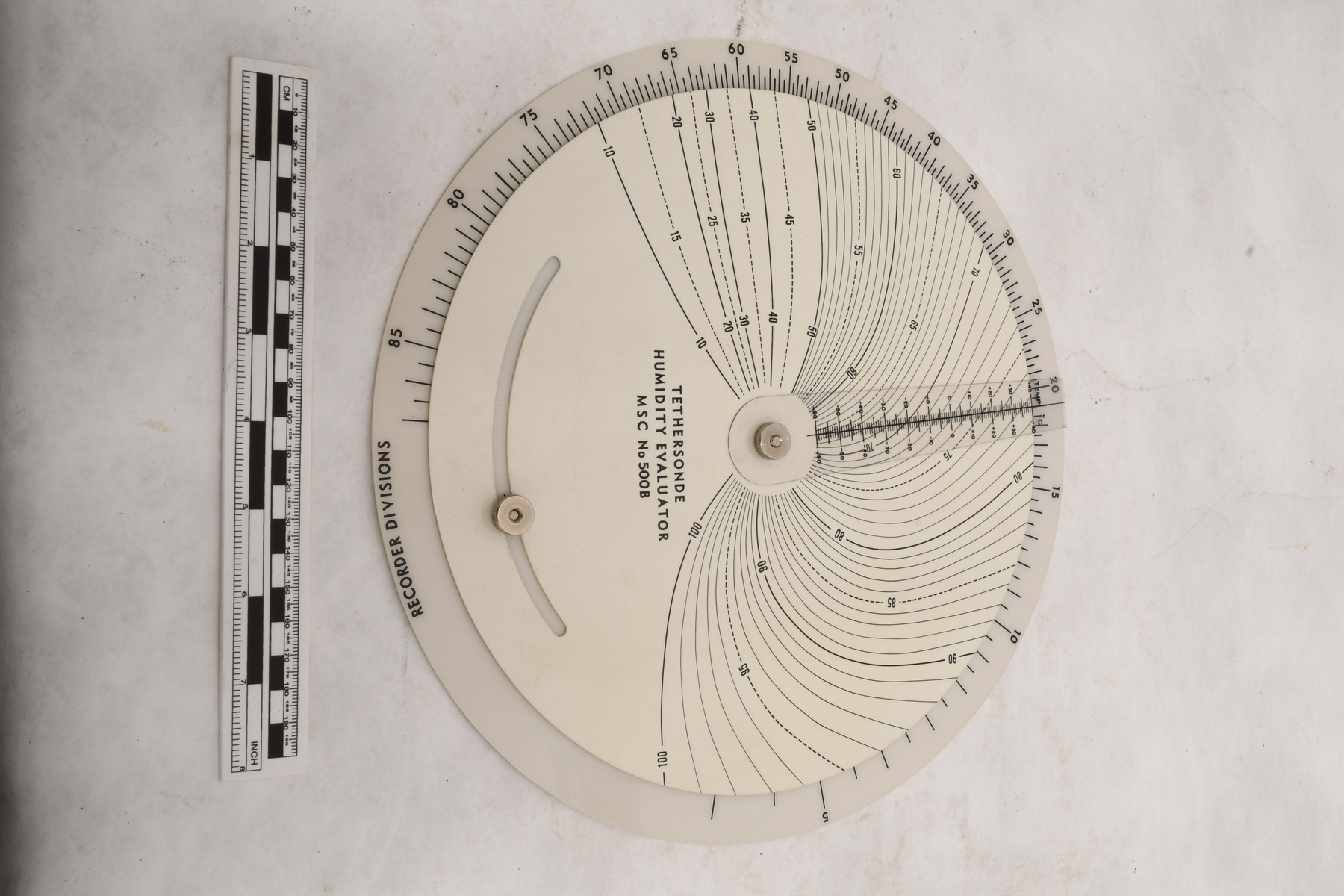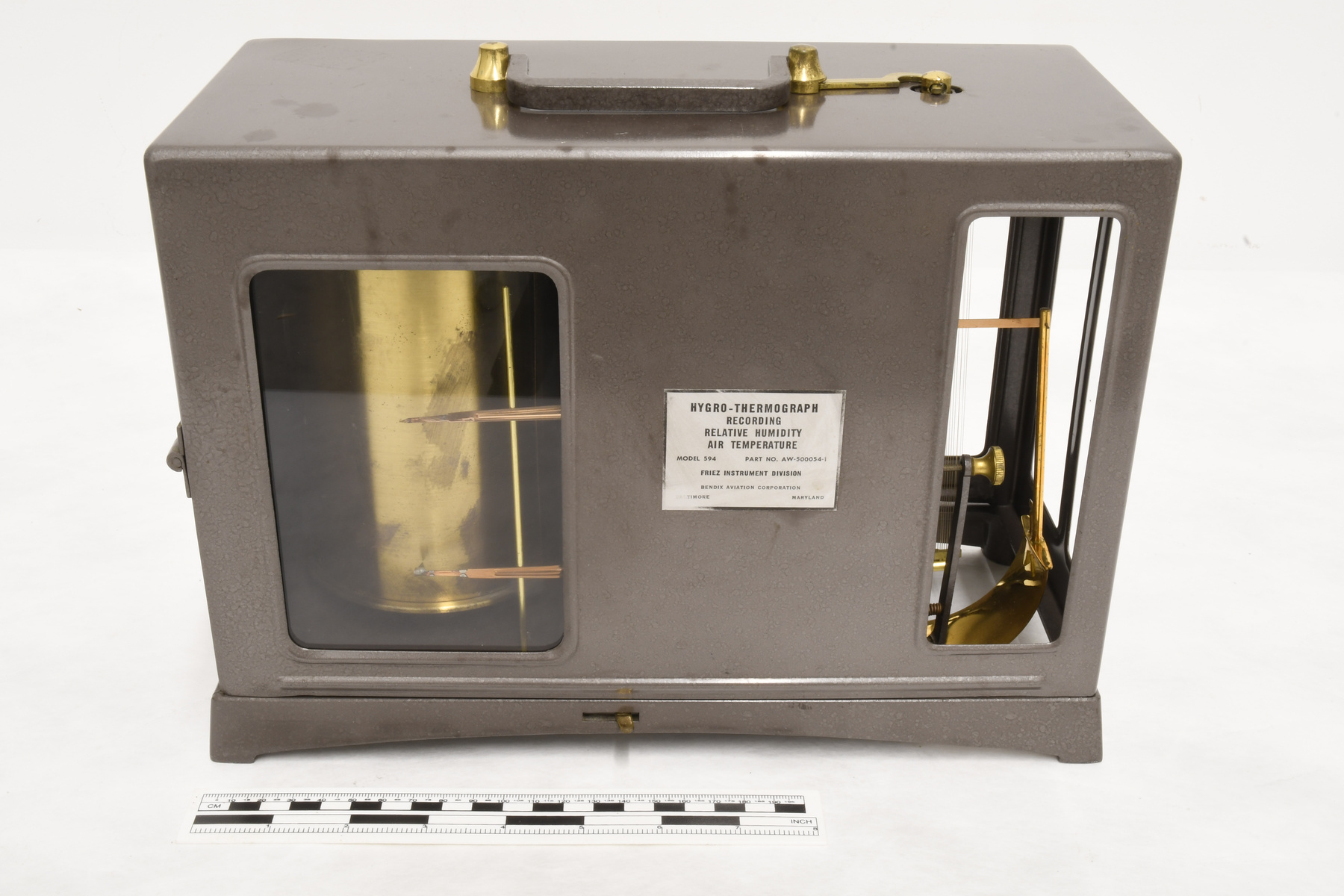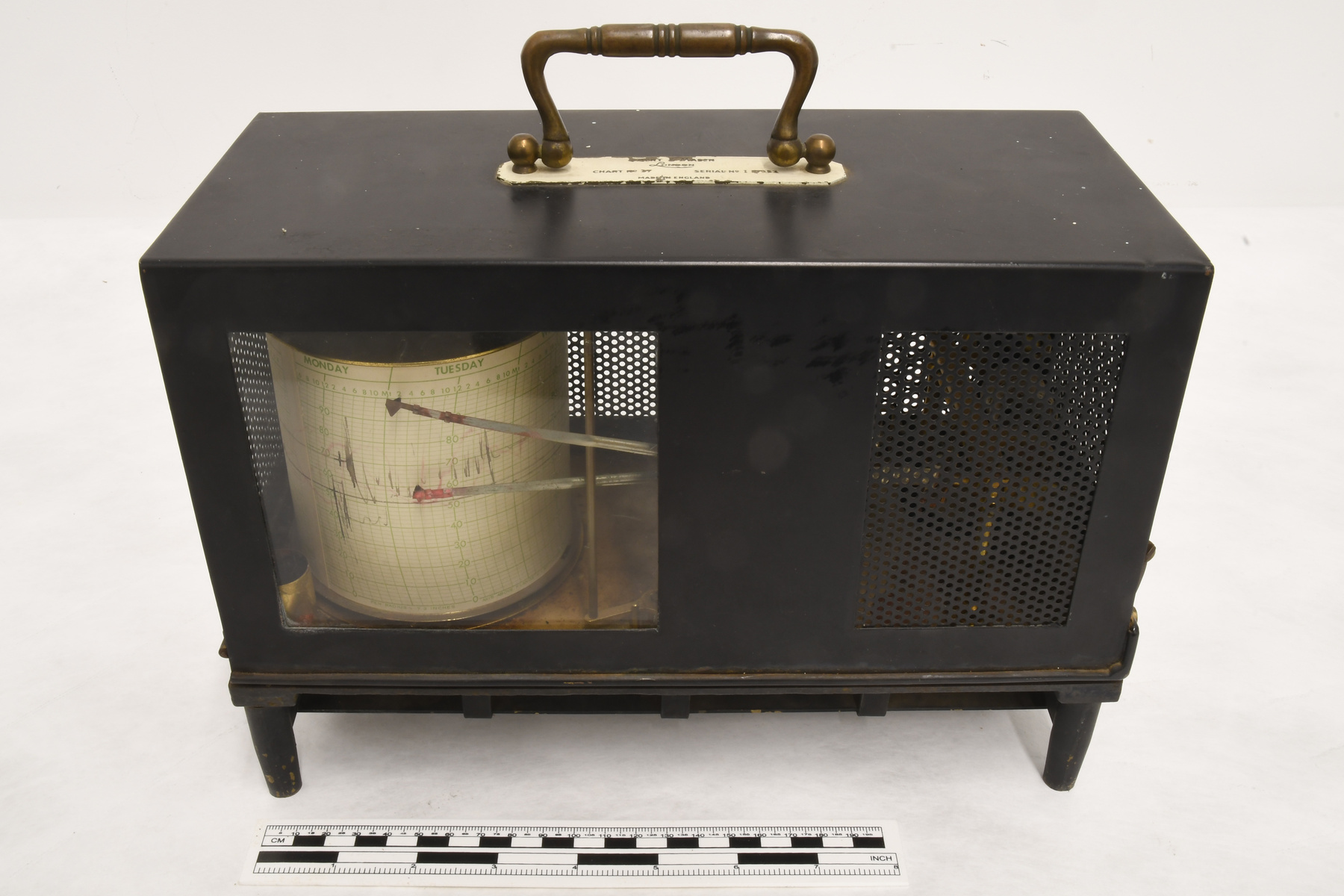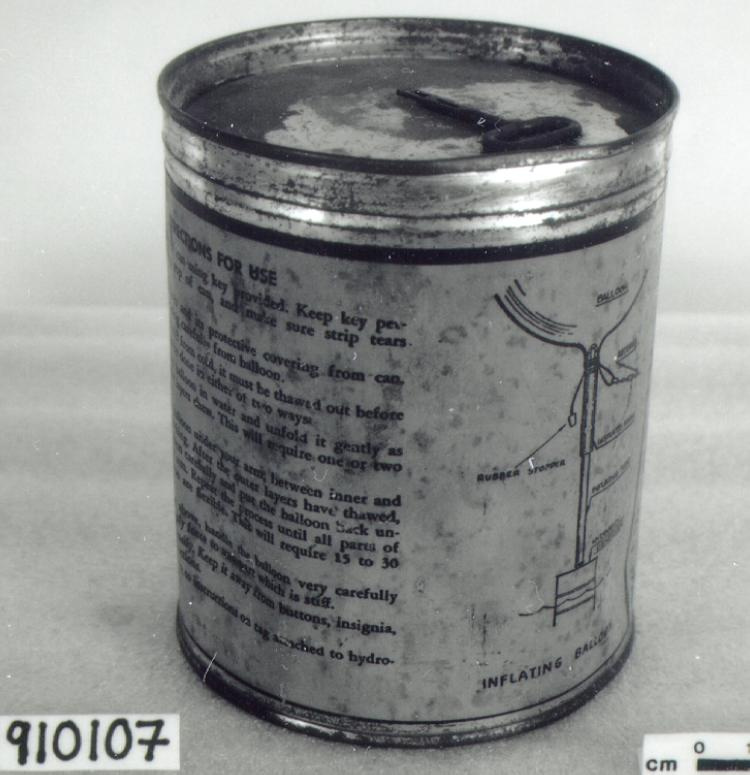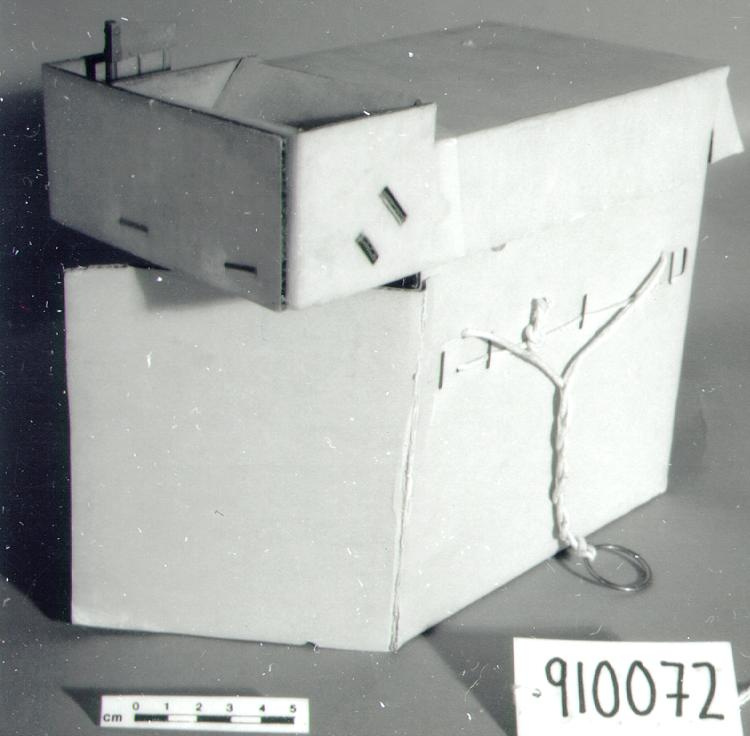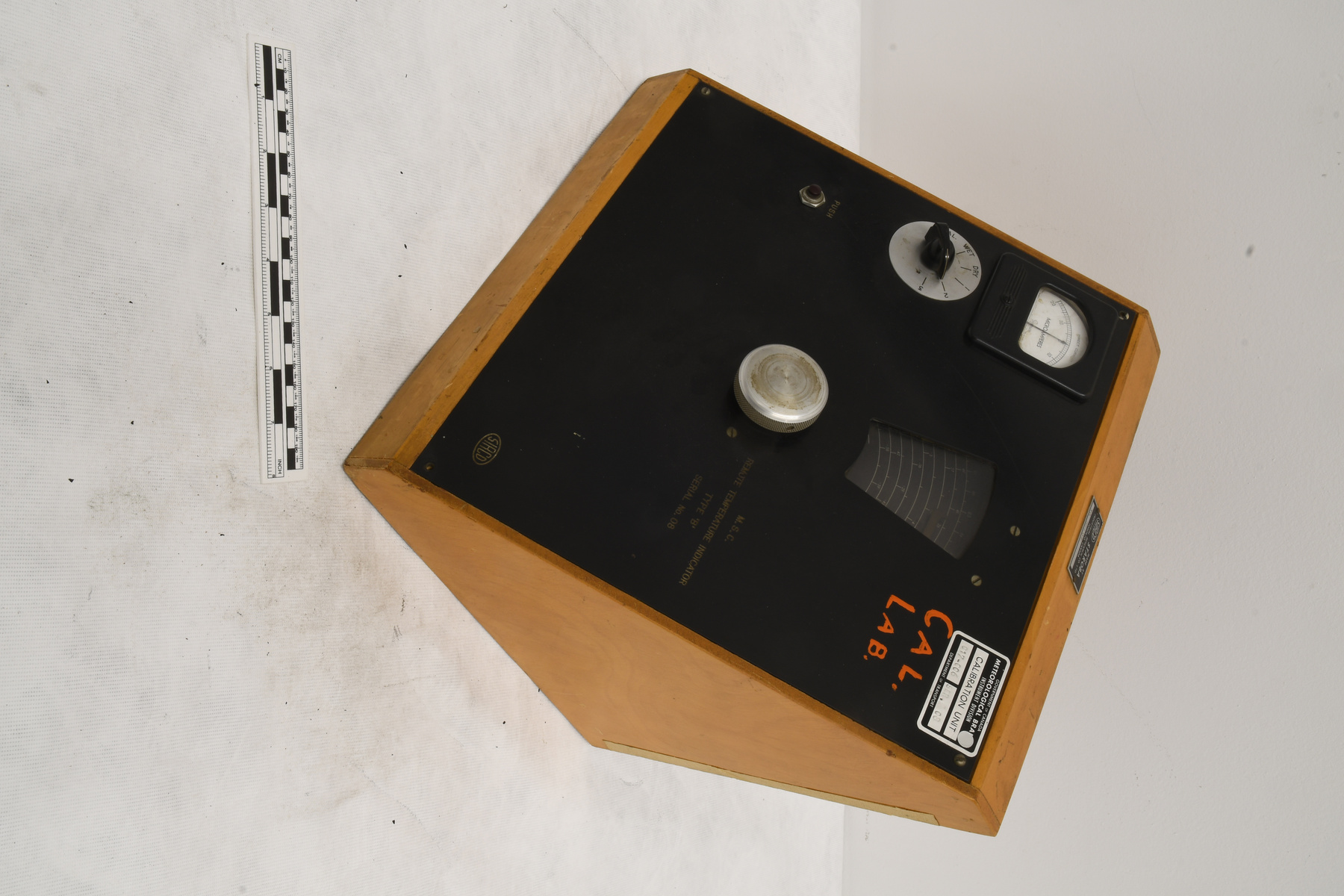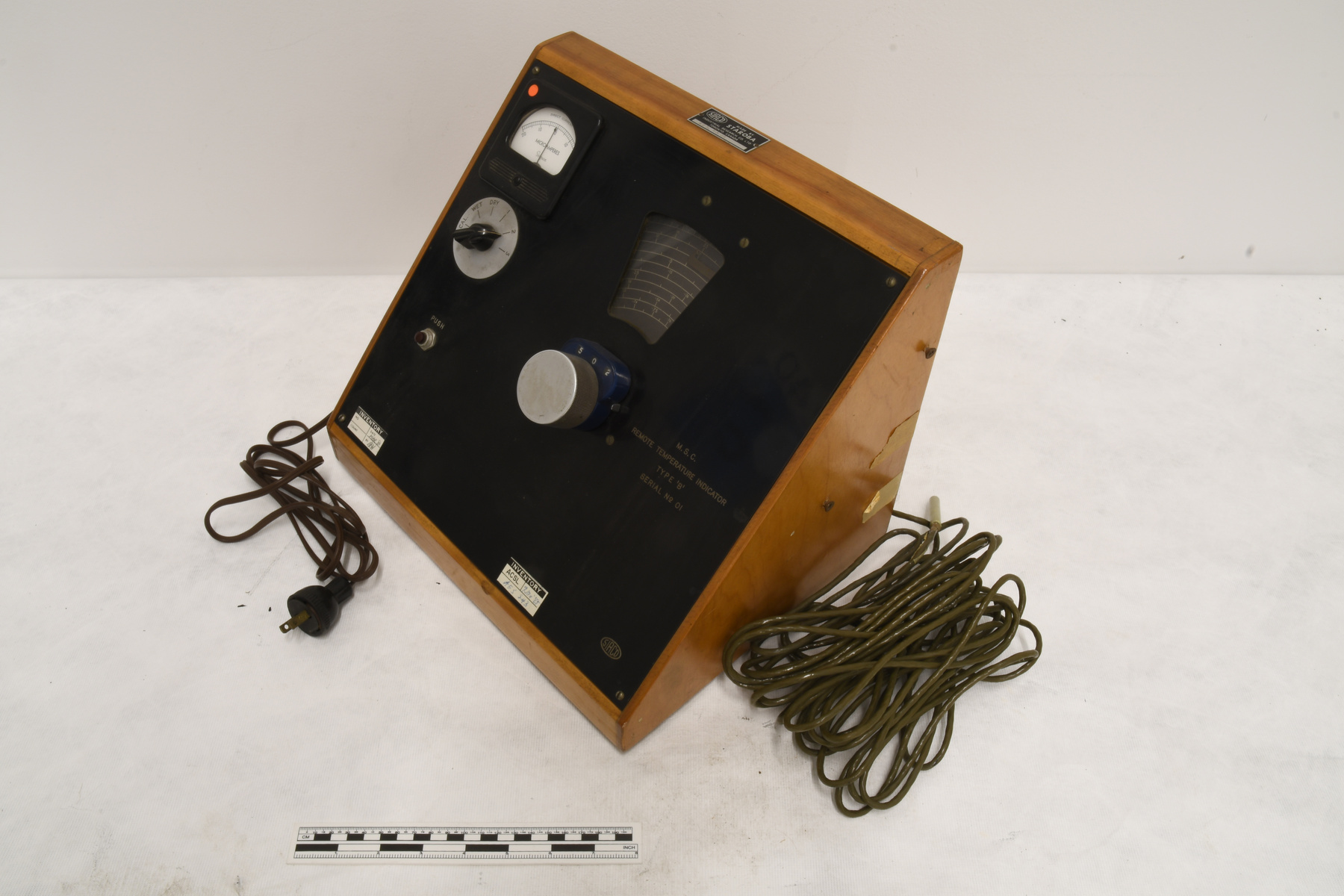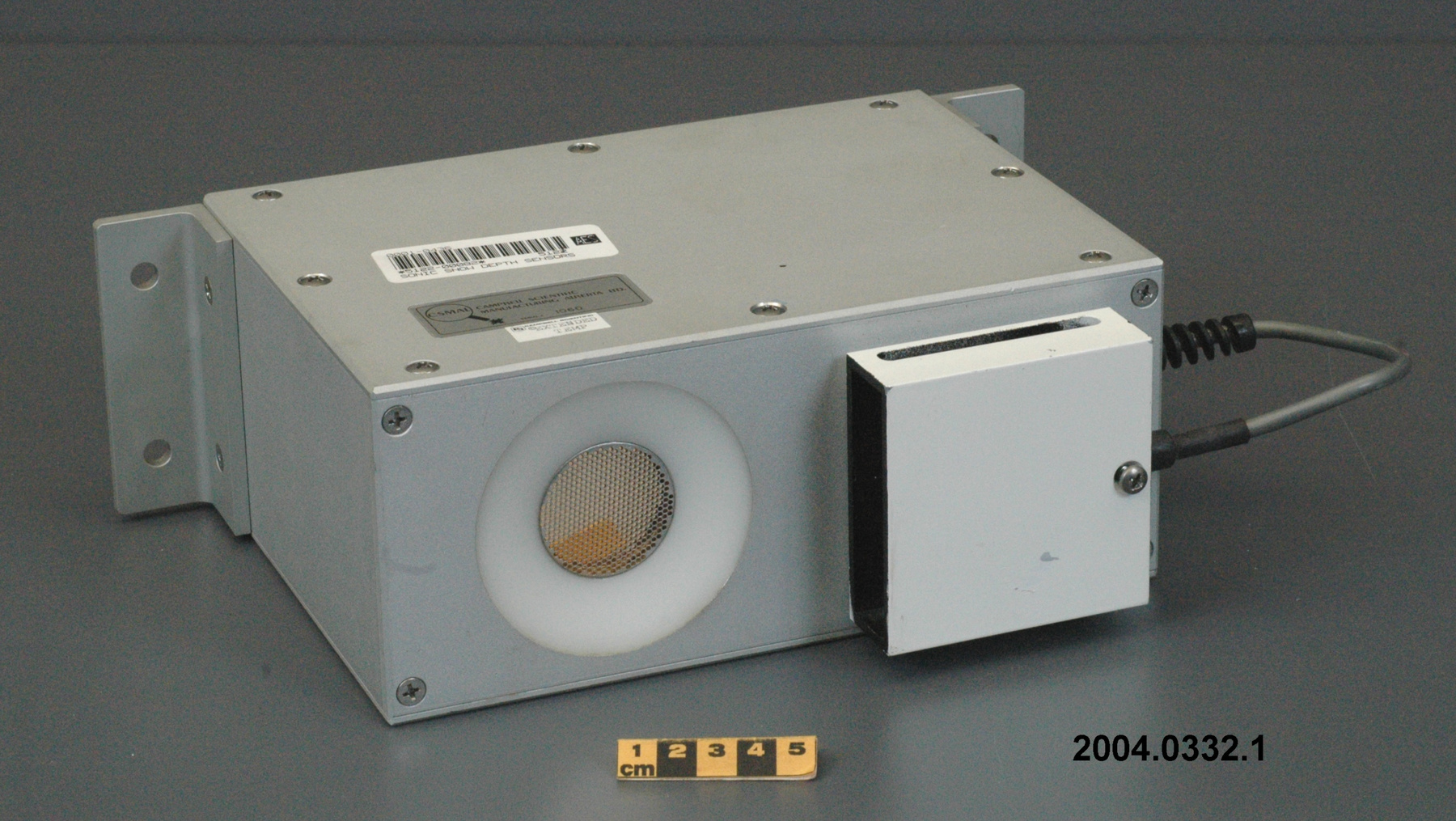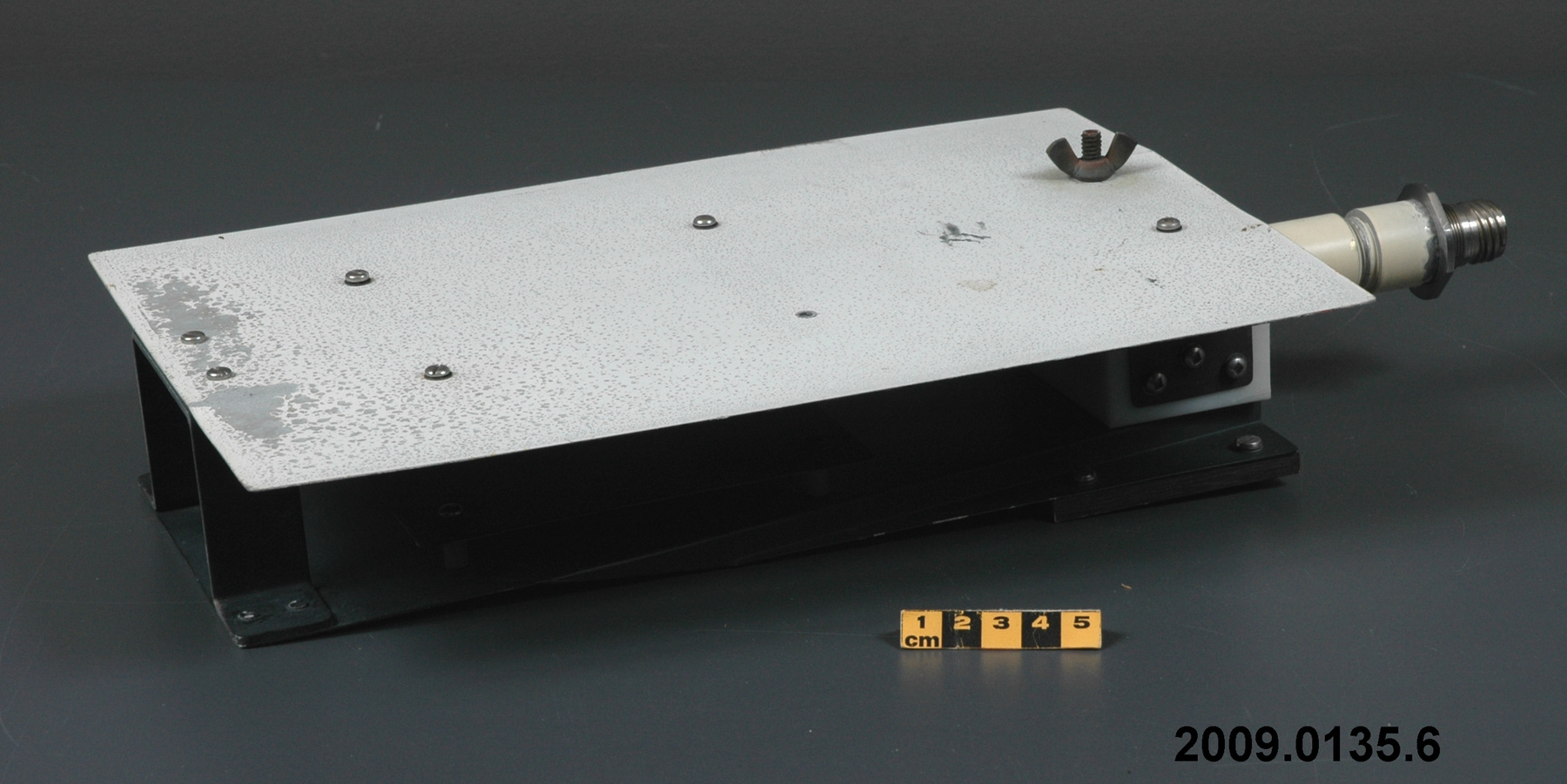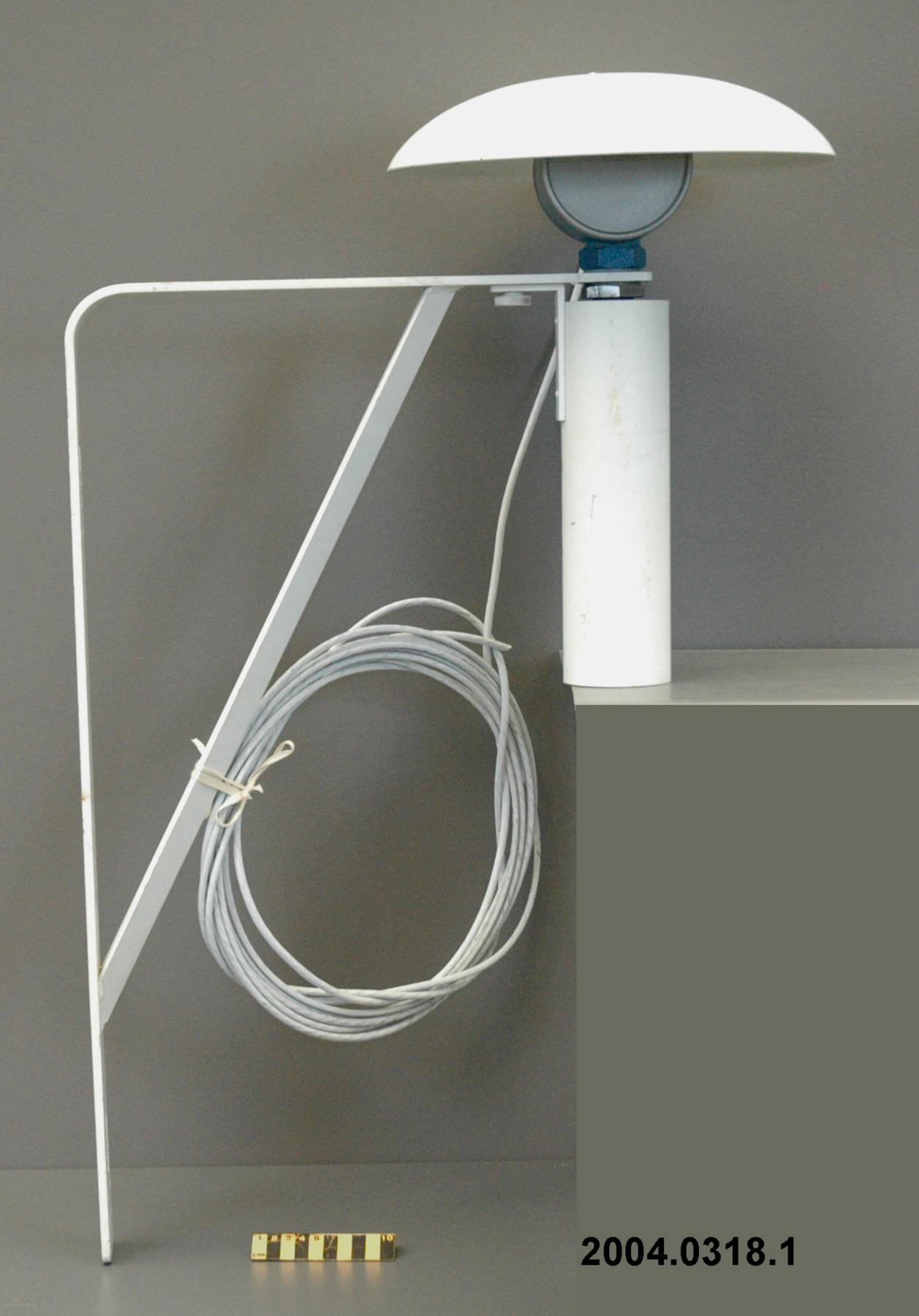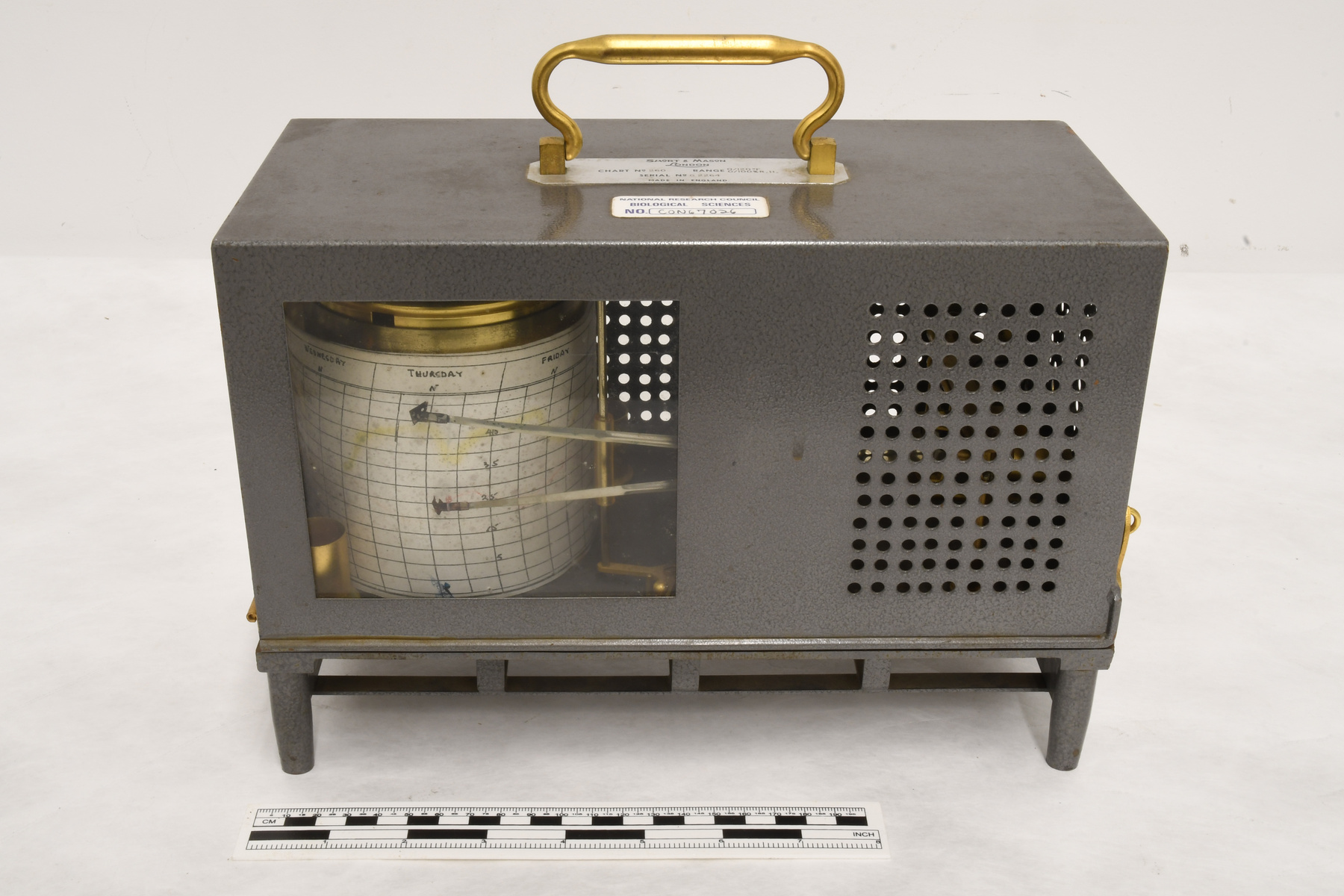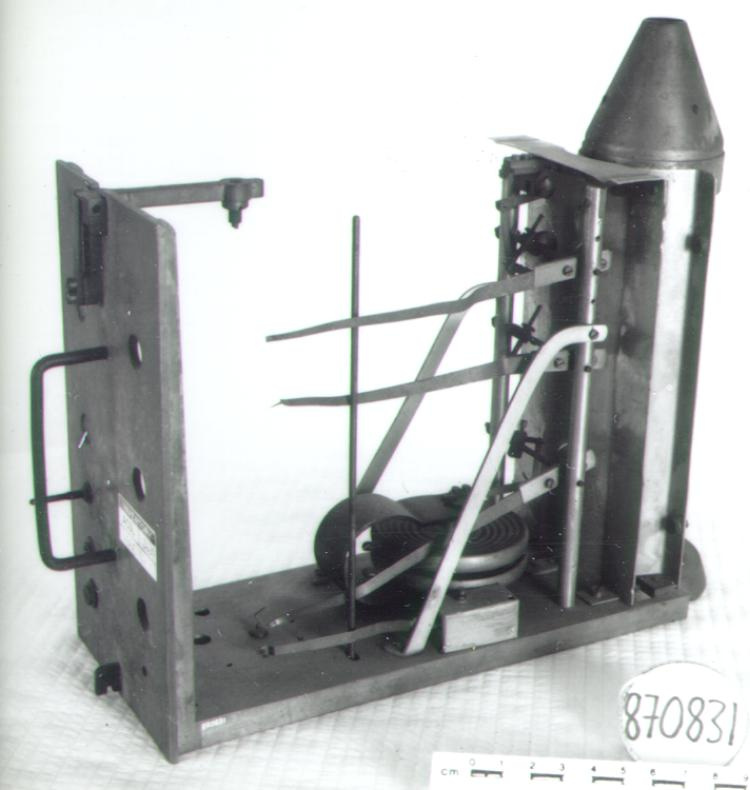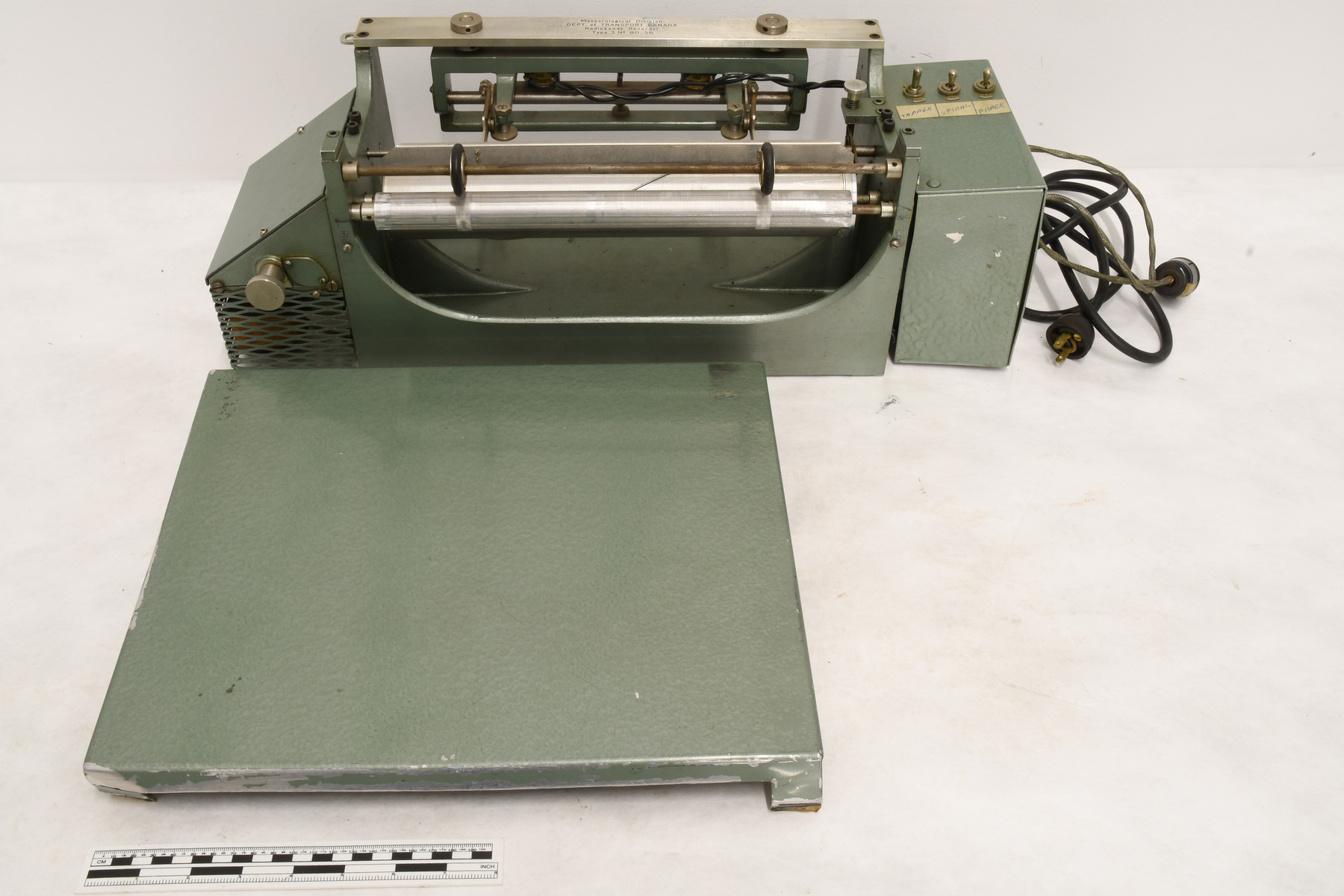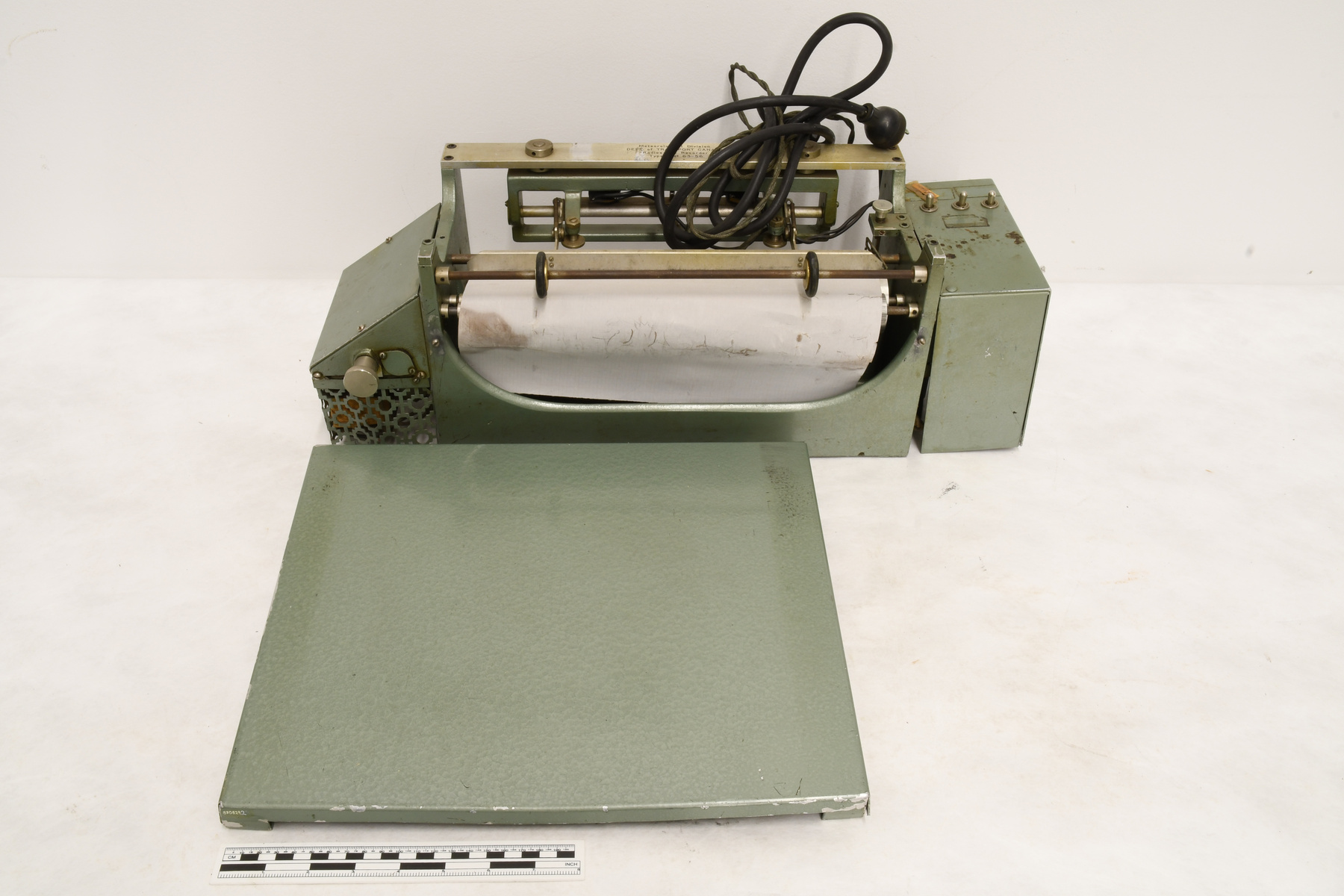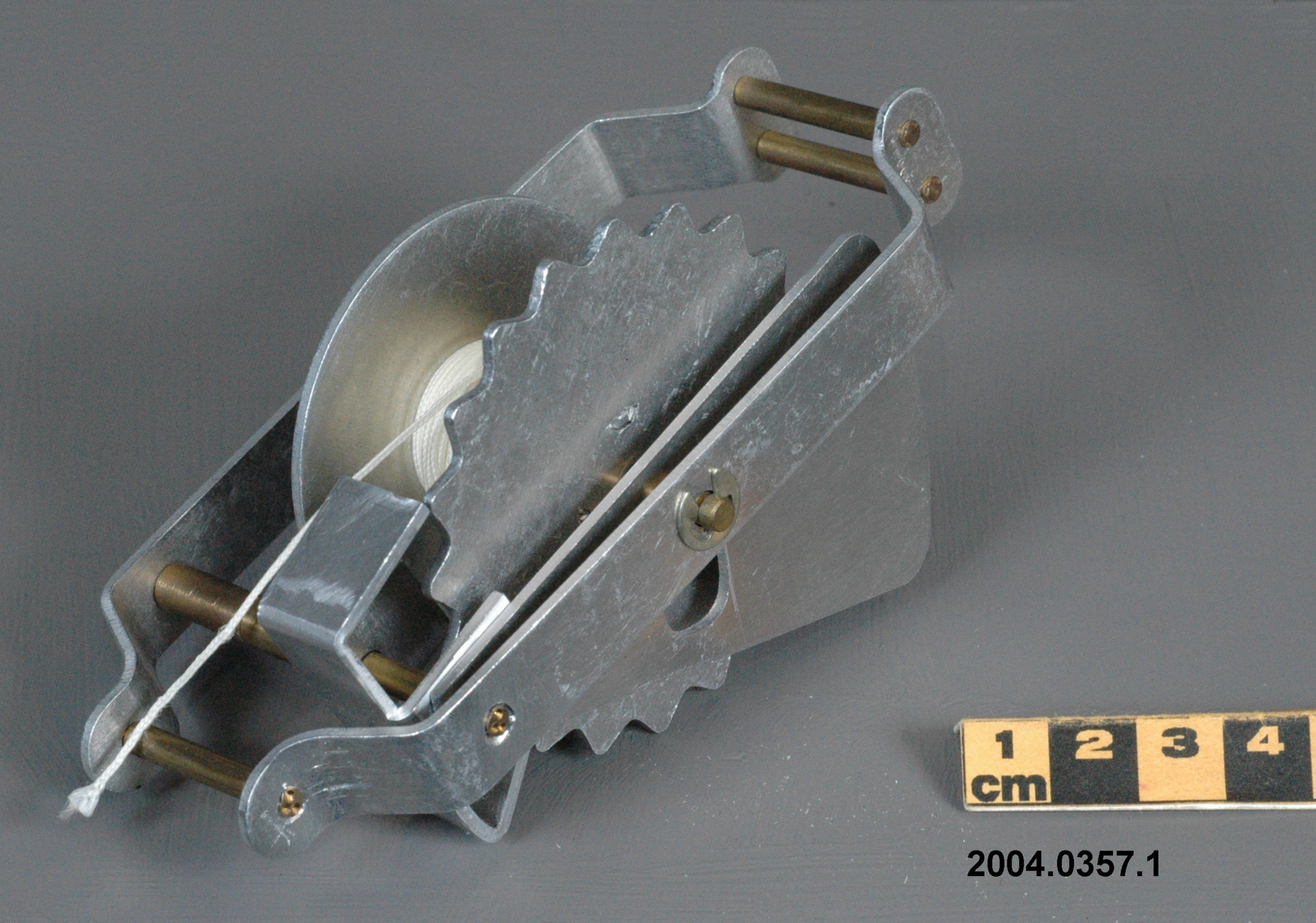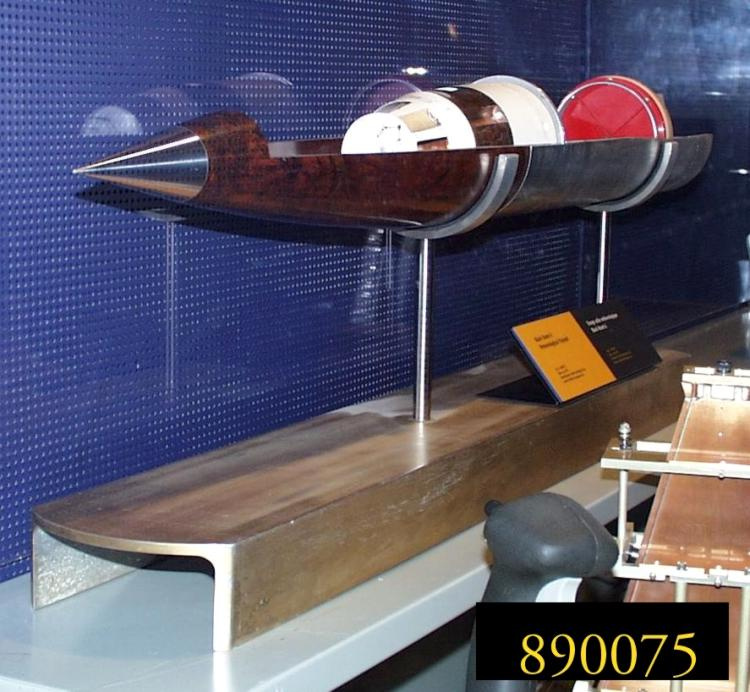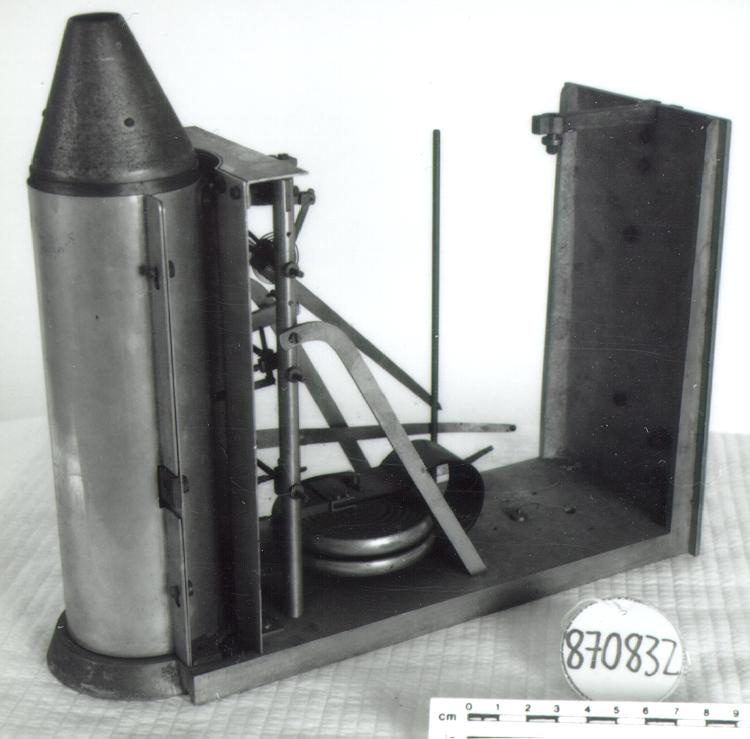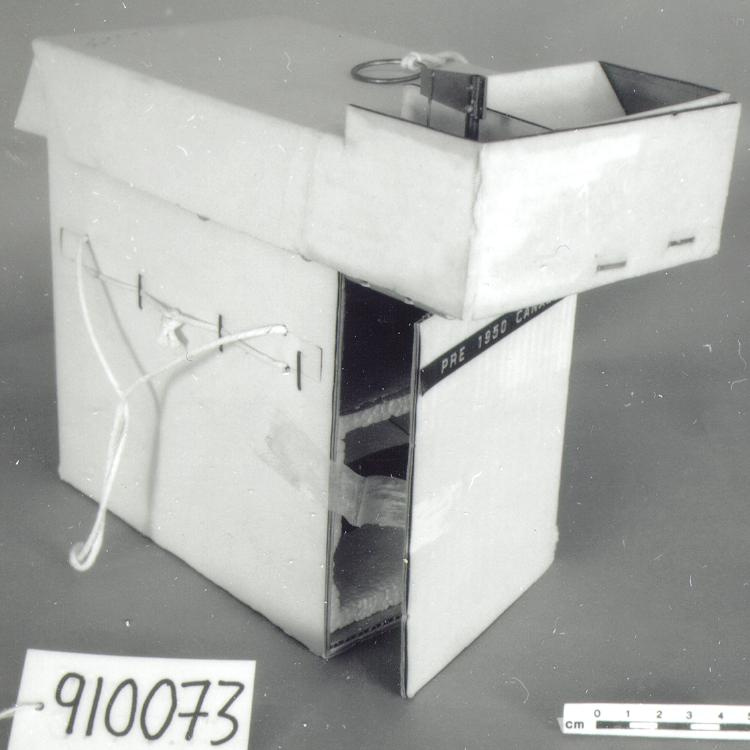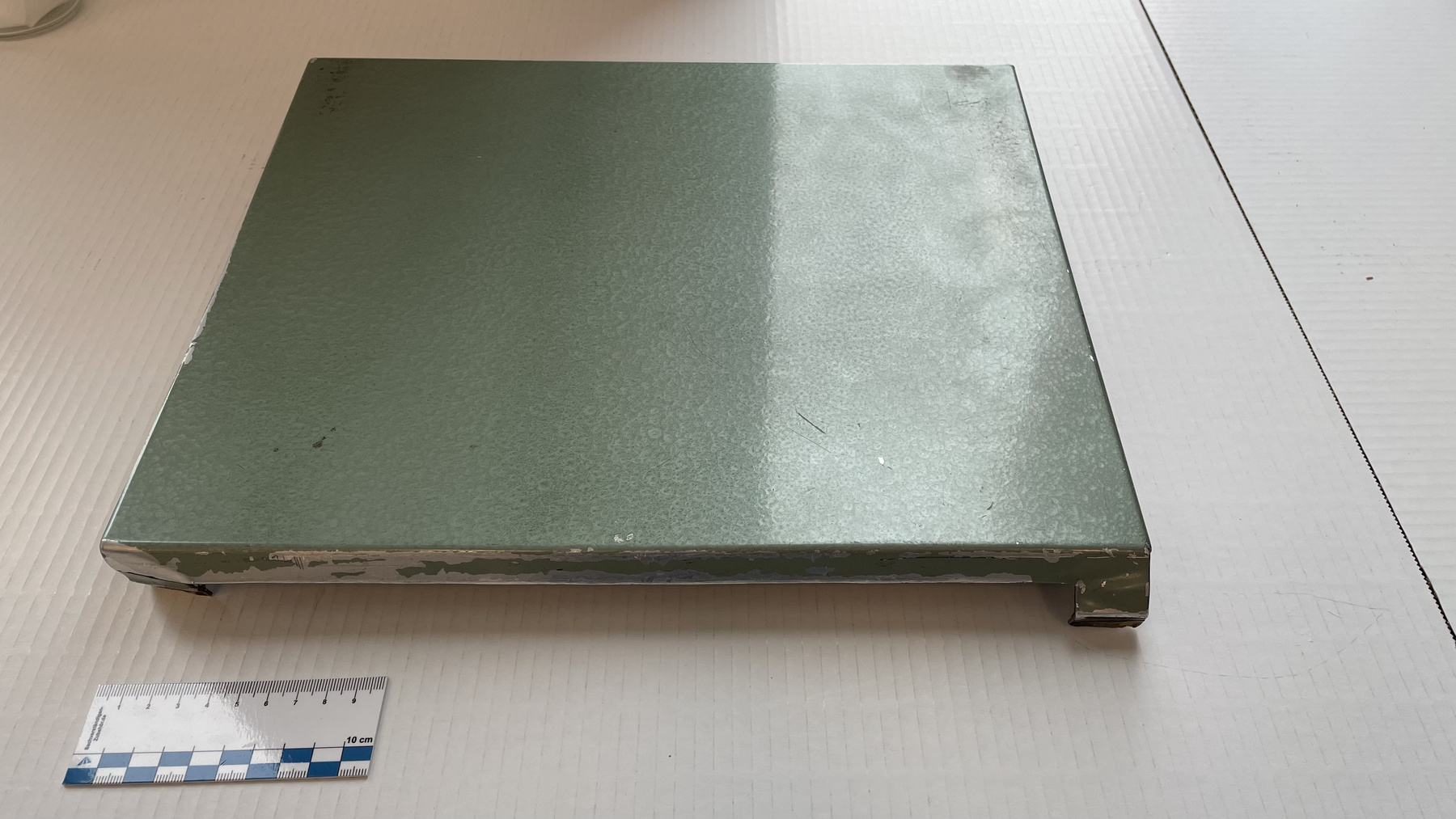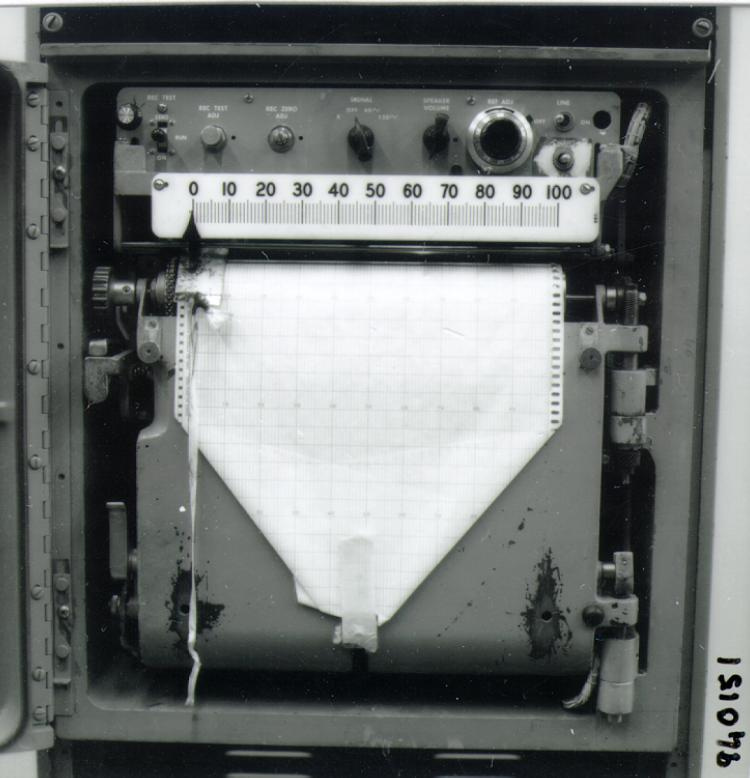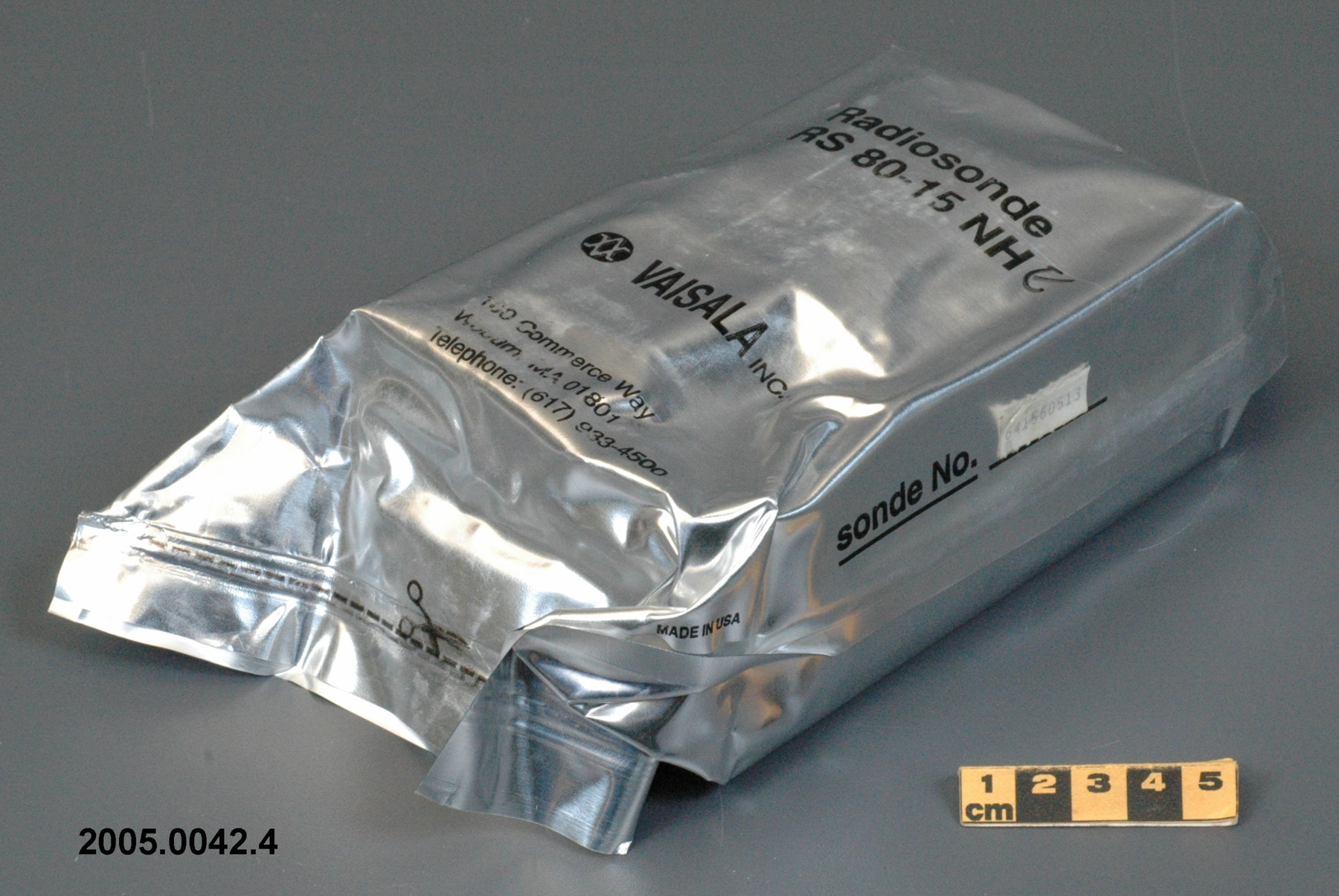Radiosonde
Utiliser cette image
Puis-je réutiliser cette image sans autorisation? Oui
Les images sur le portail de la collection d’Ingenium ont la licence Creative Commons suivante :
Copyright Ingenium / CC BY-NC-ND (Attribution-NonCommercial 4.0 International (CC BY-NC 4.0)
ATTRIBUER CETTE IMAGE
Ingenium,
2005.0042.004
Permalien:
Ingenium diffuse cette image sous le cadre de licence Creative Commons et encourage son téléchargement et sa réutilisation à des fins non commerciales. Veuillez mentionner Ingenium et citer le numéro de l’artefact.
TÉLÉCHARGER L’IMAGEACHETER CETTE IMAGE
Cette image peut être utilisée gratuitement pour des fins non commerciales.
Pour un usage commercial, veuillez consulter nos frais de reproduction et communiquer avec nous pour acheter l’image.
- TYPE D’OBJET
- capacitance/Navaid/Omega
- DATE
- 1996
- NUMÉRO DE L’ARTEFACT
- 2005.0042.004
- FABRICANT
- Vaisala Inc.
- MODÈLE
- RS80-15NH
- EMPLACEMENT
- Woburn, Massachusetts, United States of America
Plus d’information
Renseignements généraux
- Nº de série
- 641560513
- Nº de partie
- 4
- Nombre total de parties
- 4
- Ou
- S/O
- Brevets
- S/O
- Description générale
- styrofoam casing with cardboard covering/ synthetic antenna and wire coverings, hanger, parts/ metal wire, grommets, parts/ paper strips
Dimensions
Remarque : Cette information reflète la taille générale pour l’entreposage et ne représente pas nécessairement les véritables dimensions de l’objet.
- Longueur
- 24,0 cm
- Largeur
- 10,5 cm
- Hauteur
- S/O
- Épaisseur
- 7,5 cm
- Poids
- S/O
- Diamètre
- S/O
- Volume
- S/O
Lexique
- Groupe
- Météorologie
- Catégorie
- Mesure de vitesse et direction du vent en altitude
- Sous-catégorie
- S/O
Fabricant
- Ou
- Vaisala
- Pays
- United States of America
- État/province
- Massachusetts
- Ville
- Woburn
Contexte
- Pays
- Canada
- État/province
- Inconnu
- Période
- mid 1980's to early 2000's
- Canada
-
An example of a radiosonde of a type used by the Meteorological Service of Canada at its 31 upper air observing stations mostly across southern Canada. In the 1980's the (American) National Bureau of Standards types of radiosondes (such as 1987.0824, 1987.0826, 1991.0095, 1991.0100), which had been the main operational radiosonde in Canada for fifty years, began to disappear. Gradually starting in 1985 they were replaced by the Viz/Beukers Mark I/II (2004.0360, 2005.0043) and the Vaisala RS80 NAVAID radiosondes (2004.0358-0359, 2005.0041-0042. The RS80 was being used at all Canadian stations by 1999. By 2004 the MSC was considering replacing the latter with the Vaisala RS90 or RS92 (Ref. 2). In 2007 the RS80 was still available from Vaisala but had been superseded by the RS92 (Ref. 5). Part of a large collection of meteorological instruments acquired from the Meteorological Service of Canada (previously Atmospheric Environment Service) by the CSTM since 1967. MSC is the government agency responsible for collecting and disseminating meteorological data and forecasts in Canada. It was founded in 1871 in Toronto where it is still headquartered. The MSC was originally on the University of Toronto downtown campus but moved to Downsview in 1971 on land owned by UofT. The headquarters houses laboratories, research facilities and calibration and instrument maintenance facilities (now largely contracted out). - Fonction
-
A device lifted by balloon into the upper atmosphere to measure temperature, humidity, and air pressure and transmit the data to earth. Wind speed and direction can be determined by tracking the radiosonde. - Technique
-
A type of radiosonde which uses signals from a system of navigational radio transmitters to determine the position of an ascending balloon (and thus wind velocity and direction), known as the Navaid method. A receiver in the sonde detects navigational signals which are sent to the ground station for positional determination from which the winds are calculated. This version of the Vaisala RS80 radiosonde is equipped to measure upper wind speed and direction by means of the Omega Navaid global network (Ref. 4). The Meteorological Service of Canada exclusively used the Finnish Vaisala RS80 family of radiosondes which were introduced in 1983. They were manufactured in Woburn, Massachusetts by Vaisala Inc, but are now manufactured in Finland. At release the RS80 weighs 240 gm including the battery and train unwinder. The radiosonde is packaged in styrofoam and its density is low so that it cannot damage anything when it lands. The 19 volt battery is activated by immersion in water when the instrument is being prepared. The battery will last for 135 minutes which is sufficient for the flight and the preflight preparations. Each radiosonde is shipped packed in a hermetically sealed metal foil bag to preserve the instrument and battery during storage which may be up to two years. The 403 MHz transmitter broadcasts with a power of 200 milliwatts. Each type of radiosonde has a built in antenna and receiver for its particular navigational signals. Several models of the RS80 were used for regular flights: the RS80 15LH is the Loran-C radiosonde; the RS80 15GH is the GPS radiosonde; the RS80 15FH is the VLF radiosonde (Ref.2). The RS80-15N measured the usual pressure, temperature and humidity but was also designed to measure upper air winds through the Omega Navaid global network (Ref. 4). The sensor package is on a separate circuit board which contains an aneroid pressure sensor (Barocap). The ceramic chip temperature sensor (Thermocap), and a polymer film humidity sensor (Humicap) are mounted on an external arm attached to this board. During a 1.5 second period an electronic commutator switches in each of the different sensors as well as two reference capacitors and the Barocap temperature sensor. All of these sensors use the variation in their capacitance to determine the parameter being measured. The RS80 radiosonde is capable of measuring this capacitance with a resolution of 10 -3 pF. The carrier frequency is amplitude modulated with the sensor information at a 10 kHz rate. Winds are computed in a number of ways and a different radiosonde is required for each method. Basically a receiver in the sonde detects navigational signals which are sent to the ground station for positional determination from which the winds are calculated (Ref. 2). To improve the accuracy of the former Omega navigational system Vaisala incorporated the ability to utilized other stable VLF transmissions into their ground station computations. The USA who funded the eight station worldwide Omega system shut it down in 1997 due to the availability and accuracy of the GPS. With this built in VLF capability the radiosonde system could still compute winds using the six the NATO Communications VLF (ComVLF) and three Russian Alpha (formerly Sigma) VLF navigational stations. While these VLF stations can be out of operations for months there is always enough stations available for the winds calculations. While winds can be computed from three stations, the accuracy is not sufficient and the ground station software requires that at least four of the nine stations be available. Canada is fortunate that the Alpha stations are all to the north and the ComVLF are south of the Canadian network. The resulting triangulation computations have low errors. Canada is the only major user of the RS80 VLF radiosondes and uses about 8,000 of these radiosondes per year. The ComVLF stations which are located in the United States, United Kingdom, Japan and Australia operate on separate frequencies from 10.2 to 13.1 kHz and are used for military communications. All of the Russian Alpha stations operate at 11.905 kHz and are used for navigation (Ref. 2). - Notes sur la région
-
Inconnu
Détails
- Marques
- markings of radiosonde itself unavailable (see .1)/ black lettering on front and sides reads 'RADIOSONDE/ RS80-15NH [with handwritten black 'E'?]/ [logo] VAISALA INC./ 100 Commerce Way/ Woburn. MA 01801/ Telephone: (617) 933-3500', '[logo] VAISALA (R)/ electronics for/ meteorology' and "MADE IN U.S.A. sonde No. 641560513 [on paper]'/
- Manque
- unknown
- Fini
- finish of radiosonde itself unavailable (see .1)/ silver foil bag
- Décoration
- S/O
FAIRE RÉFÉRENCE À CET OBJET
Si vous souhaitez publier de l’information sur cet objet de collection, veuillez indiquer ce qui suit :
Vaisala Inc., Radiosonde, 1996, Numéro de l'artefact 2005.0042, Ingenium - Musées des sciences et de l'innovation du Canada, http://collections.ingeniumcanada.org/fr/item/2005.0042.004/
RÉTROACTION
Envoyer une question ou un commentaire sur cet artefact.
Plus comme ceci
